Innocence
Description of Innocence Cases
For more information on the criteria for inclusion on DPI’s Innocence List click here.
Year of Release: 2024 ⌃
Larry Roberts
California — Conviction: 1983 , Charges Dismissed: 2024

Left to Right: Assistant Federal Public Defender Brian Abbington, Larry Roberts, and CHU Investigator Carlos Escobedo.
Larry Roberts (pictured middle) was sentenced to death in 1983 for the murders of a fellow prisoner Charles Gardner and prison officer Albert Patch at California Medical Facility based largely on the eyewitness testimony of fellow prisoners. Although Mr. Roberts was sentenced to death, his co-defendant Larry Menefield, who was likewise found guilty in a joint trial, was sentenced to life without parole. In 1992, the California Supreme Court reversed Mr. Roberts’ conviction for Mr. Patch, as well as the multiple-murder special-circumstance finding. Years later, one of the state’s eyewitnesses admitted to perjury, explaining that he was threatened by investigators at the time of the incident, and information regarding the competency of another eyewitness, who had been declared insane by three court-appointed psychiatrists, was discovered to have been withheld from the defense. After a U.S. District Court ordered a new trial for Mr. Roberts, the California Attorney General said that a “retrial is not reasonably feasible” due to a lack of available witnesses, many of whom are deceased or of old age. On June 29, 2024 (filed July 1, 2024), the United States District Court for the Eastern District of California vacated his conviction and death sentence, making Mr. Roberts the 200th person exonerated from U.S. death row.
Sources
See July 1, 2024 Court Order; See June 21, 2024 Court Order; MAURA DOLAN, Judge to Investigate Misconduct Charges in Death Row Case, Los Angeles Times, April 25, 2000; People v. Roberts (1992), Supreme Court of California;
Kerry Max Cook
Texas — Conviction: 1978 , Appellate Acquittal: 2024
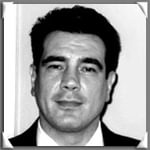
Mr. Cook, who was tried three times, was originally sentenced to death for the 1977 murder of Linda Jo Edwards. His original 1978 conviction was vacated by the U.S. Supreme Court and remanded to the Texas Court of Criminal Appeals, which then reversed the conviction in 1991. In 1992, a mistrial was declared during Mr. Cook’s second trial due to the jury’s inability to reach a unanimous verdict. Despite the disclosure of evidence previously withheld during the first trial, Mr. Cook was tried a third time, resulting in a conviction and death sentence in 1994. Once again, the Texas Court of Criminal Appeals found Mr. Cook’s right to due process was violated, reversed the conviction in 1996, and remanded the case to the trial court. Prior to what would have been his fourth trial in 1999, Mr. Cook pled “no contest” in exchange for a 20-year sentence and was released from prison for time-served. Following an alternate suspect’s recantation of his false testimony, the trial court held hearings regarding a “Stipulation and Settlement Agreement” between the state and Mr. Cook in 2016. On August 16, 2016, the trial court recommended Mr. Cook be granted relief based on the false testimony but found that the new evidence did not prove his innocence. “Marked by bookends of deception spanning over 40 years,” the Texas Court of Criminal Appeals has now found Mr. Cook to be innocent.
Sources
Zach Despart, Texas court finds Kerry Max Cook innocent of 1977 murder, ending decades-long quest for exoneration, The Texas Tribune, June 19, 2024; Read the opinion here.
Daniel Gwynn
Pennsylvania — Conviction: 1995 , Charges Dismissed: 2024

Daniel Gwynn
Courtesy of Gretchen Engel
On February 27, 2024, Common Pleas Court Judge Barbara A. McDermott approved a motion from the Philadelphia District Attorney’s Office to dismiss first-degree murder, arson, and aggravated assault charges against 54-year-old death-sentenced prisoner Daniel Gwynn. Mr. Gwynn is the 197th person exonerated after being sentenced to death since 1973, according to DPIC’s Innocence Database. Pennsylvania is now the fourth state with 13 exonerations and Philadelphia is now the second county to lead U.S. death-row exonerations since 1973.
“[T]he exoneration of Daniel Gwynn today frees a man who is likely innocent. Sadly, it also exemplifies an era of inexact and, at times corrupt, policing and prosecution that has broken trust with our communities to this day,” said District Attorney Larry Krasner, whose office has supported the exoneration of 41 wrongfully convicted people. “The public expects the right consequences for those who commit violent crimes, and wants the innocent to be free. When law enforcement wrongly arrests, prosecutes, and imprisons the innocent, the guilty go free and are emboldened to do more harm.”
Mr. Gwynn’s wrongful 1995 conviction for the 1994 death of Marsha Smith was based on false confession and mistaken eyewitness testimony. Assistant District Attorney David Napiorski, who led the federal habeas relief investigation, explains that key details of Mr. Gwynn’s confession contradicted physical evidence, including how and where the fire started and which exit of the house was used. Mr. Gwynn has also explained that his confession was coerced, writing on Art for Justice that “During the interrogation, as I was withdrawing from cocaine, the Detectives took advantage of my addled brain. They lied, manipulated information and made gestured threats to hurt me. Beaten by the police in the past, I felt their threats were real.” The photo array police showed to witnesses did not include a photo of Mr. Gwynn, according to the DA’s office, and were never disclosed to defense counsel. Prosecution also failed to disclose additional evidence pointing to a different suspect.
Sources
DA’s Federal Litigation Unit Secures Exoneration of Former Death Row Prisoner Daniel Gwynn, Philadelphia District Attorney’s Office, February 28, 2024; Jesse Bunch, Philly judge has dismissed charges against death-row inmate Daniel Gwynn in 1994 arson murder, The Philadelphia Inquirer, February 28, 2024; 6abc Digital Staff and TaRhonda Thomas, Judge throws out man’s conviction for deadly 1994 fire in West Philadelphia, February 29, 2024; Raymond Strickland, Adam Fox, Philadelphia man exonerated after nearly 30 years of imprisonment for deadly 1994 arson, CBSNews Philadelphia, February 28, 2024; Daniel Gwynn, My Story, My Art, Art for Justice, Date Unknown;
Year of Release: 2023 ⌃
Noel Montalvo
Pennsylvania — Conviction: 2003 , Charges Dismissed: 2023
On December 18, 2023, Pennsylvania dropped all homicide charges against Noel Montalvo, twenty years after he was convicted and sentenced to death in York County. Mr. Montalvo pled guilty to one count of tampering with evidence in exchange for release and one year on probation.
Mr. Montalvo’s brother Milton was convicted and sentenced to death in 2000 for the 1998 murders of his estranged common-law wife, Miriam Ascencio, and her new boyfriend, Nelson Lugo. A neighbor found Ms. Ascencio and Mr. Lugo stabbed to death the morning after the couple had gone out together to a local bar. DNA testing of over 70 items at the scene matched blood and hair to Milton but found no trace of Noel. Another neighbor saw Milton alone at Ms. Ascencio’s door that night and heard him shouting. Nonetheless, prosecutors later tried Noel for the murders and he was sentenced to death in 2003. Only one witness linked Noel to the crime, testifying that he had told her he murdered Ms. Ascencio, but the witness admitted on cross-examination that a detective had threatened her with jail time if she didn’t implicate Noel.
In 2019, a judge overturned Noel’s conviction and sentence based on his attorney’s ineffectiveness in several respects, including failing to present key mitigation evidence and challenge the trial judge’s error in jury instructions. That decision was upheld on appeal by the Pennsylvania Supreme Court in 2021. Instead of pursuing a new trial for Noel, the parties eventually reached the plea agreement for his release. Under the agreement, Noel admitted only to leaving the state with his brother on the night of the murders. The physical evidence has been retested multiple times over the years and experts have definitively excluded Noel.
Noel maintained his innocence for his entire incarceration, and Milton himself said that his brother was not involved. Interviewed outside of York County Prison after his release, Noel said that the carceral system needed to change because “too many people are really innocent” and “proof has sustained the innocence.”
Glynn Simmons
Oklahoma — Conviction: 1975 , Charges Dismissed: 2023
Glynn Simmons, who was convicted and sentenced to death in Oklahoma in 1975, has been exonerated after Oklahoma County District Attorney Vicki Behenna dropped charges against him. Mr. Simmons told The Black Wall Street Times, “I’m happy, and I’m free. It’s a long, long struggle. … We need to reimagine justice and how we do it.” DA Behenna said of the case, “One of the things that I stand by very strongly is a defendant’s right to a fair trial, where he has all the evidence to defend himself. That didn’t happen here.”
Mr. Simmons was convicted and sentenced to death for the murder of Carolyn Sue Rogers and wounding of another woman at a liquor store. Prosecutors said the surviving victim identified Mr. Simmons out of a line up, but never told the jury or defense team that she had also identified other people in the line up. In 1977, his sentence was reduced to life in prison as a result of a U.S. Supreme Court decision.
In July 2023, at the request of DA Behenna, Judge Amy Palumbo vacated Mr. Simmons’ conviction and ordered a new trial. Mr. Simmons was released on bond. On September 11, 2023, DA Behenna announced she was requesting dismissal of the case against Mr. Simmons. In a press release, she said, “the District Attorney determined the state will not be able to meet its burden at trial and prove beyond a reasonable doubt that Simmons was responsible for Ms. Rogers’ murder.” She explained that there was no longer any physical evidence in the case, witnesses and detectives were deceased or unavailable, and “The defense alleges that their alternate suspect was identified in one of the lineups.” On September 19, 2023, Judge Palumbo granted DA Behenna’s request, dismissing the charges against Mr. Simmons.
Jesse Johnson
Oregon — Conviction: 2004 , Charges Dismissed: 2023
On September 5, 2023, Jesse Johnson was released from Marion County Jail in Oregon when prosecutors formally declined to retry him for the 1998 murder of Harriet Thompson. Mr. Johnson was convicted of Ms. Thompson’s murder in 2004 and sentenced to death. In asking the Marion County Circuit Court to dismiss the case against Mr. Johnson, the county District Attorney’s office stated that “based upon the amount of time that has passed and the unavailability of critical evidence in this case, the state no longer believes that it can prove the defendant’s guilt.” Mr. Johnson was housed on death row at Oregon State Penitentiary until 2021, when the Oregon Court of Appeals overturned his case, agreeing that he had inadequate defense counsel who failed to interview a key witness. Patricia Hubbard, one of victim’s neighbors, claims that police repeatedly “dismissed her attempts to give them information” about an alternate suspect, and also claims a detective said a Black woman was murdered and Black man was “going to pay for it.”
Since his arrest, Mr. Johnson has maintained his innocence and lack of involvement in Ms. Thompson’s murder, refusing to accept any plea deals during his 25 years behind bars. There was no DNA evidence directly connecting Mr. Johnson to the murder and the prosecution relied heavily on circumstantial evidence that placed him in the victim’s home. Fingerprints were found belonging to Mr. Johnson, but his attorneys note that this only proves they knew each other, which Mr. Johnson had previously admitted. Ms. Hubbard spoke with defense investigators in 2013 while they were reinvestigating the case and told them that she saw a white man flee Ms. Thompson’s apartment on the night of her murder after she heard loud arguing. Mr. Johnson’s original defense attorneys never spoke with Ms. Hubbard and made little effort to speak with additional neighbors. Prosecutors knew about Ms. Hubbard’s testimony and the additional DNA evidence pointing towards other suspects prior to the 2021 Oregon Court of Appeals decision.
Sources
Sources: Ryan Haas and Leah Sottile, Oregon prosecutors drop murder case against Jesse Johnson, ending 25-year legal saga, Oregon Public Broadcasting, September 6, 2023; Andrew Selsky, Oregon man who was sentenced to death is free 2 years after murder conviction was reversed, Associated Press, September 6, 2023.
John Huffington
Maryland — Conviction: 1981 , Pardoned: 2023
John Huffington has been exonerated of all the charges that sent him to death row over 40 years after his initial wrongful conviction in 1981. On January 13, 2023, outgoing Maryland Governor Larry Hogan granted a full pardon to Huffington, stating that evidence conclusively showed that his “convictions were in error.”
After many appeals and two death sentences, Huffington eventually entered an “Alford Plea” in 2017, which led to a reduced sentence and eventually his release. This type of plea is used when a defendant maintains their innocence but concedes that existing evidence might result in their being found guilty.
Joseph Cassilly, the former prosecutor in Huffington’s case, was disbarred in 2021 for his actions in this and other cases. In Huffington’s case, hair found at the scene of the crime was identified using a discredited method that falsely concluded it was microscopically identical to Huffington’s hair. The FBI and the Department of Justice reviewed Huffington’s case and determined that the forensic evidence was scientifically inaccurate. Cassilly, however, withheld this exculpatory evidence from Huffington’s attorneys.
Attorneys from the Ropes & Gray law firm represented Huffington on a pro bono basis for more than 30 years. When the pardon was finally granted, Huffington stated, “I have fought for over 40 years for this day, and I feel a deep sense of closure and vindication. This pardon officially acknowledges that I was wrongly convicted and imprisoned for crimes I never committed.”
Year of Release: 2022 ⌃
Marilyn Mulero
Illinois — Conviction: 1993 , Charges Dismissed: 2022

Marilyn Mulero and two teenage girls, 15-year-old Jacqueline Montanez and 16-year-old Madeline Mendoza, were charged with luring two gang members to a Chicago park where they were shot to death, allegedly in retaliation for a prior gang killing. Mulero, who was 21, was interrogated by disgraced former Chicago detective Reynaldo Guevara, who has been implicated in framing more than fifty innocent people for murder, and former Chicago Police Detective Ernest Halvorsen. Over the course of a 20-hour period, she was denied sleep and access to counsel and threatened with the death penalty and with having her children taken away. Mulero eventually signed a statement prepared by the detectives confessing to one of the murders.
Mulero’s family retained a private lawyer to represent her who had never handled a death penalty case. The lawyer, Jeremiah Lynch, did not conduct any investigation into the murder and met with Mulero three times. After the trial court denied her motion to suppress the confession, Lynch advised her to plead guilty to first-degree murder, without first obtaining an agreement from the prosecution to drop the death penalty. Mulero pled guilty on September 27, 1993, and Lynch withdrew from the case. Cook County prosecutors continued to pursue the death penalty against her, and at a capital sentencing trial in November 1993, she became the first woman in the modern era of the U.S. death penalty to be sentenced to death in Illinois.
In May 1997, the Illinois Supreme Court overturned her conviction because her trial prosecutor had improperly cross-examined her about the suppression motion and then argued to the jury that her answers indicated a failure to express remorse. The jury in her November 1998 capital sentencing retrial sentenced her to life without parole. In January 2017, Montanez admitted that she had committed both murders and that Mulero had no involvement in the crimes. In 2019, Illinois Governor J.B. Pritzker commuted Mulero’s sentence to time served, and she was released on April 9, 2020. In August 2022, Cook County prosecutors moved to dismiss all charges against eight people, including Mulero, whom Guevara had framed for murder. The trial court formally dismissed the charges against Mulero on August 9, 2022.
Samuel Randolph, IV
Pennsylvania — Conviction: 2003 , Acquitted: 2022

Sam Randolph was convicted and sentenced to death in May 2003 on charges that he had murdered two men in a shooting in a Harrisburg, Pennsylvania bar in 2001. He was represented at trial by appointed counsel, Allen Welch, who was at the same time running for district attorney in a neighboring county. Randolph repeatedly expressed concern to the trial court that Welch was not prepared for trial and did “not have [his] best interest” in mind, and that they had irreconcilable differences regarding the approach to the case.
By the time of trial, Randolph and Welch were not speaking, and the court appointed another lawyer, who had no capital case experience, to act as an intermediary between the two. Randolph’s family attempted to sell assets so they could retain private counsel, but the sale did not go through until a week before trial. Retained counsel sought a continuance to prepare for trial, which the trial court denied. The court then refused counsel’s request to delay jury section for a few days to permit counsel to review the discovery in the case, and ultimately refused to delay the start of jury selection more than hour even though retained counsel had a pre-scheduled proceeding in the Pennsylvania Supreme Court that morning. Represented by Welch, Randolph was convicted. Randolph represented himself in the penalty phase. Saying he had been denied counsel of choice at trial, he refused to present any mitigating evidence and was sentenced to death.
In federal habeas corpus proceedings, Randolph alleged that the murders were actually committed by one local group of drug dealers in retaliation for a prior killing by a rival group. Police and prosecutors withheld exculpatory evidence that, during a search of a house owned by one of the drug dealers, they had recovered clothing resembling what eyewitnesses said the killers had worn during the shooting. Another witness came forward with evidence that the second victim killed in the bar had been shot by accident when one of his associates returned fire at the gunmen.
The federal district court held an evidentiary hearing on Randolph’s innocence claim, but did not reach the issue, instead granting him a new trial on his claim that he had been denied counsel of choice. The U.S. Court of Appeals for the Third Circuit affirmed that ruling on July 20, 2021. On April 4, 2022, the U.S. Supreme Court denied prosecutors’ petition for review and, two days later, on April 6, 2022, the Dauphin County District Attorney filed an application to discontinue the prosecution.
Year of Release: 2021 ⌃
Barry Williams
California — Conviction: 1986 , Charges Dismissed: 2021
Barry Williams was convicted and sentenced to death in 1986 for an allegedly gang-related murder in Los Angeles. His conviction rested on the false testimony of two prison informants, Arthur Cox and John Gardner, who claimed that Williams had admitted to involvement in the murder, and false testimony from an alleged eyewitness. Both informants later recanted. Cox said that prosecutors threatened to prosecute him as an accessory to another murder for which Williams was also charged, as well as for an unrelated robbery. In exchange for his testimony against Williams, the prosecution gave him cash, granted him immunity in the unrelated murder case, and arranged for early release from a marijuana charge. But at trial, he denied the existence of any deal. Gardner later said that prosecutors had pressured him into testifying and coached his false testimony, telling him “either Barry was going to do time for the murder or I was going to do time for the robbery.”
During federal habeas corpus proceedings, Williams’ lawyers presented evidence that prosecutors had withheld significant exculpatory evidence including that: a taped interview with the alleged eyewitness contradicted much of her trial testimony and that prosecutors threatened to charge her when she expressed reluctance to identify Williams; numerous documents that undermined both the substance of Gardner’s testimony and memorialized undisclosed favorable treatment he received for his testimony; numerous undisclosed benefits Cox received for his cooperation in the case; evidence related to both informants’ drug usage; threatening another witness with the death penalty if he did not cooperate with the prosecution; and false testimony by several Los Angeles police detectives and a Los Angeles county judge.
On March 29, 2016, the federal district court overturned Williams’ conviction because of prosecutorial misconduct. The court found that the prosecution had presented perjured testimony in a pretrial hearing in which Williams’ trial counsel had moved to bar Cox’s testimony on the grounds that Cox was an agent of the state who attempted to obtain information for police and prosecutors in violation of Williams’ right to counsel. It further found that prosecutors had presented perjured identification testimony from the alleged eyewitness. In both instances, the court found that prosecutors knew or should have known the testimony had been false.
On January 15, 2021, the Los Angeles District Attorney’s office dismissed the case against Williams, exonerating him of all charges. He remains incarcerated on an unrelated murder conviction.
Eddie Lee Howard
Mississippi — Conviction: 1994 , Charges Dismissed: 2021

Eddie Lee Howard was convicted and sentenced to death in 1994 for the alleged rape and murder of an 84 year-old white woman. He represented himself at trial. The Mississippi Supreme Court overturned his conviction in 1997 and ordered a new trial. He was convicted and sentenced to death again in a retrial in 2000 at which forensic odontologist Dr. Michael West testified that Howard was the source of bite marks West claimed to have found on the victim’s body during a post-autopsy, post-exhumation examination. Forensic pathologist Dr. Steven Hayne conducted the autopsy in the case and claimed that the victim had been beaten, strangled, stabbed, and raped. His initial autopsy report did not mention bite marks.
Howard’s lawyers presented DNA evidence during post-conviction evidentiary hearings in 2016 that eviscerated the prosecution’s false forensic testimony. DNA testing showed no evidence of semen or male DNA on the victim’s clothing, bedsheets, or body and no male DNA on the locations on the victim’s body where she supposedly had been bitten. None of the blood or other items tested contained Howard’s DNA. Male DNA found on the knife used by the murderer excluded Howard as the source.
The Mississippi Supreme Court overturned Howard’s conviction in August 2020, 26 years after he was first sentenced to death. In an 8 – 1 decision, the court held that the discredited bite-mark testimony, exculpatory DNA evidence, “and the paucity of other evidence linking Howard to the murder” entitled him to a new trial.
Howard was freed pending retrial in December 2020 and on January 8, 2021, the trial court granted a motion by Lowndes County District Attorney Scott Colom to dismiss all charges against Howard. “After reading the supreme court’s opinion, reading the trial transcripts from the two trials, reviewing the investigative files and case files of the case, I decided that we didn’t have even remotely close to sufficient evidence to convict Mr. Howard beyond a reasonable doubt,” Colom said.
Sherwood Brown
Mississippi — Conviction: 1995 , Charges Dismissed: 2021
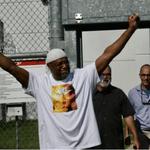
n August 2021, Sherwood Brown was exonerated of a triple murder that sent him to Mississippi’s death row in 1995.
Brown was sentenced to death for the murder of 13-year-old Evangela Boyd and received two life sentences for the murders of her mother and grandmother. His convictions and death sentence rested in substantial part on false expert forensic testimony, as well as the perjured testimony of a jailhouse informant. The informant was facing serious charges for car theft when he claimed Brown had confessed to the murders. Prosecutors argued that blood found on the sole of one of Brown’s shoes came from the victims, and two forensic bitemark analysts falsely claimed that a cut on Brown’s wrist was a bitemark that matched the girl’s bite pattern.
DNA evidence later contradicted the prosecution’s narrative. The evidence showed that bloody footprints in and around the murder scene contained only female DNA and the blood spot on Brown’s shoe contained only male DNA. DNA testing on a swab of Boyd’s saliva did not contain Brown’s DNA, refuting the claim that she had bitten Brown. DNA tests on the sexual assault kit collected during the autopsy found no DNA from Brown but showed that Evangela Boyd’s pubic hair and her bra contained DNA from unidentified males. A forensic scientist from the Mississippi Crime Laboratory found that none of the hair evidence recovered from the clothing and bodies of the victims had any microscopic characteristics similar to Brown’s hair. A crime lab fingerprint analyst also found that none of the fingerprints found at the scene belonged to Brown.
Based on this evidence, the Mississippi Supreme Court overturned Brown’s conviction and death sentence in October 2017. However, Brown remained in custody facing possible capital retrial as prosecutors attempted to build another case against him. With Brown in county pretrial custody, four more laboratories tested the DNA evidence over the course of three more years. Each came back with the same results. “Every time, there was nothing incriminating Sherwood,” said one of Brown’s attorneys after his exoneration. “The state was trying to find something to incriminate Sherwood, but every time they did, it kind of stumped them deeper.”
Finally, on August 24, Mississippi Circuit Court Judge Jimmy McClure granted a prosecution motion to dismiss charges against Brown. He was released later that day after having spent 26 years on death row or facing the prospects of a capital retrial.
Year of Release: 2020 ⌃
Roderick Johnson
Pennsylvania — Conviction: 1997 , Charges Dismissed: 2020
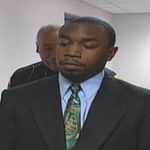
Roderick Johnson was exonerated on December 1, 2020, when Berks County Court of Common Pleas Judge Eleni Dimitriou Geishauser dismissed all charges against him in the 1996 double-murder of cousins Damon and Gregory Banks in Reading, Pennsylvania and issued an order discharging him from custody. Judge Geishauser called the prosecutorial misconduct in Johnson’s case “egregious” and “contemptuous.“
Johnson was convicted based largely on the testimony of drug dealer and police informant, George Robles, who had repeatedly avoided having criminal charges filed against him by cooperating with law enforcement in other cases. Though Johnson admitted being present at the crime scene, he denied any involvement in the murders. Robles claimed that Johnson owned a handgun like the one used in the crimes and that Johnson had confessed to wiping it down and disposing of it on the night the Bankses were killed. District Attorney Mark Baldwin suppressed police records documenting Robles’ uncharged criminal activity and his cooperation with police, and, according to Judge Geishauser, “blatantly lied about his knowledge of the reports directly to the court.”
“Had these acts been committed by a witness,” Judge Geishauer wrote, “the individual could have been, and in all likelihood would have been, charged with obstruction of justice. Had these acts been committed by defense counsel, in addition to charges, a disciplinary action would have been initiated that would potentially result in the suspension or loss of legal license. Mr. Baldwin’s position as District Attorney seems to have protected him from such censure. But in this matter, all men are equal before the law and this court renders judgment of Mr. Baldwin’s egregious behavior.”
Robert DuBoise
Florida — Conviction: 1983 , Charges Dismissed: 2020

A Hillsborough County, Florida trial court exonerated Robert DuBoise on September 14, 2020, dismissing all charges against him 37 years after he was wrongfully convicted and sentenced to death for rape and murder.
DuBoise was convicted of raping and murdering 19-year-old Barbara Grams based on junk-science bite-mark evidence and false testimony from a prison informant. The jury unanimously recommended that DuBoise be sentenced to life, but his trial judge, Henry Lee Coe III, overrode their recommendation and sentenced DuBoise to death. In February 1988, the Florida Supreme Court overturned DuBoise’s death sentence, ruling that the trial court should not have overridden the jury’s sentencing recommendation and directing that DuBoise be resentenced to life imprisonment.
DuBoise remained wrongly incarcerated until August 27, 2020, one day after Hillsborough prosecutors and lawyers from the national Innocence Project and the Innocence Project of Florida presented Circuit Judge Christopher Nash with evidence of his innocence. Working with State Attorney Andrew Warren’s Conviction Integrity Unit, the parties told the court that there was in fact no bite mark and that DNA evidence from an untested rape kit excluded DuBoise and implicated two other men. Judge Nash reduced DuBoise’s sentence to time served and set a September 14 hearing date for the presentation of evidence to overturn his conviction.
Curtis Flowers
Mississippi — Conviction: 1997 , Charges Dismissed: 2020
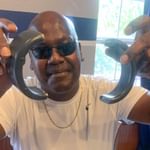
On September 4, 2020, following six trials marred by prosecutorial misconduct and racial prejudice, Curtis Flowers was exonerated of the July 1996 murders of four employees of a white-owned furniture store in Winona, Mississippi. Fifth Circuit Court District Attorney Doug Evans tried all six cases before withdrawing from the case in January 2020. After an independent investigation, the Mississippi Attorney General’s office filed a motion on September 4, 2020 to dismiss all charges against Flowers, with prejudice, and the trial court granted the motion.
Evans first prosecuted Flowers for the murder of one of the victims in October 1997. An all-white jury sentenced Flowers — who is African American — to death. While Flowers’ appeal of his conviction in that trial was pending, Evans tried Flowers in March 1999 for the murder of a second victim. Just before that trial, Flowers’ parents’ house burned down and his mother was told of a threat made by a white resident that, “If they let that n — — - go, another house is going to burn.” This time, a jury of 11 white jurors and one black juror convicted Flowers and sentenced him to death.
In separate rulings in 2000 and 2003, the Mississippi Supreme Court overturned both convictions, both times citing prosecutorial misconduct. Evans proceeded to try Flowers a third time in February 2004, again with a jury composed of 11 white jurors and one black juror. Flowers was again convicted and sentenced to death. The Mississippi Supreme Court then overturned that conviction, this time citing Evans’ discriminatory use of jury strikes against African Americans.
Jurors deadlocked in Flowers’ fourth and fifth trials in November 2007 and September 2008, split along racial lines. Evans again personally prosecuted both trials. The seven white jurors in the fourth trial and the nine white jurors in the fifth trial voted for death. The five black jurors in the fourth trial and three black jurors in the fifth trial voted for life. Only one black juror served on the sixth jury in 2010 — again prosecuted by Evans — and Flowers was sentenced to death a fourth time in that trial.
While it was working its way through the appeals process, the Flowers case became the subject of an American Public Media podcast, APM Reports’ In the Dark. The podcast uncovered new evidence questioning Flowers’ guilt, including evidence pointing to another suspect and a taped admission from jailhouse informant Odell Hallmon — the state’s star witness who had testified that Flowers had confessed to the murders — that “He ain’t never tell me that. That was a lie. … Everything was all make-believe on my part.”
APM also conducted a study of prosecutors’ exercise of discretionary jury strikes in 225 trials between 1992 and 2017 during Evans’ tenure as Fifth Circuit Court District Attorney, finding that prosecutors in Evans’ office excluded African Americans from jury service at nearly 4½ times the rate at which they struck white jurors. On June 21, 2019, the U.S. Supreme Court overturned Flowers’ conviction again based on Evans’ racially discriminatory jury selection practices. Justice Brett Kavanaugh wrote that Evans’ “relentless, determined effort to rid the jury of black individuals strongly suggests that the State wanted to try Flowers before a jury with as few black jurors as possible, and ideally before an all-white jury.”
Kareem Johnson
Pennsylvania — Conviction: 2006 , Charges Dismissed: 2020

Kareem Johnson was exonerated on July 1, 2020, when a Philadelphia trial court formally entered an order dismissing all charges against him in his capital case. On May 19, 2020, the Pennsylvania Supreme Court had barred his reprosecution because of prosecutorial misconduct that it said exhibited a conscious and reckless disregard for his right to a fair trial.
Johnson’s wrongful conviction and death sentence were a product of official misconduct, false forensic evidence, and ineffective representation. He was convicted and sentenced to death in 2007 based upon evidence and argument falsely informing the jury that DNA evidence had linked him to the murder. The prosecution, police, and a prosecution forensic analyst told the jury that Johnson had shot the victim, Walter Smith, at such close range that Smith’s blood spattered onto a red baseball cap Johnson was wearing that supposedly had been recovered at the murder scene. Philadelphia homicide prosecutor Michael Barry falsely linked Johnson to the murder through the hat, telling jurors in his opening statement that it “was left at th[e] scene in the middle of the street [and] has Kareem Johnson’s sweat on it and has Walter Smith’s blood on it.”
Officer William Trenwith then testified that he had found the hat laying 8 – 10 feet from Smith’s body. He further told the jury that, in his years of investigating homicide, he had never seen blood travel that far a distance from a victim’s body. Based on that testimony, Barry told jurors: “We know that he [Kareem Johnson] got in real close, within 2½ feet, close enough so that Walter Smith’s blood could splash up onto the bill of the cap he was wearing.” Barry argued: “Do you know who says the killer wore the hat? Walter Smith says the killer wore the hat. He says it with his blood.”
In fact, there was no blood on the red hat, nor did the police property receipt for the hat contain any indication of blood. Smith’s blood was actually on a second hat — a black hat he was wearing at the time he was shot in the head. The DNA reports for the red hat also raised questions about the sweat stain attributed to Johnson. The initial DNA report on the sweat stain — which was supplemented twice without explanation — did not link the hat to Johnson.
When post-conviction counsel for Johnson discovered the discrepancies in the evidence, police and prosecutors claimed to have mixed up the hats. The Philadelphia DA’s office agreed that Johnson’s conviction should be overturned but stipulated to its reversal in April 2015 based only “on ineffective assistance of counsel at the guilty-innocence phase of trial.” Prosecutors insisted at the time of the stipulation that Johnson “agree[ ] to withdraw all other claims … including claims alleging prosecutorial misconduct of District Attorney Michael Barry.”
The Pennsylvania Supreme Court ruled on May 19, 2020 that the prosecutorial misconduct in the case violated the double jeopardy protections of the Pennsylvania constitution. The court ruled that Philadelphia prosecutors had engaged in misconduct that denied Johnson a fair trial and was “undertaken recklessly, that is, with a conscious disregard for a substantial risk that such will be the result.”
Walter Ogrod
Pennsylvania — Conviction: 1996 , Charges Dismissed: 2020

Walter Ogrod was exonerated from Pennsylvania’s death row on June 10, 2020, 28 years after being arrested for the murder of four-year-old Barbara Jean Horn and 23 years after being wrongfully convicted and sentenced to death. Barbara Jean Horn was murdered in 1988, her body discovered in a cardboard box the killer placed on the street for trash collection. The case was unsolved for four years before being reassigned to Detectives Martin Devlin and Paul Worrell, two Philadelphia homicide detectives who had undisclosed history of coercing false confessions. No physical evidence linked Ogrod to the murder, but after being sleep deprived over the course of 14 hours of interrogation, he confessed to having beaten the young girl to death with an exercise barbell.
Even with the confession, the prosecution case was weak, and the jury in Ogrod’s 1993 trial was prepared to acquit him. However, as the court was preparing to read the verdict, one juror changed his mind. With the jury hung at 11 – 1, the court declared a mistrial. Before Ogrod’s second trial in 1996, prosecutors engaged the assistance of John Hall, a notorious jailhouse informant whom they nicknamed “the Monsignor,” who gathered newspaper articles about the case and had his wife write to Ogrod, posing as a stripper, trying to obtain information. Hall then fed information to another jailhouse informant, Jay Wolchansky, who also falsely claimed that Ogrod had confessed to him. Based on the confession and the informant testimony, Ogrod was sentenced to death.
After reviewing the case, the Philadelphia District Attorney’s Conviction Integrity Unit reported that Ogrod’s conviction had been “a gross miscarriage of justice,” marred by police and prosecutorial misconduct, false forensic testimony, and fabricated informant testimony. The CIU said prosecutors had known at the time of trial that Barbara Jean had died of asphyxia and had not been beaten to death, but withheld the medical examiner’s report and presented false testimony on the cause of death. They also failed to disclose what the CIU called a “snitch scheme” to fabricate a confession, and withheld information on benefits provided to the informants, Wolchansky’s mental illness, and Hall’s informant history. New DNA testing was conducted on the physical evidence, which “produced a full male DNA profile suitable for comparison” that excluded Ogrod as a contributor. The CIU and defense counsel jointly moved the court to overturn Ogrod’s conviction. He was granted a new trial and released on bail on June 5, 2020, and all charges against him were dropped on June 10.
Paul Browning
Nevada — Conviction: 1986 , Charges Dismissed: 2020

Paul Browning was convicted and sentenced to death in 1986 for the robbery and murder of Las Vegas jeweler, Hugo Elson. Browning was represented at trial by a lawyer who had been practicing criminal defense for less than a year and failed to interview the police who responded to the scene, examine the evidence against Browning, or investigate the crime. The Nevada Supreme Court overturned Browning’s death sentence in 2004 as a result of counsel’s ineffective assistance in the penalty phase of trial, but a second jury — hearing the same evidence against him — resentenced him to death in 2007.
In his post-conviction appeal, Browning presented evidence that police and prosecutors had withheld evidence of a bloody footprint found at the scene that did not match Browning’s shoes or foot size, misrepresented blood evidence in the case, manipulated eyewitness testimony, failed to disclose benefits it offered to a key witness who may have committed the murder and framed Browning, and that the stab wounds suffered by the victim were inconsistent with wounds that would have been produced by the knife prosecutors claimed Browning had used to commit the killing. Browning also argued that a minimally competent defense investigation would have revealed the flaws in the prosecution’s evidence and the falsity of the representations the prosecution had made to the jury.
The prosecution’s case unraveled in the post-conviction proceedings. Prosecutors told the jury that Elsen’s blood had been found on a tan jacket owned by Browning. Elsen, however, had survived long enough to give police a description of his assailant, whom he said had worn a blue jacket. Later DNA testing showed that of the blood on Browning’s jacket was not Elsen’s. Elsen also said his assailant had shoulder-length Jheri curls, which was completely inconsistent with Browning’s Afro-styled hair. Elsen’s wife failed to identify Browning in a lineup, but later testified at trial that he was the killer. A white witness who worked near the crime scene told police she had seen a man run by after the murder and thought it could have been Browning, but when police asked if she could be “more sure” about whom she had seen, she said, “No, I wouldn’t think so. No … They all look the same, and that’s just what I think when I see a black person, that they all look the same.” At trial, though, she unhesitatingly testified that Browning was the man she had seen.
In 2017, the U.S. Court of Appeals for the Ninth Circuit overturned Browning’s conviction. Then, in March 2019, Clark County District Judge Douglas Herndon dismissed the charges against Browning saying the deaths of key witnesses made it impossible for him to receive a fair trial. The Nevada Supreme Court affirmed Judge Herndon’s decision on January 24, 2020.
Sources
Read: Rachel Crosby, Inmate released from Nevada prison after decades on death row, Las Vegas Review-Journal, August 21, 2019.
David Ferrara, Man with dismissed murder conviction still on death row in Nevada, Las Vegas Review-Journal, August 8, 2019.
Read the federal appeals court opinion in Browning v. Baker, No. 15 – 99002 (9th Cir. 2017).
Year of Release: 2019 ⌃
Christopher Williams
Pennsylvania — Conviction: 1993 , Charges Dismissed: 2019

On December 23, 2019, correcting what it characterized as “decades” of misconduct, the Philadelphia District Attorney’s Office dropped all charges against Christopher Williams, who had been on death row for 26 years. Williams and a 17-year-old co-defendant, Theophalis Wilson, had been wrongfully convicted in August 1993 of a triple murder committed in North Philadelphia in 1989.
The two men’s convictions rested on the perjured testimony of a Commonwealth informant and the deliberate suppression of exculpatory evidence by former Philadelphia prosecutors. The state’s key witness was James White, who cooperated with the prosecution in exchange for avoiding capital prosecution for six different murders. White provided purportedly eyewitness testimony that Williams had shot one of the victims in the face and that several men threw the bodies of the victims out of a moving car. White later recanted his testimony, saying that prosecutors had met with him several times before Williams’ and Wilson’s trials and provided him with fabricated information for his testimony.
In December 2013, a Philadelphia trial court overturned Williams’ conviction based upon forensic and medical evidence showing that White’s version of how the murder occurred was physically impossible. It found that Williams’ trial lawyer had failed to investigate the crime scene or retain necessary forensic experts and ineffectively failed to present expert evidence to challenge White’s “eyewitness” testimony. On appeal, the Pennsylvania Supreme Court wrote that “[t]his [expert] testimony, if believed by the jury, coupled with the other evidence impeaching White’s credibility, would likely have changed the jury’s mind and resulted in Williams’ acquittal of the three murders.”
While Williams was awaiting retrial, Philadelphia elected a new district attorney who created an active Conviction Integrity Unit. The CIU began investigating Wilson’s case and later expanded its review to Williams’ trial. In 2019, the CIU provided defense lawyers more than 40,000 pages of documents in the case, most of which had previously been withheld from the defense at trial and throughout the appeals process. In its motion to drop the charges against Williams, the CIU wrote that the prior prosecutors in the case, who had been fired, had withheld “a plethora of significant material, exculpatory evidence,” including “evidence that contradicted White’s account; impeached other witnesses; inculpated other specific individuals; and indicated that the victims in this case were caught in an ongoing dispute between two extremely violent gangs, either of which may have been responsible for their deaths.”
The trial court granted the prosecution’s motion to “nolle pros” the charges against Williams, and, on January 21, 2020, charges were also dropped against Wilson. Williams remains in custody for a separate murder conviction obtained by the same homicide prosecutor with testimony from the same informant.
Sources
Samantha Melamed, A brutal triple murder, an eager informant, hidden evidence, and now, exoneration, The Philadelphia Inquirer, January 8, 2020.
Samantha Melamed, A ‘perfect storm’ of injustice: Philly man freed after 28 years as DA condemns ‘decades’ of misconduct, The Philadelphia Inquirer, January 21, 2020.
Read the Pennsylvania Supreme Court's July 19, 2016 opinion in Commonwealth v. Williams and the Philadelphia District Attorney's December 18, 2019 Motion for Nolle Prosequi.
Charles Ray Finch
North Carolina — Conviction: 1976 , Charges Dismissed: 2019
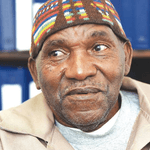
Charles Ray Finch, wrongly convicted and sentenced to death in 1976 based upon false forensic testimony and an eyewitness identification manipulated by police misconduct, was exonerated June 14, 2019. In July 1976, Finch had been convicted by a Wilson County, North Carolina of shooting a store clerk to death during an attempted robbery. The charges carried an automatic death sentence. The same day he was formally sentenced, the U.S. Supreme Court decided Woodson v. North Carolina, which declared mandatory death sentences unconstitutional. Based on that decision, the North Carolina Supreme Court reversed Finch’s death sentence and directed that he be resentenced to life without parole.
Finch was identified by an eyewitness, Lester Floyd Jones, in three suggestive police line-ups in which police had him wear a three-quarter length jacket that was the same style of clothing that a store employee had said the perpetrator was wearing. No other person in the line-up was similarly dressed. Finch did not resemble the initial description that Jones — an alcoholic with cognitive impairments and problems with short-term memory — had given police. At the time of the murder, Finch had a long beard and distinctive sideburns, and by the time of his testimony, he changed his description of the shooter to match Finch.
Jones also had told police that the killer had been armed with a sawed-off shotgun and a state forensic witness testified at the trial that the victim had died from two shotgun wounds. When police arrested Finch, they found a shotgun shell in his car and the prosecution claimed that this shell matched the bullet casings found at the murder scene. A review of the autopsy evidence decades after the crime disclosed that the victim had been killed with a pistol, not a shotgun and new ballistics evidence contradicted the prosecution testimony that the bullets at the scene matched the shotgun shell from Finch’s car.
Three alibi witnesses testified that Finch had been playing poker with them at the time of the shooting. Several witnesses for the prosecution later indicated they had been pressured into providing false testimony implicating Finch.
On January 25, 2019, the U.S. Court of Appeals for the Fourth Circuit found Finch “actually innocent” of the murder and remanded his case to the federal district court to consider evidence that the prosecution had withheld exculpatory evidence in the case. The federal district court vacated Finch’s conviction on May 23, 2019 and ordered the 81-year-old’s immediate release from prison, giving the state 30 days to decide whether to retry him. On June 14, 2019, the Wilson County District Attorney dismissed all charges in the case, completing Finch’s exoneration.
Sources
Rose Wang, Free after 43 years: How Duke's Wrongful Convictions Clinic freed an innocent man, The Duke Chronicle, June 23, 2019.
Olivia Neeley, Judge orders Finch to be released, The Wilson Times, May 23, 2019.
Olivia Neeley, Federal court rules in Finch’s favor, The Wilson Times, January 28, 2019.
Josh Shaffer, He’s spent 43 years in prison. Now judges call his murder conviction a ‘miscarriage of justice.’, Raleigh News & Observer, January 30, 2019.
Clifford Williams, Jr.
Florida — Conviction: 1976 , Charges Dismissed: 2019
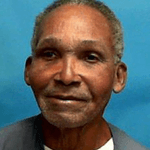
Forty-two years after he and his nephew were wrongfully convicted of murder in Florida and he was sentenced to death, Clifford Williams, Jr. has been exonerated. Submitting a report from its Conviction Integrity Unit that found “no credible evidence of guilt and … credible evidence of innocence,” Duval County prosecutors asked a Jacksonville trial court to dismiss all charges against Williams, now 76 years old, and his nephew, Nathan Myers, now 61. Williams is the 165th former death-row prisoner to be exonerated in the United States since 1973.
Williams and Myers were tried and convicted in 1976 for the murder of Jeanette Williams and the wounding of her girlfriend, Nina Marshall. Marshall told police that two men had entered their bedroom at night and fired shots from the foot of the bed. She identified Williams and Myers as the shooters. However, the physical evidence — never presented by defense counsel — revealed that the bullets had been fired from outside, through the bedroom window, and had come from a single gun. Defense counsel also ignored forty alibi witnesses whom Williams and Myers had indicated would be able to testify that they had been next door at a birthday party at the time the shooting occurred. The defense presented no witnesses. The first trial resulted in a mistrial. In the second trial, which lasted two days, prosecutors argued, without presenting any supporting evidence, that the men committed the murder because Jeannette Williams supposedly owed them a $50 drug debt. The jury convicted Williams and Myers but recommended that they be sentenced to life. Judge Cliff Shepard — a notoriously harsh trial judge — overrode the jury’s sentencing recommendation for Williams and sentenced him to death. Shepard accepted the life recommendation for 18-year-old Myers.
Prosecutors began reinvestigating the case after newly elected State Attorney Melissa Nelson created the first Conviction Integrity Unit in the state in 2018. The unit issued its report, authored by Conviction Integrity Review Director Shelley Thibodeau, in February. The report noted that no physical evidence linked Williams or Myers to the shooting and that “the physical and scientific evidence actually contradicts [Marshall’s] testimony about what happened.” The report also found that another man, Nathaniel Lawson, had confessed to several people that he had committed the killings and that a 1976 police report noted his presence near the crime scene around the time of the murder. Thibodeau concluded that “[t]he culmination of all the evidence, most of which the jury never heard or saw, leaves no abiding confidence in the convictions or the guilt of the defendants.”
Williams had been trying unsuccessfully for years to get anyone interested in the case, and responded emotionally after the hearing. “My mother died while I was on death row,” he told Florida Times-Union reporter Andrew Pantazi. Through tears, he said, “I just wanted to get out and see my kids. There wasn’t nobody but them.”
Twenty-nine wrongfully convicted death-row prisoners have been exonerated in Florida, the most in the nation. In 21 of the 23 Florida exonerations for which the jury’s sentencing vote is known, judges imposed the death penalty by overriding a jury recommendation for life or following a non-unanimous jury recommendation for death. Florida now requires a unanimous jury recommendation before a judge can impose a death sentence.
Sources
Andrew Pantazi, Jacksonville men freed 43 years after wrongful murder conviction, a first for a Florida conviction review unit, The Florida Times-Union, March 28, 2019.
Mike Schneider, Florida man and nephew who spent 42 years in prison cleared of murder, Associated Press, March 28, 2019.
Jim Piggott, Wrongly convicted of murder: 2 men freed after 42 years in prison, WJXT News4, Jacksonville, March 28, 2019.
Year of Release: 2018 ⌃
Clemente Javier Aguirre
Florida — Conviction: 2006 , Charges Dismissed: 2018

With newly discovered confessions and DNA evidence pointing to the prosecution’s chief witness as the actual killer, Seminole County, Florida prosecutors dropped all charges against Honduran national Clemente Javier Aguirre. Aguirre was convicted and sentenced to death in 2006 of the murder of two neighbors — an elderly woman and her adult daughter — in 2004. He steadfastly maintained his innocence, saying he had discovered the women after they had been killed. He did not report the murders to authorities, he said, because he was an undocumented immigrant and feared deportation. The prosecution’s chief witness against Aguirre was Samantha Williams, the mentally ill daughter and grand-daughter of the victims. During the post-conviction process, Aguirre’s lawyers discovered that Williams had confessed to at least five different people that she had killed her relatives. None of the DNA found on the 84 items from the crime scene that were tested matched Aguirre. Most blood samples matched the two victims, and Samatha Williams’s DNA was found on eight bloodstains collected from four different rooms — including in the bathroom where the state had argued at trial that the killer would have cleaned up. Each of Williams’s samples was found inches away from the victims’ blood. On October 27, 2016, the Florida Supreme Court unanimously vacated Aguirre’s conviction and granted him a new trial.
Aguirre was sentenced to death by the trial judge despite non-unanimous 7 – 5 and 9 – 3 jury votes for death in the two murders. 20 of the 22 Florida exonerations for which researchers have been able to determine the jury vote have involved judges imposing the death penalty despite a jury recommendation for life or after a non-unanimous jury recommendation for death.
Sources
Innocent Man Who Spent Over a Decade on Florida’s Death Row is Exonerated, Innocence Project, November 5, 2018
R. Stutzman, Court overturns death sentence, conviction in double homicide, Orlando Sentinel, October 27, 2016
Unanimous Florida Supreme Court Reverses Conviction of Man on Death Row Based on New DNA Evidence Pointing to Alternate Suspect, Innocence Project, October 27, 2016
Vicente Benavides
California — Conviction: 1993 , Charges Dismissed: 2018
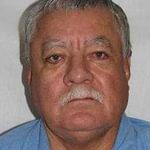
Vicente Benavides Figueroa, wrongly convicted and sentenced to death in 1993 on charges that he had raped, anally sodomized, and murdered his girlfriend’s 21-month-old daughter, was exonerated on April 19, 2018. A trial court in Kern County, California formally dismissed all charges against Benavides, a Mexican national, two days after Kern District Attorney Lisa Green said her office would not be seeking a retrial. The California Supreme Court had granted the former farmworker a new trial in March 2018, calling his convictions for sexually assaulting and murdering Consuelo Verdugo a product of “extensive,” “pervasive,” “impactful,” and “false” forensic testimony. The girl, the court said, had never been sexually assaulted and may actually have died from being hit by a car. At trial, the prosecution presented testimony that the toddler had died from “blunt force penetrating injury of the anus” caused by rape and multiple arm injuries, internal trauma, dilated pupils, and compression rib fractures “caused by tight squeezing during a sexual assault.” In post-conviction proceedings, Benavides’s lawyers presented evidence from a leading expert on child abuse characterizing the prosecution’s assertion that the child’s injuries had been the product of sexual assault as “so unlikely to the point of being absurd. … No such mechanism of injury has ever been reported in any literature of child abuse or child assault.” Rather, Dr. Astrid Heger said, the internal injuries the toddler sustained were commonly seen in victims of automobile accidents. Hospital records that were never presented at trial showed that the examining physicians from Consuelo’s initial hospitalization had not seen any signs of bleeding when she was brought to the emergency room, and a nurse who helped treat the child reported that neither she nor any of her colleagues had seen evidence of anal or vaginal trauma when the Consuelo arrived at the hospital. The medical records reflected that the injuries to Consuelo’s genitalia and anus that the prosecution expert had attributed to sexual assault were actually a product of unsuccessful medical intervention, including repeated failed efforts to insert a catheter and the improper use of an adult-sized catheter on the small child. During oral argument, Associate California Supreme Court Justice Carol Corrigan — a former prosecutor — described the forensic testimony that Benavides had brutally raped and anally sodomized Consuelo as “among the most hair-raising false evidence that I’ve encountered in all the time that I’ve been looking at criminal cases.”
Sources
Death row inmate Vicente Benavides released from custody Thursday after charges dismissed, The Bakersfield Californian, April 19, 2018
Jason Kotowski, Delano man whose murder conviction in death of 21-month-old girl was overturned last month will not be retried, April 17, 2018
Bakersfield Now Staff, Kern DA won’t retry overturned murder case, KMPH Fox 26, April 17, 2018
California death row inmate to be freed; no retrial planned, Associated Press, April 17, 2018.
Year of Release: 2017 ⌃
Rickey D. Newman
Arkansas — Conviction: 2002 , Charges Dismissed: 2017
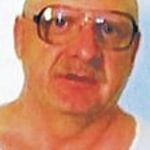
An Arkansas trial judge dismissed all charges against former death-row prisoner, Rickey Dale Newman on October 11, 2017, after nearly 16 years in prison for the February 2001 murder of a transient woman in a “hobo park” on the outskirts of Van Buren, Arkansas. A former Marine with major depression, chronic posttraumatic stress disorder from childhood abuse, and an IQ in the intellectually disabled range, Newman was seriously mentally ill and homeless at the time he was charged with murdering Marie Cholette. After falsely confessing to interrogators, the court found him competent to stand trial and to represent himself. He was convicted and sentenced to death in June 2002 after a one-day trial in which Newman told the jury he had committed the murder and asked them to impose the death penalty. No physical evidence linked Newman to the murder and DNA evidence on the blanket on which the victim was found excluded Newman, but a prosecution expert falsely testified that hair found on Newman’s clothing had come from the victim. Newman subsequently sought to waive his appeals and be executed. However, four days before his scheduled execution on July 26, 2005, Newman permitted federal public defenders to seek a stay of execution and the lawyers obtained DNA testing of the hair evidence that disproved the prosecution’s trial testimony. They also discovered that prosecutors had withheld from the defense evidence from the murder scene that contradicted what Newman had described in his confession. A federal court hearing also provided evidence that the state’s mental health doctor had made significant errors in administering and scoring tests he had relied upon in testifying that Newman had been competent to stand trial.
The Arkansas Supreme Court subsequently ordered new hearings on Newman’s competency and on the evidence the prosecution had withheld from the defense. After those hearings, it wrote that “the record overwhelmingly illustrates that Newman’s cognitive deficits and mental illnesses interfered with his ability to effectively and rationally assist counsel” and overturned his conviction. In September 2017, it issued another ruling barring the use of Newman’s incompetent confessions in any retrial. The prosecution then asked for the charges to be dismissed, noting that, without the false confession, prosecutors lacked sufficient evidence to obtain a conviction and “it would be a waste of tax payers money to retry [Newman].”
Sources
D. Hughes, Former Arkansas death row inmate freed after 16 years in custody; charges dropped in mutilation case, Arkansas Democrat-Gazette, October 12, 2017
J. Lovett, Death row inmate Rickey Dale Newman walks free; 2001 murder charges dropped, Southwest Times Record, October 11, 2017
K. Sherrell, Arkansas Death Row Inmate Walks Free After Nearly 17 Years In Prison, KFSM 5 News, October 11, 2017.
Read the Arkansas Supreme Court decisions granting Mr. Newman an evidentiary hearing and overturning his conviction.
Gabriel Solache
Illinois — Conviction: 2000 , Charges Dismissed: 2017

Former Illinois death-row prisoner Gabriel Solache, a Mexican national whose death sentence was one of 157 commuted by Governor George Ryan in January 2003, was exonerated on December 21, 2017 after twenty years of wrongful imprisonment, but immediately seized by agents of the U.S. Immigration and Customs Enforcement Agency. Cook County prosecutors dropped charges against Solache and his co-defendant Arturo DeLeon-Reyes after Circuit Court Judge James Obbish overturned their convictions, finding that disgraced Chicago detective Reynaldo Guevara had told “bald-faced lies” under oath when he testified to having no memory of interrogating Solache and DeLeon-Reyes and denied having beaten false confessions out of the men. Solache and DeLeon-Reyes were convicted in separate trials, and Solache was sentenced to death, for the 1998 stabbing deaths of Jacinta and Mariano Soto during a home robbery. No physical or biological evidence linked either man to the murder, but they were convicted based upon confessions they have long said were coerced by Guevara over the course of three days of interrogation in which they were denied their right to consular assistance by the Mexican government, deprived of sleep, and given little food or drink until they falsely implicated themselves. Solache’s purported confession was written entirely in English by an assistant state attorney who did not speak Spanish. Solache did not speak or read English and said that Guevara never translated the written statement for Solache before getting him to sign it. Guevera has been accused of framing defendants of murder in 51 cases. Judge Obbish wrote in his ruling, “The accounts of the unrelated incidents…are sufficiently similar to the accounts testified to by (Solache and DeLeon-Reyes) in that they all include threats, abuse and coercion to secure statements and occurred within a range of time so as to constitute a pattern and practice.”
Sources
Mike Hayes and Melissa Segura, Murder Convictions Overturned, Two Men Are Immediately Seized By ICE, BuzzFeed News, December 22, 2017
Megan Crepeau, Prosecutors drop murder charges against 2 who allege cop beat them into confessing, Chicago Tribune, December 21, 2017
Melissa Segura, Two More Guevara Defendants See Their Charges Dismissed, BuzzFeed News, December 21, 2017
Melissa Segura, A Chicago cop is accused of framing 51 people for murder. Now, the fight for justice., BuzzFeed News, April 4, 2017
Bluhm Legal Clinic, Gabriel Solache, Sent to death row solely on the basis of a confession beaten out of him by a detective now deemed a liar and accused of serial misconduct, Northwestern University Pritzker School of Law, Center on Wrongful Convictions, December 2017
M. Possley, Gabriel Solache, The National Registry of Exonerations, January 3, 2018.
Ralph Daniel Wright, Jr.
Florida — Conviction: 2014 , Acquitted: 2017
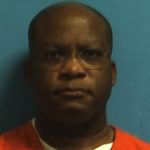
On May 11, 2017, the Florida Supreme Court directed that Ralph Daniel Wright, Jr.(pictured) be acquitted of the murder charges for which he had been sentenced to death in 2014. The court unanimously vacated Wright’s convictions for the murders of his ex-girlfriend and their son, ruling that the “purely circumstantial” evidence against him was insufficient to convict. A majority of the court joined a concurring opinion by Justice Charles Canady holding that “no rational trier of fact could have found … beyond a reasonable doubt” that Wright was the killer. Prosecutors accused Wright of murdering Paula O’Conner — a white woman with whom he had an affair — and their 15-month-old son Alijah supposedly to “avoid a child support obligation and … maintain a ‘bachelor lifestyle.’” The court noted that “none of the evidence presented at trial directly tied Wright to the murders” and that the victim’s young-adult daughter, who had a volatile relationship with the victim, also had a financial motive, having received more than $500,000 in life insurance benefits as a result of her mother’s and half-brother’s deaths. Much of the state’s case relied on the presence of a black military glove in the home of the murder victims. While Wright, a member of the Air Force, had access to that type of glove, “the State could not prove that Wright ever wore the glove, that he left it on Paula’s couch, that it came from MacDill [the base where Wright was stationed], or that it was even used in the murders.” DNA tests by the Florida Department of Law Enforcement reported the results as inconclusive, but independent analysis by the DNA Diagnostic Center and Bode, the private labs hired by the defense and prosecution, respectively, excluded Wright as a contributor of the DNA found on the glove. The DNA analysis did not test for the presence of the victim’s daughter, whom police did not investigate. Wright was convicted of the murders, and the trial court sentenced him to death after a bare 7 – 5 majority of the jury voted to recommend the death penalty. The Florida Supreme Court later declared death sentences based upon non-unanimous jury recommendations to be unconstitutional. Wright is the 27th person to be exonerated from death row in Florida. Nineteen of the 21 exoneration cases from Florida in which the jury vote is known have involved a non-unanimous jury recommendation of a death sentence or a judicial override of a jury recommendation of life.
Sources
B. Farrington, Court Orders Death-Row Inmate’s Release; Calls Evidence Weak, Associated Press, May 11, 2017
C. Osowski, Florida Supreme Court reverses murder conviction of former MacDill Airman Ralph Wright, WFLA, May 11, 2017
Ralph Daniel Wright, Jr. vs. State of Florida, No. SC14-2410, May 11, 2017.
Rodricus Crawford
Louisiana — Conviction: 2013 , Charges Dismissed: 2017

The Caddo Parish, Louisiana, District Court formally dismissed all charges against against Rodricus Crawford on April 17, 2017, exonerating him in a controversial death penalty case that had attracted national attention amid evidence of race discrimination, prosecutorial excess, and actual innocence. The Louisiana Supreme Court had ordered a new trial for Crawford in November 2016, finding that prosecutor Dale Cox had unconstitutionally struck black jurors on the basis of race. Crawford had been sentenced to death in 2012 on charges he had murdered his one-year-old son. Despite autopsy results that showed pervasive bronchopneumonia in the baby’s lungs and sepsis in his blood, the prosecution presented testimony from a local doctor who claimed the infant had been suffocated. After the trial, Crawford’s appeal lawyers obtained additional evidence from experts in the fields of pediatric pathology, pediatric neuropathology, and pediatric infectious disease that the child had died of natural causes. In dropping the charges against Crawford, James Stewart, who was elected Caddo Parish District Attorney in 2015, said, “New evidence presented after the trial raised questions about the degree of pneumonia together with bacteria in the child’s blood indicative of sepsis” required reconsideration of the charges against Crawford. A 2015 study documented pattern of racially biased jury selection by prosecutors in Caddo Parish, and data from 22 felony trials prosecuted by Cox showed he had struck black jurors at a rate 2.7 times higher than other jurors. Cox wrote an internal memo on the Crawford case in 2014 stating that Crawford “deserves as much physical suffering as it is humanly possible to endure before he dies” and attracted national criticism for questionable comments and practices, including telling The Shreveport Times that he believed the state needs to “kill more people.” Cox personally prosecuted 1/3 of all the cases in which Louisiana juries returned death sentences between 2010 – 2015. Ben Cohen, an attorney for Crawford, said, “This case has always been about injustice and the disproportionate use of the death penalty in Caddo Parish. In deciding not to retry Rodricus Crawford, the Caddo Parish District Attorney’s office is righting this injustice, restoring integrity to their office.”
Sources
Review results in no retrial for Rodricus Crawford, KSLA News 12, April 14, 2017
Prosecutors won’t retry man in death of his son, Associated Press, April 15, 2017.
Isaiah McCoy
Delaware — Conviction: 2012 , Acquitted: 2017

Isaiah McCoy was exonerated on January 19, 2017, when Kent County Superior Court Judge Robert B. Young acquitted him of all charges in a retrial ordered by the Delaware Supreme Court. McCoy had been convicted and sentenced to death in 2012, but the Court overturned his conviction in 2015 as a result of prosecutorial misconduct in which the trial prosecutor, Deputy Attorney General R. David Favata belittled McCoy in front of the jury for choosing to represent himself, made intimidating comments to McCoy during a break in proceedings, then lied to the judge about having made those comments. McCoy waived his right to a jury for his retrial, but was represented by counsel. In acquitting McCoy, Judge Young noted that there was no physical evidence linking McCoy to the murder and that two alleged accomplices had given contradictory testimony. One of the accomplices, Deshaun White, received a sentence reduction for testifying against McCoy. Upon his release, McCoy said, “I just want to say to all those out there going through the same thing I’m going through ‘keep faith, keep fighting. Two years ago, I was on death row. At 25, I was given a death sentence – and I am today alive and well and kicking and a free man.” Favata was temporarily suspended from the practice of law as a result of his misconduct in the case.
Sources
J. Masulli Reyes, Former death row inmate goes free after acquittal, The News Journal, January 19, 2017
R. Chase, DELAWARE: EX-DEATH ROW INMATE ACQUITTED AFTER MURDER RETRIAL, Associated Press, January 19, 2017
McCoy v. State, Nos. 558 & 595, 2012 (Delaware Supreme Court, January 20, 2015).
Year of Release: 2015 ⌃
Derral Wayne Hodgkins
Florida — Conviction: 2013 , Acquitted: 2015
On October 12, 2015, the Circuit Court for Pascal County, Florida, entered a judgment of acquittal and the Florida Department of Corrections released Derral Hodgkins from custody after the Florida Supreme Court denied the prosecution’s motion to reconsider its June 18, 2015 decision acquitting Hodges of all charges in the stabbing death of his former girlfriend. The trial judge imposed a death sentence for the conviction following a 7 – 5 vote by the jury to recommend death. No eyewitnesses placed Hodgkins in the vicinity at or around the time of the murder and the evidence against him was completely circumstantial. None of the 21 sets of fingerprints lifted from the crime scene belonged to Hodgkins and no evidence linked him to a bloody bottle found at the scene. Although his DNA was found in scrapings taken from underneath the victim’s fingernails, the Florida Supreme Court found that, even when viewed most favorably to the prosecution, this evidence “equally generates the theory” that Hodgkins’ DNA was present “through innocent contact.” The Court found that there were no defensive wounds on the victim’s body that would have suggested she had scratched her assailant, and that the closest Hodgkins had come to making any admissions about the murder was lying to police about the last time he had sexual contact with the victim, which he said he did because he did not want his wife to find out about his infidelity. Ultimately, the Court held that the evidence in the case was insufficient to convict and directed that the trial court enter a judgment of acquittal.
Sources
Hodgkins v. State, No. SC13-1004 (Florida Supreme Court June 18, 2015)
10 News Staff, Man on death row for Pasco murder to be set free, WTSP, June 18, 2015.
Lisa Buie, Man gets death in 2006 stabbing of Land O’Lakes diner cook, Tampa Bay Times, April 26, 2013.
Lawrence William Lee
Georgia — Conviction: 1987 , Charges Dismissed: 2015
On June 8, 2015, the Wayne County Georgia Superior Court granted the prosecution’s motion to dismiss all charges against Larry Lee, after he had spent more than 27 years in prison (more than 20 on death row) for a triple murder during a home robbery. (See Order of Nolle Prosequi, Wayne County, GA, Superior Court, June 8, 2015). In May 2008, the state superior court granted Lee a new trial, finding that prosecutors had engaged in a “full spectrum of prosecutorial misconduct,” accompanied by prejudicial investigative failures by his trial counsel. (Lee v. Terry, Butts County, GA, Superior Court, May 1, 2008). As described by the Superior Court, Lee was convicted and sentenced to death based upon “a weak prosecution case dependent for its success on the believability of two witnesses unfavored in the law and by the public – a jailhouse snitch and a co-conspirator – with absolutely no forensic evidence to link [him] to the crime scene.” The court found that the prosecution affirmatively misrepresented to the defense and the court that it had no exculpatory evidence in its files, while concealing evidence that contradicted the testimony or undermined the credibility of every one of its key witnesses. It also manipulated the trial proceedings by first denying the defense access to the physical evidence and then presenting evidence and argument it knew to be false that suggested Lee had been in possession of guns stolen from the victims’ home. The prosecution also concealed evidence that linked two other suspects to the murders and subsequently lost or destroyed 47 latent fingerprints and 15 unknown hairs recovered from the scene that did not match Lee, preventing Lee’s post-conviction lawyers from examining this exculpatory physical evidence to identify the actual perpetrators. In February 2015, the Superior Court barred the prosecution from presenting the prior testimony of two now-deceased witnesses, ruling that prosecutorial misconduct had prevented Lee from adequately cross-examining these witnesses at trial (see Order Concerning Admissibility of Evidence, Wayne County, GA, Superior Court, February 19, 2015), and leading to the decision to drop the charges against Lee.
Sources
Judge Throws Out Conviction of Death Row Inmate, News4Jax, May 8, 2008.
A. Palmer, Death sentence for 1986 killings tossed on habeas, Daily Report, May 13, 2008.
AG won’t appeal ruling lifting death penalty, Daily Report June 10, 2008.
Letter from D. Bradford to Hon. E.M. Wilkes, III re: Georgia v. Lee, July 7, 2015.
Alfred Brown
Texas — Conviction: 2005 , Charges Dismissed: 2015

On June 8, 2015, Harris County, Texas prosecutors dismissed charges against Alfred Dewayne Brown, who had been wrongfully convicted and sentenced to death in 2005 for the murders of a Houston police officer and a store clerk during a robbery. The Texas Court of Criminal Appeals had overturned Brown’s conviction in 2014 because prosecutors withheld a phone record that supported Brown’s alibi. Prosecutors in 2013 said that the phone record had been inadvertently misplaced. Brown had long maintained that he had been alone at his girlfriend’s apartment at the time of the murder, and that he had called her after seeing reports of the shooting on television. Defense lawyers argued that the time of the phone call established that Brown could not have been at the store when the murder occurred. There was no physical evidence against Brown, and a series of Pulitzer prize-winning columns by Houston Chronicle writer Lisa Falkenberg disclosed irregularities in the grand jury process, that Brown’s girlfriend had faced intimidating questioning and threats of perjury by a police officer who was the grand jury foreman, and that she had been jailed for seven weeks until she changed her testimony to implicate Brown. In responding to a 2018 document request filed by Brown in a civil suit against Harris County, Harris County District Attorney, Kim Ogg — elected in 2016 — disclosed an email from a Houston detective to Assistant District Attorney Dan Rizzo, the prosecutor in Brown’s case, alerting Rizzo that he had obtained the phone records from the morning of the murder in an attempt to refute the girlfriend’s grand jury testimony, but found that they supported her testimony and Brown’s alibi. Prosecutors nevertheless suppressed the records, jailed Brown’s girlfriend, and continued to prosecute him. Since 2007, Brown’s attorneys have compiled evidence that strongly suggests the murder was committed by another man who had both a history of robbery and connections to the co-defendants in the crime. Despite a 2008 motion to test the alternate suspect’s DNA, such a test has not been carried out.
Sources
B. Rogers, DA drops charges against Alfred Brown, Houston Chronicle, June 8, 2015.
L. Falkenberg, Evidence mounts that wrong man on death row for killing HPD officer, Houston Chronicle, December 20, 2014.
L. Falkenberg, Cop was foreman of grand jury in cop-killing, Houston Chronicle, July 24, 2014.
L. Falkenberg, Mother of 3 pressured into changing story, but jailed anyway, Houston Chronicle, July 7, 2014.
Margaret Downing, DA Ogg Finds Email Evidence That Prosecutor Did Know About Phone Records in Alfred Brown Case, Houston Press, March 2, 2018.
St. John Barned-Smith and Keri Blakinger, DA: Former prosecutor withheld key email in death row case, Houston Chronicle, March 3, 2018.
Image by Karen Warren, Houston Chronicle.
Willie Manning
Mississippi — Conviction: 1994 , Charges Dismissed: 2015

On April 21, 2015 Oktibbeha County (Mississippi) District Attorney Forrest Allgood announced that he would drop charges against death row inmate Willie Manning. (See Order of Nolle Prosequi, Cir. Ct. Oktibbeha Cty. MS (April 20, 2015)). In February 2015, the Mississippi Supreme court granted Manning a new trial, saying that key evidence was withheld. (Manning v. State, en banc (Feb. 12, 2015)). Justice Michael K. Randolph wrote, “The State violated Manning’s due-process rights by failing to provide favorable, material evidence.” A witness testified that he saw Manning enter the victims’ apartment, but police records that were withheld from the defense show the apartment from which he claimed to have seen Manning was vacant at the time, and records from the apartment complex did not list the witness as a tenant. The witness later recanted his testimony, saying he feared he would be charged with the crime if he didn’t testify. Manning remains on death row for a separate crime, but the evidence against Manning in that case is hair and ballistics analysis from the FBI that was recently identified as seriously flawed. Manning came within hours of being executed in that case, receiving a stay of execution only after the FBI sent separate letters disclosing flaws in its ballistics and hair comparison testimony.
Sources
R. L. Nave, Why Does the State Still Want to Kill Willie Jerome Manning?, Jackson Free Press, April 29, 2015.
For background on Manning’s second case, see Andrew Cohen, A Ghost of Mississippi: The Willie Manning Capital Case, The Atlantic, May 2, 2013
Andrew Cohen, Feds Acknowledge Scientific Errors in Testimony in Willie Manning Case, The Atlantic, April 5, 2013.
Anthony Ray Hinton
Alabama — Conviction: 1985 , Charges Dismissed: 2015

Anthony Ray Hinton was exonerated after spending nearly 30 years on Alabama’s death row. He was released on April 3, 2015. Hinton was convicted of the 1985 murders of two fast-food restaurant managers based upon the testimony of a state forensic examiner that the bullets in the two murders came from a gun found in Hinton’s house. The prosecutor, who had a documented history of racial bias, said he could tell Hinton was guilty and “evil” just by looking at him. Hinton was arrested after a victim in a similar crime identified him in a photo lineup, even though Hinton had been working in a locked warehouse 15 miles away when that crime was committed. Hinton’s lawyer did not know the law and mistakenly believed that funding to hire a qualified firearms expert was not available. Instead, he hired an expert he knew to be inadequate, and as a result failed to present any credible evidence to rebut the state’s claim that the bullets were fired from Hinton’s gun. In 2002, three top firearms examiners testified that the bullets could not be matched to Hinton’s gun, and may not have come from the a single gun at all. In 2014, the U.S. Supreme Court unanimously held that Hinton had been provided substandard representation and returned his case to the state courts for further proceedings. (HINTON V. ALABAMA, No. 13 – 6440 (2014)). Prosecutors decided not to retry him after the state’s new experts said they could not link the bullets to Hinton’s gun. (See State’s Motion for Order of Nolle Prosequi, Ala. v. Hinton, No. CC1985-3363, 10th Judic. Cir., Jefferson Cty. (Apr. 1, 2015)). Bryan Stevenson, Hinton’s lead attorney, said, “Race, poverty, inadequate legal assistance, and prosecutorial indifference to innocence conspired to create a textbook example of injustice. I can’t think of a case that more urgently dramatizes the need for reform than what has happened to Anthony Ray Hinton.”
Sources
W. Hester, Alabama man to be freed after nearly 30 years on death row, Reuters, April 2, 2015
Press Release, Equal Justice Initiative Wins Release of Anthony Ray Hinton, Equal Justice Initiative, April 2, 2015
Press Release, ALABAMA EXONERATES MAN WHO SPENT 30 YEARS ON DEATH ROW FOR A CRIME HE DID NOT COMMIT, DPIC, April 3, 2015.)
Watch Scott Pelley’s interview of Ray Hinton, Life After Death Row, CBS: 60 Minutes, January 10, 2016.
Debra Milke
Arizona — Conviction: 1990 , Charges Dismissed: 2015

On March 23, 2015, a Phoenix judge dismissed all charges against Debra Milke. Previously, on March 17, 2015 the Arizona Supreme Court denied a request by prosecutors that it review a lower court’s order that dismissed the charges against Debra Milke as a result of “egregious” police and prosecutorial misconduct and barring her retrial. The court’s decision effectively ends prosecutorial efforts to reinstate murder charges against Milke. Milke spent 23 years on death row for allegedly arranging for two men to kill her 4‑year-old son so she could collect an insurance payout. The two men who were convicted of committing the killing remain on death row. In 2013, the U.S. Court of Appeals for the 9th Circuit overturned Milke’s conviction *because the prosecutor had withheld evidence that undermined key testimony in the case. (Milke v. Ryan, No. 07 – 99001). Arizona’s prosecutors have been *accused of misconduct in more than half of all cases in which the state has imposed death sentences. In this case, Detective Armando Saldate testified that Milke had confessed to him, but there was no recording, nor any witnesses to the confession, and Milke steadfastly denied having confessed. Saldate’s personnel record, which prosecutors withheld from the defense, revealed that the detective had committed serious misconduct in prior cases, including lying under oath. In December 2014, the Arizona Court of Appeals barred prosecutors from retrying Milke. The state sought to appeal that decision to the Arizona Supreme Court, which the court rejected on March 17, 2015. The trial court formally dismissed the charges on March 23, 2015, making Milke the 151st person exonerated from death row since 1973 and the first in 2015. She became the ninth person exonerated from death row in Arizona and the second female in the U.S.
Sources
M. Kiefer, Arizona Supreme Court declines review of appeal that freed Debra Milke, Arizona Republic, March 17, 2015.
Year of Release: 2014 ⌃
Leon Brown
North Carolina — Conviction: 1984 , Charges Dismissed: 2014
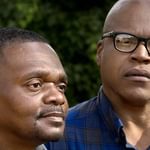
The two brothers who were convicted of murder and sentenced to death in 1984, were freed because of evidence uncovered by the North Carolina Innocence Inquiry Commission. McCollum was 19 and Brown was 15 when they confessed to the rape and murder of 11-year-old Sabrina Buie. Both men are intellectually disabled — McCollum has an IQ in the 60s and Brown has scored as low as 49 on IQ tests. McCollum and Brown have maintained their innocence since their trial, saying they were unaware they were signing a confession. “I’d never been under such pressure, people yelling and screaming at me,” McCollum said of his interrogation. “I was scared, and was just trying to get out of that police station and go home.” In 2010, Brown, who is now serving a life sentence for rape after his murder conviction was thrown out, contacted the Innocence Commission about his case. The Commission found DNA evidence near the crime scene belonging to another man, Roscoe Artis, who was sentenced to death for a crime similar to the one for which McCollum and Brown were sentenced to death. (Artis’ sentence was later reduced to life without parole.) On September 2, a Robeson County judge freed both men based on DNA evidence. (M. Biesecker “NC half brothers freed after 3 decades in prison,” News and Observer, September 3, 2014).
UPDATE: On June 4, 2014, North Carolina Governor Pat McCrory formally pardoned Brown and McCollum, thereby making them eligible for compensation related to their wrongful convictions. B. Mims, “McCrory pardons former death row inmates cleared in 1983 murder,” WRAL, June 4, 2015.
Glenn Ford
Louisiana — Conviction: 1984 , Charges Dismissed: 2014
Ford had spent 30 years on Louisiana’s death row and was freed after prosecutors filed motions to vacate his conviction and sentence. Louisiana Judge Ramona Emanuel ordered Glenn Ford to be “unconditionally released from the custody of the Louisiana Department of Corrections” on March 11, 2014*. * Prosecutors said they had received “credible evidence” that Ford “was neither present at, nor a participant in, the robbery and murder” of which he was convicted in 1984. Ford, who has always maintained his innocence, was tried and sentenced to death by an all-white jury. One of the witnesses against him said at trial that police had helped her make up her story. A state “expert” who testified about the victim’s time of death had not even examined the body. Ford’s lead trial attorney had never tried a jury case before. A second attorney, two years out of law school, worked at an insurance defense firm. They failed to hire any experts to rebut the prosecution’s case because they believed they would have to pay for the experts themselves. The Louisiana Supreme Court earlier said it had “serious questions” about the outcome of the trial, but did not reverse Ford’s conviction. Ford may have been involved in trying to pawn jewelry from the victim that he received from one of the original codefendants.
(A. Cohen, “After 30 Years on Death Row, an Innocent Man in Louisiana is About to Go Free,” The Atlantic, March 11, 2014. KTAL NBC News, Mar. 11, 2014).
*UPDATE: *After Ford’s exoneration, the lead prosecutor on his case, A.M. “Marty” Stroud III, issued a public apology, expressing his belief in Ford’s complete innocence, saying, “There was no technicality here. Crafty lawyering did not secure the release of a criminal…Pursuant to the review and investigation of cold homicide cases, investigators uncovered evidence that exonerated Mr. Ford. Indeed, this evidence was so strong that had it been disclosed during of the investigation there would not have been sufficient evidence to even arrest Mr. Ford!”
*UPDATE: *Ford died of cancer at age 65 on June 29, 2015. His case was cited by Justice Breyer in a dissenting opinion in Glossip v. Gross the same day.
Carl Dausch
Florida — Conviction: 2011 , Acquitted: 2014
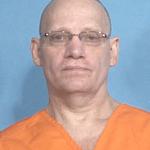
On June 12, the Supreme Court of Florida (6 – 1) overturned the convictions and death sentence of Carl Dausch because the state presented insufficient evidence of his guilt at trial. The Court directed that he be acquitted of all offenses, stating, “[T]he record lacks sufficient evidence of the perpetrator’s identity.” Dausch was convicted primarily on fingerprints and DNA from a cigarette butt that were found in the victim’s car. DNA evidence taken from the victim was less definitive. Dausch said he had hitchhiked while returning home from a family vacation, and the person who picked him up was likely the actual killer. Because the evidence against Dausch was circumstantial, the court applied a “special standard of review,” which required “that the circumstances lead ‘to a reasonable and moral certainty that the accused and no one else committed the offense charged. It is not sufficient that the facts create a strong probability of, and be consistent with, guilt. They must be inconsistent with innocence.” The Court said the evidence only linked Dausch to the victim’s car, not to the murder itself.
(B. Farrington, “Supreme Court throws out conviction in ‘87 killing,” see Dausch v. Florida Associated Press, June 12, 2014
No. SC12-1161 (June 12, 2014), per curiam).
Dausch remains in prison in another state on unrelated charges.
Henry McCollum
North Carolina — Conviction: 1984 , Charges Dismissed: 2014

The two brothers who were convicted of murder and sentenced to death in 1984, were freed because of evidence uncovered by the North Carolina Innocence Inquiry Commission. McCollum was 19 and Brown was 15 when they confessed to the rape and murder of 11-year-old Sabrina Buie. Both men are intellectually disabled — McCollum has an IQ in the 60s and Brown has scored as low as 49 on IQ tests. McCollum and Brown have maintained their innocence since their trial, saying they were unaware they were signing a confession. “I’d never been under such pressure, people yelling and screaming at me,” McCollum said of his interrogation. “I was scared, and was just trying to get out of that police station and go home.” In 2010, Brown, who is now serving a life sentence for rape after his murder conviction was thrown out, contacted the Innocence Commission about his case. The Commission found DNA evidence near the crime scene belonging to another man, Roscoe Artis, who was sentenced to death for a crime similar to the one for which McCollum and Brown were sentenced to death. (Artis’ sentence was later reduced to life without parole.) On September 2, a Robeson County judge freed both men based on DNA evidence. (M. Biesecker “NC half brothers freed after 3 decades in prison,” News and Observer, September 3, 2014).
UPDATE: On June 4, 2014, North Carolina Governor Pat McCrory formally pardoned Brown and McCollum, thereby making them eligible for compensation related to their wrongful convictions. B. Mims, “McCrory pardons former death row inmates cleared in 1983 murder,” WRAL, June 4, 2015.
Ricky Jackson
Ohio — Conviction: 1975 , Charges Dismissed: 2014
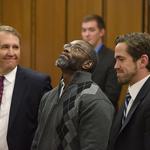
Former death row inmate Ricky Jackson was exonerated on November 21 in Ohio, after spending 39 years in prison. A judge in Cleveland dismissed all charges against Jackson, with the prosecution in agreement. Jackson was one of three men convicted of the 1975 murder of Harold Franks. The other two defendants, Ronnie (now Kwame Ajamu) and Wiley Bridgeman, were also sentenced to death and have filed a petition for a new trial. Jackson’s death sentence was vacated earlier, and the Bridgeman brothers’ sentences were overturned when Ohio’s death penalty was found unconstitutional in 1978. The men were convicted on the testimony of a 12-year-old boy who later recanted his testimony, and who now has said he did not witness the crime at all. Several people confirmed the boy was on a school bus at the time of the crime. No other evidence linked the men to the murder. A gun and car seen at the crime scene were linked to a man who was arrested in 1978 for another murder, but he was never charged in Franks’ murder. In dropping the charges against Jackson, Cuyahoga County Prosecutor Timothy McGinty said, “The state is conceding the obvious.” Ricky Jackson became the seventh person exonerated from death row in Ohio since 1973. Upon his release, Jackson said, “The English language doesn’t even fit what I’m feeling. I’m on an emotional high. You sit in prison for so long and think about this day but when it actually comes you don’t know what you’re going to do, you just want to do something.
Sources
(K. Palmer, “Ohio man exonerated after 39 years in prison, to be released Friday,” Reuters, November 20, 2014).
Wiley Bridgeman
Ohio — Conviction: 1975 , Charges Dismissed: 2014
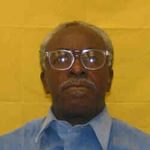
All charges against Wiley Bridgeman were dismissed, making him the 149th person exonerated from death row since 1973. Bridgeman once came within three weeks of execution, but his and Ajamu’s death sentences were struck down when Ohio’s death penalty was found unconstitutional in 1978.
Sources
(M. Gillispie, “Judge dismisses two men charged in 1975 slaying,” Associated Press, November 21, 2014).
Kwame Ajamu
Ohio — Conviction: 1975 , Charges Dismissed: 2014
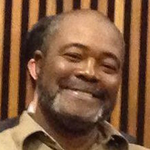
At a hearing on December 9, Kwame Ajamu (formerly Ronnie Bridgeman) was formally exonerated of the 1975 murder for which he was convicted and sentenced to death. Ajamu joined his brother, Wiley Bridgeman, and co-defendant, Ricky Jackson, in being freed. He became the 151st death row exoneree since 1973. Upon his exoneration, Ajamu said, “The important part is that we have been united while we are standing forward and upward and that we are not looking at each other in the graveyard,” adding, “I feel vindicated. I feel free.” The three men are expected to file for compensation for their many years of wrongful imprisonment. Cuyahoga County prosecutors said they will not object to efforts to obtain compensation, saying that the men were “victims of a terrible injustice.” (J. Caniglia, “‘My battle is over!’ Judge throws out the 1975 murder conviction of Ronnie Bridgeman,” Cleveland Plain Dealer, December 9, 2014). Ajamu had been released from prison in 2003, but Jackson and Bridgeman spent 39 years in prison. Judge Richard McMonagle, who presided over the hearing considering the case, said, “Life is filled with small victories, and this is a big one.”
Year of Release: 2013 ⌃
Reginald Griffin
Missouri — Conviction: 1983 , Charges Dismissed: 2013

Missouri dismissed all charges related to his death sentence on October 25. (Associated Press, “Ex-death row inmate exonerated in prison stabbing,” Oct. 30, 2013. Missouri’s Attorney General Chris Koster said it was “the appropriate and ethical decision at this time.”). Griffin had been sentenced to death for the murder of a fellow inmate in 1983. His conviction was overturned in 2011 by the Missouri Supreme Court (Griffin v. Denney, No. SC91112, Aug. 2, 2011) because the state had withheld critical evidence. Griffin’s conviction relied on the testimony of two jailhouse informants who received benefits in exchange for their testimony. Prosecutors withheld evidence that guards had confiscated a sharpened screwdriver from another inmate, Jeffrey Smith, immediately after the stabbing. Both of Griffin’s co-defendants consistently said the third person involved in the crime was Smith, not Griffin. Cyndy Short, the current lead attorney for Griffin, said, “Reggie and his family are overjoyed. This has been a massive weight upon them all for three decades.”
In overturning Griffin’s conviction, the Missouri Supreme Court said, “There is no physical evidence connecting Griffin to the weapon found in the gymnasium. There is no physical evidence demonstrating any contact between Griffin and Bausley. Instead, Griffin’s continued incarceration for Bausley’s murder is premised on the recanted testimony of inmate Curtis and the impeached testimony of deceased inmate Mozee. Overlaying the entire case is the revelation that the State failed to disclose evidence that tended to implicate Smith, impeach Curtis and Mozee, and bolster the trial testimony of inmate Rogers, who maintained that the inmate fleeing the crime scene was not Griffin.” (at 9).
See also DPIC’s Press Release.
Year of Release: 2012 ⌃
Seth Penalver
Florida — Conviction: 1999 , Acquitted: 2012
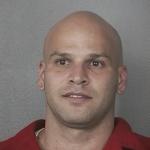
On December 21, Seth Penalver was acquitted of all charges and will be freed from Florida’s death row, 13 years after being sentenced to death. He was originally charged with a triple murder and armed robbery that occurred in Broward County in 1994. His first trial ended with a deadlocked jury. At his second trial in 1999, he was convicted and sentenced to death. In 2006, the Florida Supreme Court (Penalver v. Florida, No. SC00-1602, Feb. 2, 2006) overturned his conviction because the prosecution had introduced improper evidence at his trial. A co-defendant, Pablo Ibar, was also sentenced to death and remains on death row. A video from the crime scene helped convict Ibar, but images showing another suspect were inconclusive. Penalver has always maintained his innocence. At Penalver’s most recent trial, which began 5 months ago, the jury was deadlocked 10 – 2, and both the prosecution and defense agreed to replace two jurors with alternates who had attended the proceedings. The newly constituted jury began deliberations afresh and found Penalver not guilty of all charges. Penalver is the 142nd person to be exonerated and freed from death row since 1973, and the 24th such person in Florida, the most of any state.
Sources
(R. Olmeda, “Jury finds Penalver not guilty in Casey’s Nickelodeon triple murder case,” Sun Sentinel, Dec. 21, 2012).
Damon Thibodeaux
Louisiana — Conviction: 1997 , Charges Dismissed: 2012

On September 28 2012, Damon Thibodeaux was freed from death row in Louisiana after an extensive investigation, including DNA testing and the cooperation of Jefferson Parrish District Attorney Paul Connick. Thibodeaux was sentenced to death for the 1996 rape and murder of his cousin. He at first confessed to the attack after a nine-hour interrogation by detectives. He recanted a few hours later and claimed his confession was coerced. In releasing Thibodeaux, Connick said, “I have concluded that the primary evidence in this case, the confession, is unreliable. Without the confession the conviction can’t stand, and therefore in the interest of justice, it must be vacated.”
Thibodeaux spent 15 years on death row in Angola. The reinvestigation of the case cost more than $500,000, an expense shared by the defense and prosecution. Regarding his early statement to the police, Thibodeaux noted, “They look for vulnerable points where they can manipulate you, and if you’re sleep-deprived or panicked, or you’re on something or drunk, it makes it that much easier to accomplish what they want to accomplish…. I was willing to tell them anything they wanted me to tell them if it would get me out of that interrogation room.”
Sources
(D. Blackmon, “Louisiana death-row inmate Damon Thibodeaux exonerated with DNA evidence,”Washington Post, September 28, 2012).
Joe D’Ambrosio
Ohio — Conviction: 1989 , Charges Dismissed: 2012

On January 23, the U.S. Supreme Court declined to hear an appeal by the state of Ohio challenging the unconditional writ of habeas corpus and bar to the re-prosecution of Joe D’Ambrosio (pictured), thus ending the capital case. He has now been freed from death row with all charges dismissed. A federal District Court had first overturned D’Ambrosio’s conviction in 2006 because the state had withheld key evidence from the defense. The federal court originally allowed the state to re-prosecute him, but just before trial the state revealed the existence of even more important evidence and requested further delay. Also the state did not divulge in a timely manner that the key witness against D’Ambrosio had died. In 2010, the District Court barred D’Ambrosio’s re-prosecution because of the prosecutors’ misconduct. The court concluded that these developments biased D’Ambrosio’s chances for a fair trial, and hence the state was barred from retrying him. District Court Judge Kathleen O’Malley wrote: “For 20 years, the State held D’Ambrosio on death row, despite wrongfully withholding evidence that ‘would have substantially increased a reasonable juror’s doubt of D’Ambrosio’s guilt.’ Despite being ordered to do so by this Court … the State still failed to turn over all relevant and material evidence relating to the crime of which D’Ambrosio was convicted. Then, once it was ordered to provide D’Ambrosio a constitutional trial or release him within 180 days, the State did neither. During those 180 days, the State engaged in substantial inequitable conduct, wrongfully retaining and delaying the production of yet more potentially exculpatory evidence… To fail to bar retrial in such extraordinary circumstances surely would fail to serve the interests of justice.”
In 2011, the U.S. Court of Appeals for the Sixth Circuit upheld the bar to re-prosecution. (D’Ambrosio v. Bagley, No. 10 – 3247, Aug. 29, 2011). Even the dissent referred to the state’s “remarkable inability to competently prosecute D’Ambrosio.” The state appealed this decision to the U.S. Supreme Court mainly on jurisdictional grounds, but was denied certiorari on Jan. 23. (Bagley v. D’Ambrosio, No. 11 – 672, denying cert.).
D’Ambrosio is 140th former death row inmate to be exonerated since 1973 and the 6th from Ohio. He was first indicted for the offense in 1988.
Sources
(See D’Ambrosio v. Bagley, 6th Cir., No. 10-3247, August 29, 2011; see also DPIC’s prior post; current post Jan. 23, 2012).
Year of Release: 2011 ⌃
Gussie Vann
Tennessee — Conviction: 1994 , Charges Dismissed: 2011
Vann was originally convicted and sentenced to death in 1994 for a sexual assault and murder of his own daughter, Necia Vann, in 1992. However, in 2008 following state post-conviction review, Circuit Court Senior Judge Donald P. Harris held that Vann was entitled to a new trial because his defense attorneys failed to hire forensic experts to challenge the state’s allegations of sexual abuse. (Vann v. State, Order, Post-conviction No. 99 – 312, 10th Judicial Dist., McMinn Cty., May 28, 2008). Judge Harris wrote that this failure led to Vann being convicted on “inaccurate, exaggerated and speculative medical testimony.” (Id. Memorandum, at 23). At the post-conviction hearing, forensic experts contradicted the state’s earlier testimony and said there were no signs of recent sexual abuse on the victim. Judge Harris described the failings of Vann’s original attorneys as “not only prejudicial, but disastrous.” (Id.) The state elected not to appeal this ruling, though it did try to find grounds for a conviction on a lesser offense. Ultimately all charges were dropped by the state on September 22, 2011.
Year of Release: 2010 ⌃
Anthony Graves
Texas — Conviction: 1994 , Charges Dismissed: 2010

Anthony Graves (pictured) was released from a Texas prison on October 27 after Washington-Burleson County District Attorney Bill Parham filed a motion to dismiss all charges that had resulted in Graves being sent to death row 16 years ago. Graves was convicted in 1994 of assisting Robert Carter in multiple murders in 1992. There was no physical evidence linking Graves to the crime, and his conviction relied primarily on Carter’s testimony that Graves was his accomplice. Two weeks before Carter was scheduled to be executed in 2000, he provided a statement saying he lied about Graves’s involvement in the crime. He repeated that statement minutes before his execution. In 2006, the U.S. Court of Appeals for the Fifth Circuit overturned Graves’s conviction and ordered a new trial after finding that prosecutors elicited false statements and withheld testimony that could have influenced the jurors. (Graves v. Dretke, No. 05 – 70011, U.S. 5th Cir. Mar. 6, 2006). After D.A. Parham began to reassemble the case and review the evidence, he hired former Harris County assistant district attorney Kelly Siegler as a special prosecutor. Siegler soon realized that making a case against Graves would be impossible: “After months of investigation and talking to every witness who’s ever been involved in this case, and people who’ve never been talked to before, after looking under every rock we could find, we found not one piece of credible evidence that links Anthony Graves to the commission of this capital murder. This is not a case where the evidence went south with time or witnesses passed away or we just couldn’t make the case anymore. He is an innocent man,” Siegler said.
Sources
(B. Rogers, “Prisoner ordered free from Texas’ death row,” Houston Chronicle, October 28, 2010).
Year of Release: 2009 ⌃
Yancy Douglas
Oklahoma — Conviction: 1995 , Charges Dismissed: 2009

Oklahoma District Attorney David Prater dropped charges against Yancy Douglas, 35, and Paris Powell, 36, after deciding the state’s key witness was unreliable. “Ethically, and on my duty, I could not proceed in this case and had to dismiss it,” Prater said. Derrick Smith, a rival gang member to the defendants and the state’s main witness, was one of the apparent targets in the shooting. A federal appeals court in 2006 found that Smith had received a deal from the prosecutors that was not revealed to the defense and overturned the conviction of Powell but denied relief to Douglas. Smith testified against Powell and Douglas in their separate trials, but later admitted he never saw who shot him, that he was drunk and high that night, and that he testified only because prosecutors had threatened him with more prison time.
The U.S. Court of Appeals for the 10th Circuit reviewed the District Court’s findings in 2009. With respect to Mr. Powell, the Circuit Court affirmed the lower court, stating, “we agree with the district court that Mr. Powell’s trial did not yield a verdict worthy of confidence.” (Slip opin. at 39, citation below). With respect to Mr. Douglas, the Circuit Court held, “Assessing the prosecutor’s egregious conduct in light of the trial record leaves us with grave doubt about the validity of the jury’s verdict and persuades us that Mr. Douglas is entitled to habeas relief from his capital murder conviction.” (Slip opin. at 83).
At the time of their release, the District Attorney added, “We all came to the opinion that without Derrick Smith, we did not have a case we could prove beyond a reasonable doubt.” Jack Fisher, Powell’s attorney, said his client has always maintained his innocence and that Powell’s release is “bittersweet. It should have happened a long time ago. It’s unfortunate that he had to spend 16 years of his life in jail. What it boils down to is they had no evidence he was guilty. The testimony that they used to convict him was false.”
Sources
(S. Murphy, “Two ex-death row inmates released from Oklahoma prison,” Associated Press, October 5, 2009; R. Surette, “Why 2 Death Row Inmates Were Set Free,” News9.com, Oct. 6, 2009). See YANCY LYNDELL DOUGLAS v. RANDALL G. WORKMAN, Warden, and PARIS LAPRIEST POWELL v. WORKMAN, Nos. 01-6094 & 06-6091, and Nos. 06-6093 & 06-6102 (10th Cir. Mar. 26, 2009) (per curiam).
Robert Springsteen
Texas — Conviction: 2001 , Charges Dismissed: 2009

On October 28, 2009, Travis County, Texas, prosecutors moved to dismiss all charges against Michael Scott and Robert Springsteen, who had been convicted of the murder of four teens in an Austin yogurt shop in 1991. (Springsteen was convicted in 2001; Scott in 2002.) Springsteen had been sentenced to death and Scott was sentenced to life in prison. The convictions of both men were overturned by the Texas Court of Criminal Appeals because they had not been adequately allowed to cross examine each other. (See Springsteen v. Texas, No. AP-74,223 (May 24, 2006)). State District Judge Mike Lynch had released the defendants on bond in June, pending a possible retrial by the state. However, sophisticated DNA analysis of evidence from the crime scene did not match either defendant and the prosecution announced it was not prepared to go to trial. The judge accepted the state’s motion to dismiss all charges. Prosecutors are still trying to match the DNA from crime with a new defendant.
“This has been a long time coming,” said Scott, once charges were dropped, “and I’m happy to be here.” Both Scott and Springsteen implicated themselves at the time of their arrest, 8 years after the crime. However, both claimed that their statements had been coerced by police. The police investigation had been compromised from the start because the building had been set on fire, and thousands of gallons of water were poured on the crime scene before an investigation was carried out. Travis County District Attorney Rosemary Lehmberg issued a statement that said in part: “Make no mistake, this is a difficult decision and one I would rather not have to make.”
Sources
(S. Kreytak, “Charges dismissed in yogurt shop case,” Austin American-Statesman, October 28, 2009; see also J. Vertuno, “Murder counts tossed in Texas yogurt shop slayings,” Associated Press, Oct. 29, 2009).
Paris Powell
Oklahoma — Conviction: 1997 , Charges Dismissed: 2009

Oklahoma District Attorney David Prater dropped charges against Yancy Douglas, 35, and Paris Powell, 36, after deciding the state’s key witness was unreliable. “Ethically, and on my duty, I could not proceed in this case and had to dismiss it,” Prater said. Derrick Smith, a rival gang member to the defendants and the state’s main witness, was one of the apparent targets in the shooting. A federal appeals court in 2006 found that Smith had received a deal from the prosecutors that was not revealed to the defense and overturned the conviction of Powell but denied relief to Douglas. Smith testified against Powell and Douglas in their separate trials, but later admitted he never saw who shot him, that he was drunk and high that night, and that he testified only because prosecutors had threatened him with more prison time.
The U.S. Court of Appeals for the 10th Circuit reviewed the District Court’s findings in 2009. With respect to Mr. Powell, the Circuit Court affirmed the lower court, stating, “we agree with the district court that Mr. Powell’s trial did not yield a verdict worthy of confidence.” (Slip opin. at 39, citation below). With respect to Mr. Douglas, the Circuit Court held, “Assessing the prosecutor’s egregious conduct in light of the trial record leaves us with grave doubt about the validity of the jury’s verdict and persuades us that Mr. Douglas is entitled to habeas relief from his capital murder conviction.” (Slip opin. at 83).
At the time of their release, the District Attorney added, “We all came to the opinion that without Derrick Smith, we did not have a case we could prove beyond a reasonable doubt.” Jack Fisher, Powell’s attorney, said his client has always maintained his innocence and that Powell’s release is “bittersweet. It should have happened a long time ago. It’s unfortunate that he had to spend 16 years of his life in jail. What it boils down to is they had no evidence he was guilty. The testimony that they used to convict him was false.”
Sources
(S. Murphy, “Two ex-death row inmates released from Oklahoma prison,” Associated Press, October 5, 2009; R. Surette, “Why 2 Death Row Inmates Were Set Free,” News9.com, Oct. 6, 2009). See YANCY LYNDELL DOUGLAS v. RANDALL G. WORKMAN, Warden, and PARIS LAPRIEST POWELL v. WORKMAN, Nos. 01-6094 & 06-6091, and Nos. 06-6093 & 06-6102 (10th Cir. Mar. 26, 2009) (per curiam).
Nathson Fields
Illinois — Conviction: 1986 , Acquitted: 2009
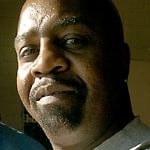
Nathson Fields, 55, and a co-defendant were sentenced to death for the 1984 murders of two rival gang members. The original trial, however, was marred by corruption, as the the judge in the case, Circuit Judge Thomas Maloney, accepted a $10,000 bribe during the trial. Thomas Maloney, who died in 2008, was ultimately convicted and spent 13 years in prison for fixing murder trials.
As a result, Fields and co-defendant Earl Hawkins were granted new trials in 1998. Hawkins, who had admitted to killing 15 to 20 people, testified against Fields in exchange for a lesser sentence. However, at Fields’ retrial, Judge Vincent Gaughan found Hawkins “incredible,” saying that “If someone has such disregard for human life, what regard will he have for his oath?”
Fields spent almost twenty years in prison, including 11.5 years on death row. He was released on bond in 2003 while awaiting retrial and has been residing outside of Chicago. This is the 19th exoneration from death row in Illinois since 1973, which is second only to Florida in the number of exonerations. Following the not guilty verdict handed down by Judge Gaughan, Fields said,* *”I feel like my prayers have been answered…It’s been 24 years of this ordeal for my family and my friends, and now with it coming to an end, it’s like a dream come true.”
M. Walberg, “23 years after judicial misconduct, ex-gang leader freed”, Chicago Tribune, April 9, 2009.
R. Hussain, “Man formerly on death row acquitted in retrial,” Chicago Sun-Times, April 8, 2009.
See also People v. Hawkins, et al., 181 Ill.2d 41 (January 29, 1998) (upholding a circuit court’s reversal of Fields’ and Hawkins’ convictions).
Paul House
Tennessee — Conviction: 1986 , Charges Dismissed: 2009

The state of Tennessee dropped all charges against House, who was charged with the 1985 murder of Carolyn Muncey. The state alleged kidnapping or rape as aggravating factors, and House was sentenced to death. Biological evidence from the victim’s clothes used against him at trial was later found through DNA testing to belong to Muncey’s husband. In House v. Bell, the U.S. Supreme Court considered new DNA testing and questions about the victim’s blood stains on House’s clothes. In 2006, the Court held that no reasonable juror would have found House guilty based on this new evidence, thus entitling him to raise constitutional issues that then led to a reversal of his conviction. The case was remanded to the District Court for the Eastern District of Tennessee, where Judge Harry Mattice vacated House’s conviction and sentence, but allowed Tennessee to pursue a new trial against him. In 2008, a Tennessee judge ordered House released from prison, pending a new trial. The state dismissed all charges on May 12, 2009 while expressing reservations about House’s complete innocence.
Sources
(See House v. Bell, No. 04-8990 U.S. (June 12, 2006); House v. Bell, E.D. Tenn. (December 20, 2007)
See also J. Satterfield, “Prosecutor drops murder charges against ex-death row inmate House,”Knoxville News Sentinel, May 12, 2009).
Daniel Wade Moore
Alabama — Conviction: 2002 , Acquitted: 2009

Daniel Wade Moore was acquitted of all charges by a jury in Alabama on May 14. Moore was originally found guilty of the murder and sexual assault of Karen Tipton in 2002. The judge overruled the jury’s recommendation of a life sentence and instead sentenced him to death in January 2003, calling the murder one of the worst ever in the county. A new trial was ordered in 2003 because of evidence withheld by the prosecution. (See State V. Moore, No. CR-04 — 0805, Ala. Ct. of Crim. App. (2206) (providing procedural summary at pp.2 – 3; the circuit judge’s order for a new trial was upheld by the Ala. Supreme Court, State v. Moore, No. Ms. 1030218, Nov. 6, 2003)). A second trial in 2008 ended in a mistrial with the jury deadlocked at 8 – 4 for acquittal.
Judge Glenn Thompson, who originally sentenced Moore to death, ordered a retrial upon discovery that the prosecution had withheld important evidence. “Orders were entered in any capital case, that whatever the state has, whatever the prosecutor has, whatever the investigation has they should provide that to the defendant,” said Judge Thompson. The evidence missing was a 256-page F.B.I. report. “The prosecution, Mr. Valeska specifically, looked me in the eye and said, quote, ‘there ain’t no such thing as an F.B.I. report.’ Well, there probably wasn’t a report, but there were 256 pages of information collected by Decatur police officers that were sent to the F.B.I.,” said Judge Thompson. According to Judge Thompson, Assistant Attorney General Don Valeska later came to him confessing there was withheld information. “Mr. Valeska came forward with the information after the conviction,” said Judge Thompson. “Clearly, the only remedy was to grant him a new trial and I did,” he said. “It frustrated and angered me that he would be willing to lie to the court,” he continued. Meanwhile, the Alabama Court of Criminal Appeals ordered Judge Thompson to stand down from the trial and continued to let Valeska prosecute Moore.
Upon hearing the jury’s not guilty verdict, Judge Thompson responded, “I felt like it was the only conclusion that a jury could reach if they actually followed the law.” Thompson also said that the problems with the prosecution withholding evidence continued throughout the 10 years of the case. Just days before the current trial started, the prosecution called the defense saying they had just found new evidence from the victim’s home computer.
Sources
(See A. Stuart, “Judge in Moore’s first trial discusses case,” WHNT (Alabama), May 18, 2009).
Ronald Kitchen
Illinois — Conviction: 1988 , Charges Dismissed: 2009

On July 7, 2009 Ronald Kitchen was exonerated and released from Illinois prison after spending twenty-one years in prison, including thirteen on death row. His death sentence had been commuted to life without parole by former Illinois Governor George Ryan in 2003 as part of a blanket clemency grant.
Kitchen and a co-defendant were found guilty of the murders of two women and three children in 1988. His conviction was based primarily on a confession he gave to detectives under the command of discredited former Police Commander Jon Burge after hours of beating and threats by police. Prosecutors also relied on the testimony of a friend of the defendants who was in prison for burglary. This witness later recanted his testimony, and the prosecutors withheld from the defense that they released this witness from prison early in return for his testimony.
The Chicago Sun-Times reported that “Illinois Assistant Attorney General Richard Schwind told Criminal Court Judge Paul Biebel that after an exhaustive review of both cases, the office determined it could not ‘sustain its burden of proof.’” The Attoney General’s office further said, “In this case it became extraordinarily clear that justice required the release of these two men.”
Kitchen was reunited with his sons, one of whom was born while he was in prison, and his family. He was represented by attorneys from the Bluhm Legal Clinic at Northwestern University School of Law.
Sources
(See R. Hussain, “Charges dropped in 20 year-old murder case,” Chicago Sun-Times, July 7, 2009; M. Walberg and C. Sadovi, “2 inmates convicted in ‘88 slayings to go free,” Chicago BreakingNews Center, July 7, 2009; and M. Walberg, “Burge-linked cases: 2 men freed for five 1988 murders as prosecutors find insufficient evidence for retrial,” Chicago Tribune, July 8, 2009)(Photo credit Bluhm Legal Clinic).
Herman Lindsey
Florida — Conviction: 2006 , Acquitted: 2009
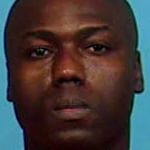
In a unanimous decision, the Supreme Court of Florida rendered a judgment of acquittal for Herman Lindsey who was convicted in 2006 of the murder of the clerk at the Big Dollar Pawn Shop, a murder that happened 12 years earlier. Lindsey had been on Florida’s death row since his conviction.
The Court held that the evidence in the case was not sufficient to convict Lindsey. They noted that the case was based completely on circumstantial evidence and that a special standard of review applies. “[T]he State failed to produce any evidence in this case placing Lindsey at the scene of the crime at the time of the murder…. Indeed, we find that the evidence here is equally consistent with a reasonable hypothesis of innocence.” Lindsey v. State, No. SC 07 – 1167 (Fla. 2009). The Court also found that the trial court had erred in denying Lindsey’s motion for a judgment of acquittal at the conclusion of the presentation of evidence.
Three of the justices concurred with the Court, but went further and stated that the State’s line of questioning of the defendant during the penalty phase improperly exceeded the permitted scope of cross-examination. “The prosecution’s comments were not only improper, but were also prejudicial and made with the apparent goal of inflaming the jury.” These Justices found that the inflammatory statements made during cross-examination would have affected the jury’s decision to impose the death penalty.
Ron Ishoy, a spokesman for the Broward County State Attorney’s Office, said the prosecution will not appeal the unanimous decision.
Sources
(See P. McMahon, “Broward death row inmate ordered set free,” Sun-Sentinel (FL), July 10, 2009; M. Caputo, “Florida Supreme Court frees Death Row Inmate in 1994 Broward murder,” Miami Herald , July 8, 2009).
Michael Toney
Texas — Conviction: 1999 , Charges Dismissed: 2009

Toney was released from jail on September 2, 2009 after the state dropped all charges against him for a 1985 bombing that killed three people. The Texas Court of Criminal Appeals overturned Toney’s conviction on December 17, 2008 because the prosecution had suppressed evidence relating to the credibility of its only two witnesses. (Ex parte Toney, AP-76,056 (Tex. Crim. App. December 17, 2008)).
The Tarrant County District Attorney’s Office subsequently withdrew from the case based on the misconduct findings. In September 2009, the Attorney General’s Office, which had been specially appointed to the case in the wake of Tarrant County’s withdrawal, dismissed the indictment against Toney. He had consistently maintained his innocence. The case had gone unsolved for 14 years until a jail inmate told authorities that Toney had confessed to the crime. The inmate later recanted his story, saying he had hoped to win early release. The state said it is continuing its investigation into the murders. Toney was killed in an automobile accident one month after his release.
Sources
(A. Branch, “Man convicted in bombing dies in wreck 1 month after his release,” Ft. Worth Star-Telegram, Oct. 4, 2009 (including picture); also email from J. Tyler, Texas Defender Service, Oct. 4, 2009)
Year of Release: 2008 ⌃
Kennedy Brewer
Mississippi — Conviction: 1995 , Charges Dismissed: 2008

Charges Dismissed: 2008 (released on bail in 2007)
Kennedy Brewer, who spent 12 years on Mississippi’s death row for the 1992 murder and rape of his girlfriend’s 3‑year-old daughter, has been exonerated of the charges, and another man, Justin Johnson, has been arrested for the same crime. A 2001 investigation by the Innocence Project found that the semen on the victim’s body did not match Brewer’s DNA, but did match Johnson’s. Johnson was a suspect early in the case, and his blood was collected and preserved in the Mississippi State Crime Laboratory for more than 10 years. In 2007, Brewer was released on bond, pending a new trial after the Innocence Project and his attorney pushed for an appeal based upon the DNA test results. Despite the results of the 2001 DNA testing, the Mississippi Supreme Court denied Brewer’s request for a new trial in 2002. Brewer eventually won a retrial from a Lowndes County judge. According to the New York Times, District Attorney Ben Creekmore of Oxford, Mississippi, who took over the case when the previous D.A. recused himself, “is preparing to file a motion dismissing all charges against Mr. Brewer.” Brewer’s attorney, Carrie Jourdan, said that Brewer is trying to get back into a normal life. She said, “He’s gainfully employed. He’s working and he’s living with his elderly, disabled mother, who he assists in taking care of. He has had no problems from a criminal legal standpoint” since he was released.
“Man charged in child slaying for which another sentenced to death,” by Holbrook Mohr, Associated Press, February 7, 2008
“New Suspect Is Arrested in Mississippi Killings,” New York Times February 8, 2008
Innocence Project’s Press Release, February 15, 2008
Glen Edward Chapman
North Carolina — Conviction: 1994 , Charges Dismissed: 2008
Glen Edward Chapman, a North Carolina man who was sentenced to death for the 1992 murders of Betty Jean Ramseur and Tenene Yvette Conley, was released from death row on April 2, 2008 after prosecutors dropped all charges against him. In 2007, North Carolina Superior Court Judge Robert C. Ervin granted Chapman a new trial, citing withheld evidence, “lost, misplaced or destroyed” documents, the use of weak, circumstantial evidence, false testimony by the lead investigator, and ineffective assistance of defense counsel. There was also new information from a forensic pathologist that raised doubts as to whether Conley’s death was a homicide or caused by an overdose of drugs.
Chapman’s lawyers, Frank Goldsmith and Jessica Leaven, were pleased with their client’s release. “Edward has always maintained, and we have always believed in, his innocence,” said Goldsmith. “Justice has not been served for the families of Ms. Ramseur and Ms. Conley, and we hope their deaths will be reinvestigated.” The state has also called for a re-opening of the investigation.
Judge Ervin found fault with Chapman’s defense attorneys at the original trial in 1994, one of whom has been disciplined by the North Carolina State Bar. The other defense attorney, Thomas Portwood, admitted drinking 12 shots of alcohol per day during a different death penalty trial. The defendant in that case, Ronald Frye, was executed in 2001.
(“Death Row Inmate Freed After 15 Years,” WRAL.com, April 2, 2008; also Press Release from attorneys Goldsmith and Leaven, April 2, 2008).
Levon “Bo” Jones
North Carolina — Conviction: 1993 , Charges Dismissed: 2008

The state of North Carolina dropped all charges against Levon Jones, and he was freed May 2, 2008 after spending 13 years on death row. U.S. District Court Judge Terrence Boyle overturned Jones’s conviction two years ago, but he was held in prison awaiting a possible retrial until prosecutors announced that they were dismissing all charges. Judge Boyle criticized Jones’s defense attorneys for “constitutionally deficient” performance, noting their failure to research the history and credibility of Lovely Lorden, the prosecution’s star witness. The judge noted, “Given the weakness of the prosecution’s case and its heavy reliance on the testimony of Lovely Lorden, there is a reasonable probability that, but for counsel’s unprofessional errors, the result of the proceeding would have been different.”
In April, Jones’s new defense team filed an affidavit in which Lorden said, “Much of what I testified to was simply not true.” She also stated that a detective coached her on what to say. Additionally, she collected $4,000 from the governor’s office for offering the clues that led to the arrest of Jones.
Jones’s retrial was set to begin May 12th, 2008. Duplin County District Attorney Dewey Hudson decided to ask the judge in the case to drop all charges. Jones was originally convicted of robbing and shooting a bootlegger named Leamon Grady.
Mandy Locke, “Death Row Inmate to go Free,” The News and Observer, May 2, 2008
see also J. Temple, “The Last Lawyer: The Fight to Save Death Row Inmates,” Univ. Press of Mississippi 2009.
Michael Blair
Texas — Conviction: 1994 , Charges Dismissed: 2008
Michael Blair was sentenced to death for the 1993 murder of 7‑year old Ashley Estell. In May 2008, following a re-investigation of the case by the Collin County prosecutor’s office, District Attorney John Roach announced that in light of the results of advanced DNA testing and the absence of any other evidence linking him to the crime, Mr. Blair’s conviction could no longer be upheld.
The Texas Court of Criminal Appeals upheld the decision of the Collin County trial court that:
“The post conviction DNA results and the evidence discovered in the State’s new investigation have substantially eroded the State’s trial case against [applicant]. This new evidence in light of the remaining inculpatory evidence in the record, has established by clear and convincing evidence that no reasonable juror would have convicted [applicant] in light of newly discovered evidence.”
Although the court recommended that a new trial be granted, the prosecution, in light of the evidence, chose not to pursue a retrial. In a dismissal motion filed in August 2008, prosecutors determined that “this case should be dismissed in the interest of justice so that the offense charged in the indictment can be further investigated.” All charges against Mr. Blair in this case were dismissed in August 2008. He remains in prison serving out life sentences for other crimes.
“Court Dismisses Ashley’s Killer, cites DNA Test,” Associated Press, The Houston Chronicle, September 17, 2008; Ex Parte Michael Nawee Blair, Nos. AP-75,954 & AP-75,955, Texas Court of Criminal Appeals, June 25, 2008 at 3.
Year of Release: 2007 ⌃
Curtis Edward McCarty
Oklahoma — Conviction: 1986 , Charges Dismissed: 2007
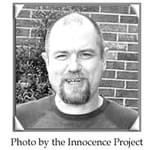
Curtis McCarty was released in May 2007 after District Court Judge Twyla Mason Gray ordered that the charges against him be dismissed. McCarty had spent the last 22 years behind bars for the murder of a police officer’s daughter in 1982; he spent 16 of those years on Oklahoma’s death row. Judge Gray ruled that the case against McCarty was tainted by the questionable testimony of former police chemist Joyce Gilchrist, who gave improper expert testimony about semen and hair evidence during McCarty’s trial.
Oklahoma County District Attorney David Prater said his office will not appeal Gray’s decision. According to the New York-based Innocence Project, an organization that assisted McCarty in his efforts to prove his innocence, Gilchrist falsely testified that hairs and other biological evidence showed that McCarty could have been the killer. In both trials, the juries convicted him and he was sentenced to death. In Gilchrist’s original notes, hairs from the crime scene did not match McCarty. She then changed her notes to say the hairs did match him. When the defense requested retesting, the hairs were lost. A judge has said Gilchrist either destroyed or willfully lost the hairs. DNA testing in recent years has also shown that another person raped the victim. McCarty’s has maintained his innocence since his arrest.
Upon returning to his parent’s home in Moore, Oklahoma, McCarthy noted that his homecoming was like “landing on a new planet” and that he had “missed the entirety” of his adult life.
(The Oklahoman, May 11, 2007 and The Innocence Project)
Michael L. McCormick
Tennessee — Conviction: 1987 , Acquitted: 2007

On December 5, 2007, a Tennessee jury acquitted Michael Lee McCormick of the 1985 murder of Donna Jean Nichols, a crime for which McCormick spent 16 years on death row. In his first trial, the prosecution introduced hair evidence from Nichols’ car that the FBI said matched McCormick. DNA testing later found that the hair did not match McCormick and this evidence was not permitted in the new trial. His original conviction was overturned in McCormick v. Tennessee (Court of Criminal Appeals of Tennessee, CCA no 03C01-9802-Cr-00052), when the court found that his original defense counsel was inadequate.
Two years after his conviction, evidence surfaced that an undercover officer had secretly recorded Mr. McCormick’s confession during a fake car theft. In his closing statement, Mr. McCormick’s attorney emphasized the prosecution’s reliance on a recorded confession by a man who “they knew to be an alcoholic and a notorious liar.” A juror, Anita Jinette admitted after the trial that McCormick’s reputation as a liar was important due to the fact that “we basically had nothing except his confession.”
McCormick’s attorney, Karla Gothard said after the trial, “We have been living with this case for years, and we are immensely relieved. I can’t imagine what Michael McCormick is feeling.” Special Judge Jon Kerry Blackwood commented, “The way this case has lingered on, there has not been closure for Michael McCormick for 20 years. This system is not perfect, but somehow it works itself out.”
“Jury Finds McCormick Not Guilty Of Killing Jeannie Nichols: Man Who Spent Years On Death Row To Go Free,” The Chattanoogan, December 5, 2007.
Jonathon Hoffman
North Carolina — Conviction: 1995 , Charges Dismissed: 2007
Prosecutors in North Carolina on December 11, 2007 dropped all charges against Jonathon Hoffman, who had been convicted and sentenced to death for the 1995 murder of a jewelry storeowner. Hoffman won a new trial in 2004 (Order of the General Court of Justice Superior Court Division: 95-CRS-15695 – 97) because information favorable to Hoffman was withheld from the defense. During Hoffman’s first trial, the state’s key witness, Johnell Porter, received immunity from federal charges for testifying against his cousin. In fact, Porter received thousands of dollars for his testimony. Neither the defense attorney nor the judge knew of this deal — an omission that resulted in the criminal investigation of Ken Honeycutt and Scott Brewer, the prosecutors in the original trial.
Porter has since recanted his testimony, stating that he lied in order to get back at his cousin for stealing money from him. Defense attorney Joseph Cheshire stated, “I think in the last five to six years, there’s a fairly well-demonstrated pattern of wrongful convictions in North Carolina that are only now coming to light because of our new open discovery law.”
Hoffman, a black man charged with killing a white man, was tried and convicted by an all-white jury despite the fact that no physical evidence connected him to the murder of Danny Cook. He has been waiting for his new trial since in 2004, when allegations of prosecutorial misconduct first arose. Charges were finally dismissed in 2007 when the new District Attorney, John Snyder dropped the case due to “insufficient admissible evidence.” Jonathon Hoffman spent 12 years on death row.
(“Prosecutor Drops Charges Against Former Death Row Inmate”, by Martha Waggoner, Associated Press, December 11, 2007).
Year of Release: 2006 ⌃
John Ballard
Florida — Conviction: 2003 , Acquitted: 2006

The Florida Supreme Court unanimously overturned the conviction of death row inmate John Robert Ballard and ordered his acquittal in the 1999 murders of two of his acquaintances (Ballard v Florida, No. SC03-1012, February 23, 2006). The Court concluded that the circumstantial evidence against Ballard was insufficient to sustain his conviction. The state’s primary evidence presented against Ballard was a hair and a fingerprint, both of which he could have left during his many visits to the victims’ apartment. Bloody fingerprints and 100 other hair samples were found associated with the crime scene, none of them belonging to Ballard, who has always maintained his innocence. The Supreme Court’s acquittal in this case was rare. In fact, since 1976 the Florida Supreme Court has acquitted only three people of all charges.
Jennifer Jones, one of the victims in the case, was a known drug dealer, and had been the target of gang violence in the past. However, the State Attorney never presented evidence ruling out gang violence, nor did the prosecutors address the suspected motive of robbery. The State Attorney General’s office said that it would not seek a rehearing in the case. At Ballard’s trial, only 9 of the 12 jurors recommended a death sentence. Yet the judge decided to sentence Ballard to death, commenting: “You have not only forfeited your right to live among us, but under the laws of the state of Florida, you have forfeited your right to live at all.” The Florida Supreme Court, in overturning this decision, held that the circumstantial evidence used in the case was insufficient to support an inference of guilt “to the exclusion of all other inferences.” (Ballard v Florida, No. SC03-1012, February 23, 2006).
(Associated Press, Feb. 23, 2006; Miami Herald, Feb. 24, 2006; Ballard v. Florida, No. SC03-1012, Feb. 23, 2006).
Year of Release: 2005 ⌃
Derrick Jamison
Ohio — Conviction: 1985 , Charges Dismissed: 2005
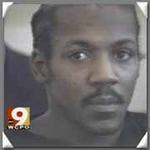
On February 28, 2005, Ohio Common Pleas Judge Richard Niehaus dismissed all charges against Derrick Jamison for the murder of a Cincinnati bartender after prosecutors elected not to retry him in the case. (Associated Press, March 3, 2005). On death row for 17 years, Jamison was a granted a new trial in 2002 when a court ruled that the prosecution had withheld critical eyewitness statements and other evidence from the defense. Jamison was originally convicted and sentenced to death in 1985 based in part on the testimony of Charles Howell, a co-defendant who received a lesser sentence in exchange for his testimony against Jamison. The prosecution withheld statements that contradicted Howell’s testimony and that would have undermined the prosecution’s theory of how the victim died, and would have pointed to other possible suspects for the murder. A federal judge ordered a new trial for Jamison in 2000, holding that Hamilton County Prosecutors withheld key evidence. The 6th U.S. Circuit Court of Appeals upheld the decision in 2002 (Jamison v. Collins, 291 F.3d 380 (6th Cir. 2002)).
One of the withheld statements involved James Suggs, an eyewitness to the robbery. Suggs testified at trial that he had been unable to make a positive identification when the police showed him a photo array of suspects. In fact, police records show that Suggs identified two suspects, neither of which was Derrick Jamison. Additional withheld evidence consisted of a series of discrepancies between Jamison’s physical characteristics and the descriptions of the perpetrators given to police investigators by eyewitnesses. The co-defendant, Howell recently testified that he could not remember anything about the crime, and state prosecutors decided not to proceed against Jamison. He remains incarcerated on other unrelated charges.
(See also, K. Perry, “‘85 Murder Conviction Dismissed,” Cincinnati Post, Mar. 1, 2005).
Patrick Croy
California — Conviction: 1979 , Acquitted: 2005
Acquitted of Homicide Charges: 1990; Non-Capital Charges Vacated, Not Retried: 2005
Patrick ‘Hooty’ Croy was exonerated on March 20, 2005, after spending 19 years in prison, seven of them on death row. He was convicted of the July 14, 1978 killing of Yreka, California police officer Jesse ‘Bo’ Hittson during a shootout between police and five people, including Croy, who were suspected of robbing a nearby liquor store. Croy was convicted in 1979 and sentenced to death. In 1985, the California Supreme Court overturned Croy’s convictions for murder, robbery, and attempted murder, but affirmed his convictions for conspiracy and assault with a deadly weapon. He was retried on the overturned charges in 1990, and testified that he had acted in self-defense because Hittson had shot him twice in the back, and Croy believed he would not have the option to surrender because of prejudice against Native Americans. He was acquitted of all charges, and the trial court indicated that Croy also would have been acquitted of the conspiracy and assault charges if they had been included among the charges at issue in his retrial. Because the conspiracy and assault charges remained in place, the court reluctantly resentenced Croy to ten years probation. For the same reason, he was not placed on DPIC’s exoneration list at that time. In 1997, Croy was returned to prison for a violation of his probation. He then filed a petition for writ of habeas corpus seeking to vacate the remaining portions of the judgment against him from his 1979. A federal district court judge granted Croy’s petition in 2005 and vacated the remaining charges. Siskiyou County prosecutors did not appeal that decision and elected not to retry him, completing his exoneration.
Note: Patrick Croy was added to DPIC’s Exoneration List on August 30, 2018. His case had been overlooked because the lesser convictions had remained in place at the time of his acquittal on the capital murder charges and DPIC was not aware of the subsequent disposition of the remaining charges against him in 2005.
(Maurice Possley, Patrick Croy, National Registry of Exonerations.)
Harold Wilson
Pennsylvania — Conviction: 1989 , Acquitted: 2005
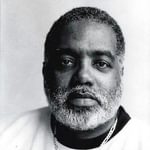
More than 16 years after a Pennsylvania jury returned three death sentences against Harold Wilson, new DNA evidence led to his acquittal. Wilson was arrested the day after the April 10, 1988, slayings of Dorothy Sewell, 64; her nephew, Tryone Mason, 33; and Mason’s girlfriend, Cynthia Goines Mills, 40. The three were murdered with a carpenter’s ax inside Sewell’s home. At his 1989 trial, police testified that they found a jacket spattered with the victims’ blood in the basement of Wilson’s home. Wilson was convicted and sentenced to death. Wilson’s trial was conducted by Philadelphia Assistant District Attorney Jack McMahon, a man best known for his role in a training video that advised new Philadelphia prosecutors on how to use race in selecting death penalty juries.
In 1999, Wilson’s death sentence was overturned on state post-conviction review when a trial-level court determined that his defense counsel had failed to investigate and present mitigating evidence during his original trial. (Commonwealth v. Harold C. Wilson, Philadelphia Court of Common Pleas, Nos. 3267 – 73, Aug.19, 1999). At that time, the court denied Wilson an evidentiary hearing on his challenges to his convictions and dismissed his guilt-stage claims. On appeal, having been presented evidence of the jury selection training tape, the Pennsylvania Supreme Court sent the case back to the trial court for a hearing on whether McMahon had used racially discriminatory practices in striking black jurors in the case. In 2003, the trial court found that McMahon had improperly exercised his peremptory strikes to eliminate potential black jurors and granted Wilson a new trial. The Philadelphia District Attorney’s office did not appeal that decision. Because mitigating evidence was unavailable to Wilson as a result of the passage of time following the prosecutor’s misconduct, the trial court barred the prosecution from seeking the death penalty on retrial. The first retrial resulted in a mistrial, when the prosecution left highly inflammatory photographs of the murder scene in view of the jury. The second retrial — before a new jury that did not have to be “death-qualified” and was chosen without the race bias from the original trial — acquitted Wilson of all charges on November 15, 2005. The defense relied heavily on new DNA evidence from blood on the killer’s jacket, which the prosecution’s expert admitted contained blood from the three victims and a fourth person who was not Wilson, suggesting the involvement of another assailant. The type of DNA testing that was performed in 2005 was not available at the time of the original trial.
(Associated Press, Nov. 18, 2005).
UPDATE: Mr. Wilson died in 2019 at age 61.
Year of Release: 2004 ⌃
Alan Gell
North Carolina — Conviction: 1998 , Acquitted: 2004
Alan Gell was arrested for a 1995 robbery and murder of a retired truck driver named Allen Ray Jenkins. The two key witnesses presented by prosecutors were Gell’s ex-girlfriend and her best friend, who were both teenagers. Both girls, who were at Jenkins’ house and pled guilty to involvement in the murder, testified that they saw Gell shoot Jenkins on April 3, 1995. However, prosecutors withheld valuable evidence that might have cleared Gell in the initial trial, including an audio tape of one of the girls saying she had to “make up a story” about the murder. (News and Observer, December 10, 2002) In 2002, a State Superior Court Judge found that the prosecutors withheld evidence “favorable” to Gell, and vacated Gell’s conviction. (North Carolina v. Gell, No. 95 CRS 1884, Order (Superior Court of Bertie County, December 16, 2002) (Vacating conviction and granting new trial.) Gell was re-tried in February 2004. The defense team was able to present evidence that Gell was out of state or in jail at the time of Jenkins’ murder, which was placed closer to April 14th. This refuted the April 3rd claim by the original prosecutors. Also challenging the state’s timetable was a series of statements by as many as 17 witnesses who told investigators that they had seen Jenkins alive between April 7th and April 10th. The most important new evidence was the taped conversation mentioned above, in which the state’s key witness referred to making up a story about the murder. Gell was originally convicted in 1998 and spent the next four years on death row until a new trial was ordered. On February 18, 2004, a jury found Gell not guilty on all counts, and he left the court with his family. (PHOTO: Alan Gell (Center), leaves the Courthouse in Bertie Countie, North Carolina, with his sister Frankie and mother Jeanette following his exoneration for the 1995 murder of Allen Ray Jenkins. Photo courtesy Scott Lewis, News & Observer.) (News and Observer, February 18, 2004)
Read “Time of Death: A Murder Mystery,” by Joseph Neff in The News and Observer
Read “Gells Files Suit Over Prosecution,” by Joseph Neff in The News and Observer
Gordon “Randy” Steidl
Illinois — Conviction: 1987 , Charges Dismissed: 2004
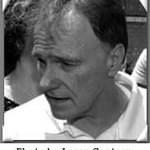
Gordon “Randy” Steidl was freed from an Illinois prison May 28, 2004, 17 years after he was wrongly convicted and sentenced to death for the 1986 murders of Dyke and Karen Rhoads. An Illinois State Police analysis in 2000 found that local police had severely botched their investigation, resulting in the wrongful conviction of Steidl and his co-defendant Herbert Whitlock. Due to the poor representation Steidl received at trial, a new sentencing hearing was granted in 1999. An appeals court reduced his sentence to life without parole. In 2003, federal judge Michael McCuskey overturned Steidl’s conviction completely and ordered a new trial, stating that if all the new evidence would have been presented at the original trial, it was “reasonably probable” that Steidl would have been acquitted by the jury (267 F. Supp. 2d 919 (C.D. Ill 2003)). The state reinvestigated the case, testing DNA evidence, but was not able to link Steidl to the crime.
The lack of concrete DNA evidence, coupled with the fact that the prosecution’s eyewitness to the murder recanted her statement, forced State Attorney General Lisa Madigan and Edgar County prosecutors to drop the charges against Steidl. (Chicago Tribune, May 27, 2004).
Read Judge Michael McCuskey’s 2003 Retrial Order (PDF)
Read “The Snitch System,” by Northwestern University School of Law Center on Wrongful Conviction
Laurence Adams
Massachusetts — Conviction: 1974 , Charges Dismissed: 2004
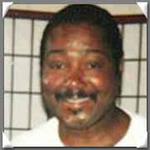
Laurence Adams left a Massachusetts prison 30 years after his conviction for the 1972 robbery and murder of a transit worker in Boston. Superior Court Judge Robert Milligan overturned Adams’ conviction in 2004 because police had withheld important evidence. The District Attorney recommended that Adams be released on his own recognizance. (Boston Globe, May 20, 2004). Charges against Adams were formally dropped on June 7, 2004. (New York Times, June 8, 2004). Adams had been convicted at age 19 on the testimony of two witnesses, both of whom had unrelated charges against them dropped after their testimony. The government’s key witness testified that Adams had admitted to the offense in a discussion in a private home, but subsequently discovered records indicated that the witness was actually incarcerated at the time that he alleged the conversation took place. The witness was in fact incarcerated with one of a pair of brothers who were suspects in the case. The second witness recanted her testimony against Adams just prior to her death. The court-appointed attorney for Adams was also representing one of the two brothers at the same time he was representing Adams. (Boston Globe, May 21, 2004). Adams was originally sentenced to death in 1974, but the Massachusetts Supreme Court reduced his sentence to life imprisonment after declaring the state’s death penalty statute unconstitutional in 1975. Adams had always maintained his innocence. He earned a bachelor’s degree in Sociology while in prison. Adams’ appellate attorney, J. J. Barter, said “it’s not a matter of him being there but not being culpable. He wasn’t there.” (Boston Globe, April 30, 2004).
Dan L. Bright
Louisiana — Conviction: 1996 , Charges Dismissed: 2004
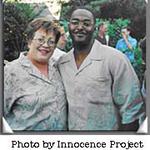
In 1996, Dan L. Bright was convicted of first-degree murder in Louisiana and was sentenced to death. On appeal, the Supreme Court of Louisiana found the evidence insufficient to support his conviction of first-degree murder and rendered a judgment of guilty of second-degree murder. (State v. Bright, 776 So.2d 1134 (La. 2000)). The trial court imposed a sentence of life without parole at hard labor. On May 25, 2004, the Supreme Court of Louisiana reversed Bright’s conviction, vacated the sentence, and remanded for a new trial holding that the state suppressed material evidence regarding the criminal history of the prosecution’s key witness, Freddie Thompson. The court noted that there was no physical evidence against Bright, and that Thompson’s testimony was the only evidence that served to convict him. Thompson was very drunk on the day of the crime. Moreover, the prosecution failed to disclose that he was a convicted felon and in violation of his parole. The court held that the specific facts of Thompson’s criminal record and the fact that he was still on parole when he testified against Bright raised questions about the veracity of his trial testimony: “This conviction, based on the facts of this case which include a failure to disclose what the State now admits is significant impeachment evidence, is not worthy of confidence and thus must be reversed.” Because material evidence had been withheld by the state, Bright’s conviction was overthrown. (See State of Louisiana v. Bright, No. 02-KP-2793, May 25, 2004). The prosecution subsequently dismissed all charges and Bright was freed. (See Associated Press, April 15, 2004; also conversation with Ben Cohen, attorney for Dan Bright, July 21, 2004).
Read “Name Dropping” by Katy Reckdahl in The Gambit Weekly
Ryan Matthews
Louisiana — Conviction: 1999 , Charges Dismissed: 2004

On Monday, August 9, 2004, Jefferson Parish prosecutors dropped all charges against 24-year-old Ryan Matthews, making him the 14th death row inmate freed with the help of DNA testing. Shortly after his 17th birthday, Matthews was arrested for the murder of a local convenience store owner. Three individuals interviewed by police were unable to definitively identify Matthews, and witnesses described the murderer as short — no taller than 5’8”. Matthews is at least 6 feet tall. Matthews’ court appointed trial attorney was unprepared, and unable to handle the DNA evidence. On the third day of the trial, the judge ordered closing arguments, and sent the jury to deliberate. When they could not agree on a verdict after several hours, the judge ordered the jury to resume deliberations until a verdict was reached. Less than an hour later, the jury returned a guilty verdict and Matthews was sentenced to death two days later.
In March 2003, Matthews’ attorneys had the physical evidence (including a ski mask) re-tested. It was the fifth round of DNA testing in his case. The DNA results excluded Matthews, and this time they pointed directly to another individual — one serving time for a murder that happened a few months after the convenience store murder and only blocks away. In April of 2004, based on the new DNA testing and findings that the prosecution suppressed evidence, District Attorney Paul Connick agreed that Matthews was entitled to a new trial (Los Angeles Times, August 10, 2004). Released into his mother’s care after she posted bond, Matthews was officially exonerated on August 9, 2004 when Connick dropped all of the charges against him. Prosecutors conceded that charges should never have been brought and stated that Matthews’ exoneration was “in the interest of justice.” (New Orleans Times-Picayune, August 9 – 11, 2004; Associated Press, August 11, 2004)
Ernest Ray Willis
Texas — Conviction: 1987 , Charges Dismissed: 2004

Ernest Ray Willis was sentenced to death for the 1986 deaths of two women who died in a house fire that was ruled an arson. Seventeen years later, Pecos County District Attorney Ori T. White revisited the case after a federal judge overturned Willis’ conviction. (Willis v. Cockrell, 2004 WL 1812698 (W.D.Tex.)) White hired an arson specialist to review the original evidence, and the specialist concluded that there was no evidence of arson. Willis, who was staying briefly at the house where the fire occurred, escaped from the house. Investigators believed they found an “accellerant” in the carpet. Officers at the scene of the blaze said that Willis had acted strangely, and prosecutors had Willis arrested. Despite limited evidence, Willis was indicted for murder and arson. Prosecutors used Willis’ dazed mental state at trial — the result of state-administered medication — to characterize Willis as “coldhearted” and as a “satanic demon.” Willis’ court-appointed lawyers, one of whom later surrendered his law license following drug charges, offered little defense. The attorneys spent a total of three hours with Willis, and as a result, Willis was found guilty and sentenced to death.The state’s new arson specialist revealed, however, that the “accellerant” initially suspected of causing the fire was in fact “flashover burning,” consistent with electrical fault fires. U. S. District Judge Royal Ferguson held that the state had administered medically inappropriate antipsychotic drugs without Willis’ consent; that the state suppressed evidence favorable to Willis; and that Willis received ineffective representation at both the guilt and sentencing phases of his trial. He ordered the state to either free Willis or retry him. The state attorney general’s office declined to appeal, and prosecutors dropped all charges against Willis. White, whose predecessors prosecuted Willis, said that Willis “simply did not do the crime. … I’m sorry this man was on death row for so long and that there were so many lost years.” (Los Angeles Times, October 7, 2004). Willis, who had no prior record, was released on October 6, 2004 with $100, ten days of medication, and the clothes on his back. (Los Angeles Times, Houston Chronicle, and Dallas Morning News, October 7, 2004).
Read “Death Isn’t Fair,” by Michael Hall in Texas Monthly
Read “After 17 Years…,” by Maureen Balleza in The New York Times
Year of Release: 2003 ⌃
Aaron Patterson
Illinois — Conviction: 1986 , Pardoned: 2003

Aaron Patterson spent 17 years on death row and always maintained his innocence in the stabbing deaths of an elderly couple in 1986. (Chicago Tribune, January 10, 2003). During his pre-trial interrogation, Patterson etched the following words on an interrogation room bench:* I lied about murders police threatened me with violence slapped and suffocated me with plastic — no phone — no dad signed false statement to murders (Tonto) Aaron.* (State v. Patterson, 735 N.E.2d 616, 627 – 28 (Ill. 2000)). In addition, photographs of the interrogation room revealed the phrase “Aaron lied” etched in the door of the room. (Id.). There was no physical evidence tying Patterson to the crime, and fingerprints recovered from the scene did not belong to him. In addition, Patterson’s former girlfriend testified that she was with Patterson on the night the of the murders. In 2000, the Illinois Supreme Court granted Patterson an evidentiary hearing to determine whether his attorney was ineffective for failing to present evidence that the confession was coerced. The Court stated: “Evidence identifying defendant as perpetrator consisted of (1) the oft-changing testimony of a teenager [Marva Hall] whose cousin had been a suspect in the crime; and (2) the testimony from the police officers and assistant State’s Attorney concerning defendant’s confession.” (Id. at 633). After Patterson’s conviction, Marva Hall swore in an affidavit that prosecutors pressured her into implicating Patterson. “It was like I was reading a script,” she said of her testimony. Hall told Northwestern University journalism students who were investigating the case: “I helped send [an] innocent man to jail.” (Newsweek, May 31, 1999).
Madison Hobley
Illinois — Conviction: 1987 , Pardoned: 2003

Madison Hobley was convicted of setting fire to an apartment building in 1987 that claimed the lives of seven tenants, including his wife and child. Hobley maintained his innocence, claiming that his confession was the product of police torture. At trial, the evidence against Hobley consisted of the testimony of Andre Council, a suspected arsonist who claimed to have seen Hobley buying gasoline before the fire, and a gas station attendant who could not identify Hobley in a lineup and could only state that Hobley “favored” the man who purchased the gasoline. Hobley’s trial was marred by prosecutiorial and juror misconduct. The Illinois Supreme Court concluded that “despite [Hobley’s] pretrial requests for production, the State failed to disclose to him the evidence of two pieces of exculpatory evidence: (1) a report that defendant’s fingerprints were not on the gasoline can introduced against him at trial, and (2) a second gasoline can found at the fire scene.” (State v. Hobley, 696 N.E.2d 313, 331 (Ill. 1998) (emphasis in original)). Records also showed that police destroyed the second gasoline can after the defense issued a subpoena for it, a move the Illinois Supreme Court said supported a finding that the destruction was “motivated by bad faith.” (Id.). In addition, post-conviction affidavits of jurors stated that some jurors were intimidated by non-jurors while they were sequestered at a hotel, and that they were prejudiced by the acts of the jury foreperson, a police-officer who believed Hobley was guilty. The affidavits also stated that jurors brought newspapers with articles about the case into the jury room and that they repeatedly violated the trial court’s sequestration order. (Id. at 338). The Court remanded the case for an evidentiary hearing on the issue of whether prosecutors violated Hobley’s constitutional rights by withholding evidence, and on the issue of whether the jurors were intimidated during deliberations. (Id. at 345). In remanding the case, the Court stated: “we stress that we are deeply troubled by the nature of the allegations in this case.” (Id. at 338).
Read “The Snitch System,” by Northwestern University School of Law Center on Wrongful Conviction
Leroy Orange
Illinois — Conviction: 1984 , Pardoned: 2003

Leroy Orange was convicted in 1985 of four counts each of murder and concealment of a homicidal death. He was found guilty and sentenced to death largely on the basis of his confession. Orange later stated that his confession was obtained by police torture and that he was innocent. However, the Illinois Supreme Court stated that there was “no evidence of physical trauma, and no witnesses were available to support the defendant’s allegations of abuse, despite the testimony of a pathologist who asserted that the Orange’s description of his confession was “consistent with someone who had been tortured.” (State v. Orange, 659 N.E.2d 935, 947 (Ill. 1995)).
At Orange’s trial, his half-brother, Leonard Kidd, testified that, although Orange was at the victims’ apartment earlier in the evening, he left before the murders and took no part in the crime. Kidd even testified that he was solely responsible for the murders. Shirely Evans, a friend of Orange, testified that Orange was with her the night of the murders (State v. Orange, 521 N.E.2d 69, 72 (Ill. 1988). Nevertheless, Orange was sentenced to death, a fact that might be largely attributed to ineffective assistance of counsel. At trial, Orange was represented by attorney Earl Washington, who was paid only $400 to represent Orange and who had three Attorney Registration and Disciplinary Commission (ARDC) charges pending at the time of Orange’s trial (State v. Orange, 659 N.E.2d 935, 947 (Ill. 1995)). The Chicago Tribune singled out Washington for his ineptitude, noting that the state filed new disciplinary charges against him. Those charges alleged that Washington’s representation of Orange and others “amounted to professional misconduct.” (Chicago Tribune, November 15, 1999).
Leroy Orange spent 19 years on death row before he was pardoned by Governor Ryan in 2003.
Stanley Howard
Illinois — Conviction: 1987 , Pardoned: 2003
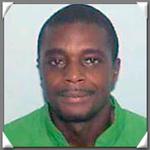
Stanley Howard was convicted in 1987 of the murder of Oliver Ridgell. (Chicago Tribune, January 10, 2003). Ridgell was shot while sitting in his car with Tecora Mullen. Mullen, who was unharmed, identified Howard as the shooter. Howard was arrested on an unrelated warrant and he seemed to fit the description of the shooter provided by Tecora Mullen.
At trial, one of the main pieces of evidence against Howard was his statement to the police. Howard, however, always maintained that his confession was obtained by police torture. In his statement, Howard said he was having dinner with his girlfriend, then went to the house of a friend, Byron Hopkins, to “pick up a gun” so he could “try to get me some money.” (State v. Howard, 588 N.E.2d 1044 (Ill. 1991)). In his statement, Howard also admitted that he ran to his girlfriend’s house after shooting Ridgell, which was a short distance from the crime scene. The defense team sought to discredit Howard’s confession at trial, pointing out all the contradictions in his statement. Howard’s girlfriend, Terry Jones, testified that she was living in a distant part of the city at the time of the crime, and Byron Hopkins presented a stipulation at trial that he did not own a 9‑milimeter gun of the type that was used in the crime. The other evidence used against Howard was the testimony of Mullen, who had identified Howard in a lineup conducted in November 1984. However, Mullen admitted that it was dark and raining outside at the time of the shooting. In addition, Mullen’s husband was originally a suspect in the murder (Id.), an alternative theory of the crime that the defense counsel was not allowed to present to the jury according to the Illinois Supreme Court (Id.).
Howard was pardoned by Governor Ryan, and subsequently removed from death row but remains incarcerated for an unrelated offense. (Chicago Tribune, January 10, 2003).
Rudolph Holton
Florida — Conviction: 1986 , Charges Dismissed: 2003
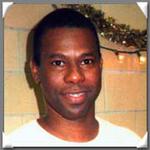
Florida death row inmate Rudolph Holton was released on January 24, 2003, after prosecutors dropped all charges against him. (Miami Herald, January 25, 2003). Holton’s conviction for a 1986 rape and murder was overturned in 2001 when a Florida Circuit Court held that the state withheld exculpatory evidence from the defense that pointed to another perpetrator. The court also found that new DNA tests contradicted the trial testimony of a state’s witness. At trial, a prosecution witness testified that hairs found in the victim’s mouth linked Holton to the crime. However, recent DNA tests conclusively exclude Holton as the contributor of the hair, and found that the hairs most likely belonged to the victim. (Florida v. Holton, No. 86 – 08931 (Fla. Cir. Ct. Sept. 2001) (order granting, in part, motion to vacate judgment)). In December 2002, the Florida Supreme Court upheld the lower court’s decision to reverse Holton’s conviction and sentence. (Florida v. Holton, No. SC01-2671, 2002 Fla. LEXIS 2687 slip op. at 1 (Fla. December 18, 2002)). Prosecutors announced in January 2003 that the state was dropping all charges against Holton, who had spent 16 years on death row.
Sources
(Miami Herald, January 25, 2003)
Read “Part I: The Innocence Defense,” by David Karp in The St. Petersburg Times
Read “Part II: The Innocence Defense,” by David Karp in The St. Petersburg Times
Lemuel Prion
Arizona — Conviction: 1999 , Charges Dismissed: 2003

On March 14, 2003, the Pima County (Arizona) Attorney’s Office dismissed all charges against death row inmate Lemuel Prion, who had been convicted of murdering Diana Vicari in 1999. In August 2002, the Arizona Supreme Court unanimously overturned his conviction, stating that the trial court committed reversible error by excluding evidence of another suspect. According to the Supreme Court, “There was no physical evidence identifying Prion as her killer,” and the trial court abused its discretion in not allowing the defense to submit evidence that a third party, John Mazure, was the actual killer. Mazure, who was also a suspect in the murder, was known to have a violent temper, saw Vicari the night of her disappearance, concealed information from the police when they questioned him, and “appeared at work the next morning after Vicari’s disappearance so disheveled and disoriented that he was fired.” The Arizona Supreme Court held that the third-party evidence “supports the notion that Mazure had the opportunity and motive to commit this crime… .” (Arizona v. Prion, No. CR-99 – 0378-AP (2002)). Prion’s conviction was based largely on the testimony of Troy Olson, who identified Prion as the man who was with Vicari on the night of her murder. However, when police first showed Olson photographs of Prion, Olson could not identify Prion. According to the Court, “[Olson] stated that the person in the photograph did not look familiar.” Seventeen months later, after seeing a newspaper picture of Prion labeling him as the prime suspect in the Vicari murder, Olson believed he could identify Prion. The Arizona Supreme Court also held that the trial court committed prejudicial error in failing to sever the Vicari murder trial from Prion’s trial for another crime, stating that “any connection between the two crimes is attenuated at best.” Prosecutors admitted that Prion would most likely have been acquitted if prosecuted under the standards set by the August 2002 ruling. Prion remained incarcerated in Utah for an unrelated crime. (Tucson Citizen, March 15, 2003).
Wesley Quick
Alabama — Conviction: 1997 , Acquitted: 2003

An Alabama jury acquitted death row inmate Wesley Quick of the 1995 double murder for which he was sentenced to death in 1997. The verdict marked the end of the third trial for Quick who was charged with shooting of John Hughes and Nathan King, on October 26, 1995. Quick’s first trial ended in a mistrial in May 1997 due to allegations of juror misconduct. During his second trial, Quick was convicted of the murders and sentenced to death row. On appeal, Quick raised the issue that his defense counsel was improperly denied access to a free transcript of the previous trial due to his indigent status. The Alabama Court of Criminal Appeals overturned that verdict in 2001, stating that the judge in Quick’s second trial was indeed wrong to deny Quick a free copy of the transcript from the previous mistrial in light of his indigent status (Quick v. State, 825 So. 2d 246 (2001)).
Quick was accused of shooting the two men in the presence of a female acquaintance, and then picking up his friend, Jason Beninati. According to Beninati, Quick drove to the scene of the crime and showed him the bodies of his victims. Beninati testified against Quick at the 1997 trial. However, at the most recent trial, Quick testified that it was actually Beninati who was responsible for the murders, and the one who had disposed of the murder weapon. Thomas Mesereau, a member of Quick’s defense team, said Quick should have never been on Death Row and that justice was served with his acquittal because “the truth finally came out.” (Birmingham News, April 22, 2003).
John Thompson
Louisiana — Conviction: 1985 , Acquitted: 2003
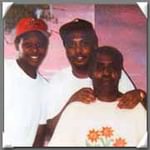
John Thompson was sentenced to death in 1985 following his conviction for a New Orleans murder. Thompson, who has maintained his innocence since his arrest, was released from prison on May 9, 2003, less than 24 hours after a jury acquitted him at his retrial. (Times-Picayune, May 9, 2003). In 1999, just five weeks before his scheduled execution, Thompson’s attorney discovered crucial blood analysis evidence that undermined information used to influence the jury’s decision to send Thompson to death row. The blood evidence, which had been improperly withheld by the State, cleared Thompson of a robbery conviction. It was that conviction that kept Thompson from testifying on his own behalf at the murder trial. In 2001, trial judge Patrick Quinlan vacated Thompson’s capital sentence, stating that the erroneous robbery conviction had likely influenced the jury’s decision to send Thompson to death row. Thompson remained in jail under a sentence of life without parole. (State v. Thompson, 825 So. 2d 552, 557 (La. 2002)). In a later appeal to the 4th Circuit Court of Appeal of Louisiana, the court ruled that Thompson was “denied his right to testify in his own behalf based upon the improper actions of the State in the other case.” (Id.) The court held that it was “the State’s intentional hiding of exculpatory evidence in the armed robbery case that led to [Thompson’s] improper conviction in that case and his subsequent decision not to testify in the instant case because of the improper conviction.” (Id.) The court reversed Thompson’s conviction and sentence, ordering a new trial.The retrial featured never-before heard testimony by Thompson, professing his innocence. In addition, jurors heard testimony from an eye-witness who insisted that it was not John Thompson whom she saw kill the victim. They also heard testimony that another man, Kevin Freeman, was the actual killer. Freeman was originally charged with the murder, but arranged a plea agreement with prosecutors and implicated Thompson. Although Freeman died prior to Thompson’s recent trial, jurors were allowed to hear his earlier statements about the case, which were followed by questions that the defense would have asked on cross-examination. The trial concluded after jurors took less than an hour to acquit Thompson. (Times-Picayune, May 9, 2003).
Timothy Howard
Ohio — Conviction: 1976 , Charges Dismissed: 2003
Timothy Howard was released from prison on April 23, 2003 when Franklin County Common Pleas Judge Michael H. Watson overturned his conviction citing evidence not disclosed or available during the 1977 trial. The new evidence was gathered through Freedom of Information requests filed by Howard. Howard was able to uncover new fingerprint evidence and conflicting witness statements made to the FBI that were not made available to defense attorneys during the his trial in 1977. Howard Spent 26 years behind bars, a portion of which time he spent on Ohio’s death row before the death penalty was ruled unconstitutional in the state.
Howard’s attorney James D. Owen said that the long legal fight ended abruptly and with little fanfare when Franklin County Prosecutor Ron O’Brien, “in the interest of justice,” agreed to dismiss all charges against Howard and his codefendant, Gary Lamar James (The Columbus Dispatch, July 18, 2003). Howard was awarded $2.5 million in July of 2006 as compensation for his wrongful conviction, the largest sum ever paid to a wrongly convicted defendant in Ohio.
(Associated Press, March, 19, 2007).
Gary Lamar James
Ohio — Conviction: 1976 , Charges Dismissed: 2003
Timothy Howard and Gary James were arrested in December, 1976 for a Columbus, Ohio bank robbery in which one of the bank guards was murdered. Both men maintained their innocence throughout the trial. In 1978, Ohio’s death penalty was held to be unconstitutional and all death row inmates were re-sentenced. Howard and James were given life sentences. With funding from Centurion Ministries of New Jersey, Howard and James were subsequently able to uncover new evidence not made available to their defense attorneys at the time of their trial, including conflicting witness statements and fingerprints. James agreed to and passed a state-administered polygraph test, prompting Franklin County prosecutor Ron O’Brien to dismiss all charges “in the interest of justice.” Howard was freed earlier on April 23 when Franklin County Common Pleas judge Michael Watson overturned his conviction, citing evidence not disclosed or available at trial. The state dropped its appeal of the judge’s ruling, thereby clearing him of the same charges. While O’Brien said that releasing the two men was an admission of a 26-year-old unsolved murder and robbery, “[w]e don’t want anybody in prison serving time for something they didn’t do.”
Columbus Dispatch, July 16, 18, and 21, 2003
Joseph Amrine
Missouri — Conviction: 1986 , Charges Dismissed: 2003

Joseph Amrine, 46, was released from jail in June 2003 after the Missouri Supreme Court, in a 4 – 3 vote, overturned his conviction and death sentence. Amrine was sentenced to death for the murder of a fellow prison inmate, Gary Barber, and spent seventeen years of his life on death Missouri’s death row.
Amrine has maintained his innocence since the alleged incident, and investigators were never able to find any physical evidence linking Amrine to the crime. Amrine was convicted mainly because of the testimony of fellow inmates, three of whom later recanted their testimony, admitting that they lied in exchange for protection. Six other prisoners testified that Amrine had been playing cards elsewhere in the prison when Barber was fatally stabbed. The Missouri Supreme Court originally ordered Amrine released in April of 2003, citing the alarming fact that there was not credible evidence to uphold the conviction or the death sentence (Amrine v. Roper, Mo. Sup. Ct. No. SC84656, April 29, 2003). Amrine’s released was postponed, however, when Prosecutor Bill Tracket filed amended murder charges against Amrine in order to conduct DNA tests on blood stains found on the pants Amrine wore the day of Barber’s death. DNA tests were inconclusive and on July 28, 2003, prosecutor Bill Tackett announced that he would not seek a new trial of Amrine and that he would be released. (Associated Press, July 28, 2003).
Arthur Benson, one of Amrine’s lawyers, said that he is in the intial stages of planning a civil case seeking compensation for the years Amrine spent behind bars for the prison killing. Sean O’Brien, another of Amrine’s attorneys, expressed his relief and disappointment, “It’s been a long time coming and we worked harder than we should have had to exonerate somebody” (The Associated Press, July 28, 2003).
Click Here for DPIC’s Coverage of State of Missouri v. Joseph Amrine
Read “A Broken System: Joseph Amrine,” by The Justice Project
Read “Facing Execution on Tainted Testimony,” by Amnesty International
Nicholas Yarris
Pennsylvania — Conviction: 1982 , Charges Dismissed: 2003

In 1981, Nicholas Yarris was in jail on a minor charge when he learned of the murder of 32-year-old Linda Mae Craig in Delaware County, Pennsylvania. Yarris believed that he would be freed if he could tell investigators he knew the killer’s identity. Yarris gave investigators a wrong name, believing he could blame the murder on a dead associate. Police leaked to other inmates that Yarris was a snitch, and Yarris endured days of regular beatings and torture. In an effort to save himself, Yarris asked what would happen if he had participated in the crime, but was not the murderer. The beatings stopped, and Yarris was charged with capital murder. A fellow inmate made a deal with the DA and began exchanging false information about Yarris in exchange for conjugal visits and reduced sentencing with the DA. This inmate became one of the few witnesses to testify against Yarris at trial. The only physical evidence prosecutors offered was semen that had been tested only for blood type. During the trial in June of 1982, the prosecution refused to hand over some 20 pages of documents which would later be revealed to include other physical evidence and conflicting witness accounts. Yarris was found guilty, and sent to death row. On appeal, a federal judge approved a motion by prosecutors to have evidence from the case tested in a lab in Alabama that was later revealed to have had no experience in DNA testing. This lab found no conclusive results to exclude Yarris or include anyone else. A May 1994 motion for a new trial was denied. The DNA evidence was finally independently tested in 2000 by arrangement with the Pennsylvania Federal Defender Office that now represents Yarris, and the results of 3 tests excluded Yarris based on evidence from the crime scene. A Philadelphia Common Pleas judge vacated his conviction and ordered a new trial (Pennsylvania v. Yarris, No 690-OF1982, Court of Common Pleas, Delaware County, September 3, 2003 [order vacating conviction]). According to Delaware County Assistant DA Joseph Brielmann, the DA’s office reviewed all available evidence, and “they have not uncovered enough information to proceed against Mr. Yarris. … In fairness to Mr. Yarris, we requested that the prosecution be dismissed.” (Pittsburgh Post-Gazette, December 10, 2003; Pennsylvania v. Yarris, No 690-OF1982, Court of Common Pleas, Delaware County, December 9, 2003 [order of Nolle Prosequi]). District Attorney Michael Green said that he might be willing to offer an apology “in a private way.” (Pittsburgh Post-Gazette, December 10, 2003). Yarris remained in custody until counsel worked out arrangements with the state of Florida on January 15, 2004 for resentencing for crimes he had committed during a 1985 escape in that state. (Philadelphia Inquirer and Los Angeles Times, December 10, 2003). His Florida sentence was reduced to 17 years and he was granted release for time served. He was freed from prison in Pennsylvania the next day.
Visit the offical homepage of Nick Yarris
Year of Release: 2002 ⌃
Juan Roberto Melendez
Florida — Conviction: 1984 , Charges Dismissed: 2002
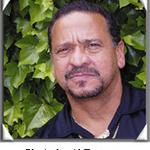
In 1984, a jury convicted Juan Melendez, then 33, of killing Delbart Baker and leaving him on the floor of his beauty school in Auburndale, FL. A convicted felon testified that Melendez admitted to the crime, and another witness with a grudge against Melendez put him at the scene. No physical evidence was found connecting Melendez, a migrant fruit picker with a 9th-grade education, to the crime. Nevertheless, a jury sentenced Melendez to die, and in 1986, the Florida Supreme Court upheld the conviction and death sentence. In a little noticed opinion, however, Justice Rosemary Barkett, the dissenting voice on the Florida Supreme Court raised doubts about the evidence, “there are cases […] when a review of the evidence leaves one with the fear that an execution would perhaps be terminating the life of an innocent person” (St. Petersburg Times, January 4, 2002). Melendez lost another round of appeals in the mid 1990s
Melendez spent nearly 18 years on Florida’s death row before Linda McDermott, a young death penalty attorney with the Capital Collateral Regional Counsel, took an interest in his case. In December 2001, Florida Circuit Court Judge Barbara Fleischer overturned Melendez’s capital murder conviction after determining that prosecutors in his original trial withheld critical evidence, thereby undermining confidence in the original verdict (St. Petersburg Times, January 4, 2002). The judge noted that no physical evidence linked Melendez to the crime. The state had used the testimony of two witnesses whose credibility was later challenged with new evidence. (Associated Press, 12/5/01) Following the reversal of the conviction, prosecutors announced the state’s decision to abandon charges against Melendez (Associated Press, 1/3/02).
See “Juan Melendez,” by Journey of Hope
Ray Krone
Arizona — Conviction: 1992 , Charges Dismissed: 2002
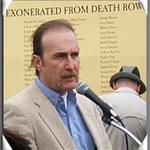
On April 8, 2002, Ray Krone was released from prison in Arizona after DNA testing showed that he did not commit the murder for which he was convicted 10 years earlier. Maricopa County Attorney Rick Romley and Phoenix Police Chief Harold Hurtt announced at a news conference on April 8, 2002 that new DNA tests vindicated Krone and that they would seek his release pending a hearing next month to vacate the murder conviction. Romley stated, “[Krone] deserves an apology from us, that’s for sure. A mistake was made here… . What do you say to him? An injustice was done and we will try to do better. And we’re sorry.” Krone was first convicted in 1992, based largely on circumstantial evidence and testimony that bite marks on the victim matched Krone’s teeth. He was sentenced to death. Three years later he received a new trial (State v. Krone, 897 P.2d 621 (Ariz. 1995) (en banc)), but was again found guilty and sentenced to life in prison in 1996. Krone’s post-conviction defense attorney, Alan Simpson, obtained a court order for DNA tests. The results not only exculpated Krone, but they pointed to another man, Kenneth Phillips, as the assailant. Prosecutor William Culbertson told Maricopa County Superior Court Judge Alfred Fenzel that the chances are 1.3 quadrillion to one that DNA found in saliva on the victim’s tank top came from Phillips. (The Arizona Republic, 4/9/02).
Read DPIC’s Press Release.
Read “Free at Last,” by People Magazine
See “Ray Krone,” by Journey of Hope
Thomas H. Kimbell, Jr.
Pennsylvania — Conviction: 1998 , Acquitted: 2002

Thomas H. Kimbell was sentenced to death in 1998 following his conviction for the murder of Bonnie Dryfuse, her two daughters, and her niece. All four were stabbed multiple times and had their throats slashed in the Dryfuse family’s rural trailer home. Kimbell, a one-time crack addict, was convicted or the murders despite the fact that the police found no eyewitnesses or physical evidence linking him to the crime.
The Pennsylvania Supreme Court overturned his conviction in 2000 citing the unfair exclusion of evidence that would have shed light on Kimbell’s innocence (State v. Kimbell, 759 A.2d 1273 (Pa. 2000)). The excluded evidence would have placed the husband of one of the victims at home, the scene of the crime, shortly before the murders. Kimbell maintained his innocence throughout his incarceration, despite testimony from witnesses that he had been near the scene of the crime shortly before the murders and despite the testimony of several individuals, including three jailhouse informants, that he had admitted committing the murders. At the retrial, jurors heard both possible versions of the crime. In addition, one of the jailhouse informants had passed away and another recanted his earlier testimony, saying he had been pressured into giving it. After deliberating for more than a day, the jury found Kimbell, 40, not guilty on all charges (Pittsburgh Post-Gazette, 5/4/02). His attorney was Thomas W. Leslie.
Larry Osborne
Kentucky — Conviction: 1999 , Charges Dismissed: 2002
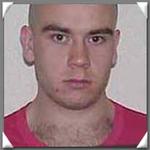
Larry Osborne, at one time the youngest man on Kentucky’s death row, was freed after a jury acquitted him in a second trial of murdering an 82-year old man and his 76-year old wife in 1997. The murders occurred when an intruder smashed a window and broke into the victims’ home in southeastern Kentucky, bludgeoning the couple and setting fire to the house. Joe Reid, 15, a friend who testified he had seen Osborne break into the couple’s home and later come out with a pocketful of cash, drowned several months before Osborne’s trial. Reid testified before a grand jury, which subsequently indicted Osborne on charges of murder, robbery, burglary and arson. Osborne’s attorneys objected to having Reid’s testimony used at trial, asserting that his testimony was tantamount to hearsay because the dead teen could not be cross-examined. The trial judge disagreed and Osborne was sentenced to death following his conviction.
The Kentucky Supreme Court disagreed with the trial judge, and in a unanimous opinion, reversed Osborne’s conviction citing the use of inadmissible hearsay testimony (Commonwealth v. Osborne, 43 S.W.2d 234 (Ky. 2001)). The second jury to hear his case acquitted Osborne of all charges, and he was freed immediately. Osborne was only 17 at the time of the crime, and ended up on death row despite the lack of physical evidence (Louisville Courier-Journal, 8/2/02). He is the first Kentucky death row inmate to be found innocent since the state reinstituted capital punishment in 1976 (Las Vegas Sun, 8/02/02).
Read “Youngest Man on Death Row…,” by The Associated Press
Andre Minnitt
Arizona — Conviction: 1993 , Charges Dismissed: 2002
In 1993, Andre Minnitt was sentenced to death for a triple murder in Tucson at El Grande Market. Minnitt was tried with co-defendant Christopher McCrimmon. After the verdict had been read, the judge conducted a poll of the jurors to ensure they all agreed with the verdict. One juror was unsure but, following the judge’s urging, assented to the verdict. The Arizona Supreme Court ruled that the juror was coerced, and it vacated Minnitt’s and McCrimmon’s convictions and death sentences.
Minnitt’s first retrial in 1997 resulted in a mistrial, but a subsequent 1999 retrial resulted in another conviction and death sentence. In 2002, the Arizona Supreme Court once again vacated the conviction. The court held that Minnitt’s 1999 retrial should have been barred by double jeopardy because during his “1993 and 1997 trials the prosecutor engaged in extreme misconduct that he knew was grossly improper and highly prejudicial, both as to the defendant and to the integrity of the system.” The court found that prosecutor Kenneth Peasley, who was subsequently disbarred, had purposefully elicited false witness testimony. The court ordered the charges against Minnitt to be dismissed.
Minnitt is one of 12 additional exonerations discovered by DPIC in 2021 and 2022 during its research of all modern-era death sentences. See a list of all of the additional exonerations here.
Sources
Sources: State v. McCrimmon, 187 Ariz. 169, 927 P.2d 1298 (1996); State v. Minnitt, 203 Ariz. 431, 55 P.3d 774 (2002).
Year of Release: 2001 ⌃
Peter Limone
Massachusetts — Conviction: 1968 , Charges Dismissed: 2001

Thirty ‑three years after being convicted and sentenced to death for a 1965 murder, Peter Limone’s conviction has been overturned (Commonwealth v. Limone, 2001 Mass. Super. LEXIS 7 (2001)) and the case against him officially dropped. The move came as a result of a Justice Department task force’s discovery of compelling new evidence that Limone and his co-defendants Joseph Salvati, Henry Tamelo, and Louis Greco were actually innocent of the murder of Edward Deegan. In 1968, all four were convicted and Limone was sentenced to die in Massachusetts’ electric chair, but was spared in 1974 when Massachusetts abolished the death penalty and his sentence was commuted to life in prison. Salvati, who was released from prison in 1997 when the governor commuted his sentence, received word from prosecutors that they were dropping the case against him as well. Tamelo and Greco both died in prison. At trial, the main witness against the four men was Joseph Barboza, a hit man cooperating with prosecutors, who later admitted that he had fabricated much of his testimony. The recently revealed FBI documents show that informants had told the FBI before the murder that Deegan would soon be killed and by whom, and a memorandum after the crime listed the men involved. Neither list included Limone, Salvati, Tamelo or Greco. (New York Times, 2/2/01 and Boston Herald, 1/21/01)
Read “Free at Last” by People Magazine
Gary Drinkard
Alabama — Conviction: 1995 , Charges Dismissed: 2001

Drinkard was sentenced to death in 1995, but his conviction was overturned by the Alabama Supreme Court in 2000 (Ex parte Gary Drinkard, 777 So. 2d 295 (2000)). A team of lawyers and investigators from Alabama and the Southern Center for Human Rights in Atlanta spent hundreds of hours preparing for the case and were able to prove that Drinkard was at home at the time the crime was committed. (Decatur Daily, 5/27/01 and Washington Post, 5/28/01).
Joaquin Martinez
Florida — Conviction: 1997 , Acquitted: 2001

Former death row inmate Joaquin Martinez was acquitted of all charges at his retrial for a 1995 murder in Florida. Martinez’s earlier conviction was overturned by the Florida Supreme Court because of improper statements by a police detective at trial. (Martinez v. Florida, 761 So. 2d 1074 (2000)). The prosecution did not seek the death penalty in Martinez’s second trial after key prosecution witnesses changed their stories and recanted their testimony. An audio tape of alleged incriminating statements by Martinez, which was used at the first trial, was ruled inadmissible at retrial because it was inaudible. The new jury, however, heard evidence that the transcript of the inaudible tape had been prepared by the victim’s father, who was the manager of the sheriff’s office evidence room at the time of the murder and who had offered a $10,000 reward in the case. (The Tampa Bay Tribune, 6/7/01). Both the Pope and the King of Spain had tried to intervene on behalf of Martinez, who is a Spanish national. Spanish Prime Minister Jose Maria Aznar welcomed the verdict, saying: “I’m very happy that this Spaniard was declared not guilty. I’ve always been against the death penalty and I always will be.” (Tampa Bay Tribune (AP) 6/6/01).
Jeremy Sheets
Nebraska — Conviction: 1997 , Charges Dismissed: 2001

Jeremy Sheets was released after the U.S. Supreme Court declined to hear an appeal of a Nebraska Supreme Court decision overturning his conviction. Prosecutors then dropped the charges against him. (Associated Press, 6/14/01). In September, 2000, the Nebraska high court unanimously ruled that a tape recording made by an alleged accomplice who committed suicide prior to the trial was the kind of statement deemed “highly suspect,” “inherently unreliable,” and hence inadmissible without the opportunity for Sheets to cross-examine. (Nebraska v Sheets, 618 N.W.2d 117 (2000)). The statements (later recanted) were made by Adam Barnett, who was arrested for the 1992 rape and murder of the same victim as in Sheets’ case. Barnett confessed to the crime and implicated Sheets. In exchange for the taped statement, Barnett received a plea bargain in which he avoided a charge of first degree murder, did not have an additional weapons charge filed, and received a commitment for his safety while incarcerated. Barnett’s statement was the key evidence used against Sheets at trial. (State v. Sheets, 618 N.W.2d 117 (Neb. 2000) and Associated Press, 6/12/01).
Charles Irvin Fain
Idaho — Conviction: 1983 , Charges Dismissed: 2001

Charles Irvin Fain, a Vietnam veteran who spent over 18 years on Idaho’s death row, was freed with all charges dismissed in 2001. Although Fain always maintained his innocence, he was convicted and sentenced to death for the February 1982 kidnapping, sexual assault and drowning of 9‑year-old Daralyn Johnson. Fain, who was unemployed and living with his parents in Redmond, Oregon at the time of the crime, had lived in Idaho until June 1981. He returned to Idaho in March of 1982 to look for work. Fain moved in with a neighbor of the Johnson family, and in September of 1982, police asked that he provide hair samples. Fain agreed, and those samples were the key evidence against him in his trial. Testifying on behalf of Fain were witnesses who placed Fain in Oregon in February of 1982. However, the jury found Fain guilty, primarily on the forensic testimony of an FBI specialist about the hairs, and the testimony of two jailhouse informants who claimed that Fain made “incriminating statements” about the case. With the help of new attorneys, Fain was able to get the physical evidence tested under a new DNA testing process known as Mitochondrial DNA Testing. Results of those tests not only excluded Fain, but pointed to two other suspects. The US District Court judge who originally would not consider Fain’s innocence claims vacated the conviction on July 6, 2001 and ordered prosecutors to either retry or release Fain. Canyon County District Attorney David Young announced that the state would not retry Fain, who was released from the maximum-security facility in Boise, Idaho on August 23, 2001. (Los Angeles Times, August 19 and 24, 2001) Young stated that “justice requires the action we have taken today,” indicating that the investigation for the killer would be re-opened. (New York Times, August 24, 2001)
Year of Release: 2000 ⌃
Steve Manning
Illinois — Conviction: 1993 , Charges Dismissed: 2000

Steve Manning became the 13th inmate exonerated in Illinois, when prosecutors announced that they are dropping charges and no longer plan to retry Manning for the 1990 slaying of trucking company owner Jimmy Pellegrino. Manning was convicted and sentenced to death on the word of informant Tommy Dye, who testified that Manning twice confessed to him when they shared a jail cell. However, secret tape recordings of the two men’s conversations, made at the request of the FBI, revealed no such confession, and Manning vehemently denied confessing. In exchange for his testimony, Dye received an 8‑year reduction on his prison sentence on theft and firearms charges. Manning remains in prison on unrelated charges. (Illinois v. Manning (695 N.E.2d 423 (1998) and Chicago Tribune, 1/19/00).
UPDATE: Despite being exonerated in Illinois, Manning was being held in Missouri on a kidnapping conviction. On February 26, 2004, Manning was also cleared of those charges and walked out of prison a free man. New investigations revealed that the informant who testified against Manning had received special treatment while in prison. A federal appeals court had ordered a new trial on the kidnapping charges in November of 2002, but prosecutors decided instead to drop all charges. Manning was the 13th person exonerated in Illinois and this led Governor George Ryan to declare a moratorium on executions as exonerations exceeded excutions. (Chicago Tribune, February 27, 2004)
Read “The Snitch System,” by Northwestern University School of Law Center on Wrongful Conviction
Eric Clemmons
Missouri — Conviction: 1987 , Acquitted: 2000

In 1983, Eric Clemmons started a 50-year prison sentence for killing a man in St. Louis during a fight. In 1987, he was accused of stabbing Henry Johnson, a fellow inmate, to death. At trial, one guard testified that he had seen Clemmons stab Henry Johnson. Three other inmates testified that Fred Bagby was the man who had stabbed Johnson. However, the prosecutor claimed that the inmates blamed Bagby because he was conveniently killed before the trial began. A jury convicted Clemmons of the murder and a Judge sentenced him to die.
After losing all his appeals in state court and his initial appeal in federal court, Clemmons received papers from another inmate, including a memo written from Captain A.M. Cross, who had testified against Johnson at trial. The memo stated that an inmate had told Gross immediately after the attack that Bagby killed Johnson. Armed with new evidence, and a new attorney, Clemmons filed a federal appeal with the same federal court that had previously rejected his appeal. The three-judge panel reversed their opinion and ordered a new trial. (Clemmons v. Delo, 124 F.3d 944 (8th Cir. 1997)).
At trial, Clemmons presented a letter from Johnson to a prison official in which Johnson described an altercation with Fred Bagby. Furthermore, an expert testified that the blood found on Clemmons’ sweatshirt and hat was not splatter from a stab wound, but was instead consistent with a bloody man running into him. When all the new evidence was presented at re-trial, a circuit court jury acquitted Clemmons in 3 hours on February 18, 2000. Clemmons remains incarcerated on other charges, which he is also challenging. (Kansas City Star, February 27, 2000).
Joseph Nahume Green
Florida — Conviction: 1993 , Charges Dismissed: 2000
Joseph Nahume Green was convicted of the 1992 killing of the society page editor of the weekly Bradford County Telegraph, Judith Miscally, and was subsequently sentenced to death. Prosecutors dismissed charges on March 16, 2000 of the murder. (St. Petersburg Times March 17, 2000).
Green, who has always maintained his innocence, was convicted largely upon the testimony of the state’s only eyewitness, Lonnie Thompson. In appeals process, the Florida Supreme Court questioned Thompson’s fitness in ordering a new trial Green, citing that Thompson’s testimony was “often inconsistent and contradictory.” (Nahume Green v. Florida, 688 So. 2d 301 (1996)). Considering the importance of Thompson’s testimony to the prosecution’s case, the Florida Supreme Court overturned the conviction and ordered a new trial in Alachua County.
During the re-trial, Green’s attorneys challenged Thompson’s competency. The court found that Thompson was mildly retarded and had suffered head traumas that caused memory problems. Based on these facts, the trial judge found Thompson incompetent to testify, and the 1st District Court of Appeal affirmed the decision. This dismissal of testimony, coupled with the fact that the prosecution could not present any physical evidence linking Green to the crime, led Circuit Judge Robert P. Cates, who had originally sentenced Green to die, to dismiss all charges, saying that there was no evidence tying Green to the murder (St. Petersburg Times, November 28, 2001).
Read “Ex-Death Row Inmate…,” by Sydney P. Freedberg in The St. Petersburg Times
Earl Washington
Virginia — Conviction: 1984 , Pardoned: 2000
Commuted to life: 1994, Absolute Pardon: 2000
Earl Washington suffers from mental retardation. After he was arrested on another charge in 1983, police convinced him to make a statement concerning the rape and murder of a woman in Culpeper in 1982. He later recanted that statement. Subsequent DNA tests confirmed that Washington did not rape the victim, who had lived long enough to state that there was only one perpetrator of the crime. The DNA results combined with the victim’s statement all but exonerated Washington. Shortly before leaving office in 1994, Governor Wilder commuted Washington’s sentence to life with the possibility of parole. In 2000, additional DNA tests were ordered and the results again excluded Washington as the rapist. In October 2000, Virginia Governor Jim Gilmore granted Earl Washington an absolute pardon. (Statement of Governor Jim Gilmore Regarding the Pardon of Earl Washington, 10/2/00; New York Times, 10/3/00; and Washington Post, 9/24/00, 10/4/00, and 2/15/01).
Read “Life After Death Row,” by Sara Rimer inThe New York Times Magazine
Read “A Broken System: Earl Washington, Jr.,” by The Justice Project
William Nieves
Pennsylvania — Conviction: 1994 , Acquitted: 2000
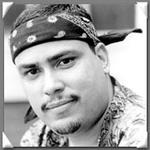
On October 20, 2000, William Nieves was freed from death row when a Philadelphia jury acquitted him of the 1992 murder of Eric McAiley. Nieves was convicted of the murder in 1994, but maintained his innocence. In 1997, the Pennsylvania Supreme Court held that Nieves was inadequately represented at his first trial and granted him a new trial (Commonwealth v. Nieves, 746 A.2d 1102 (2000)). Nieves’ lawyer on his retrial, former Philadelphia homicide prosecutor Jack McMahon, said “The prosecution’s main eyewitness… told the police two black males did it. Four hours later, she said the same thing. Within the same 24-hour period, she got interviewed by homicide and said a Hispanic male did it.” McMahon said “William Nieves’ first trial was not presented in the way it should have been presented, and that’s wrong when someone is being sentenced to death.” At the re-trial, McMahon pointed out the inconsistencies in the key witness’s identification of the killer and Nieves was acquitted (Associated Press, 10/21/00).
Read Jenn Carbin, “A Matter of Life and Death,” (Parts I and II), Philadelphia CIty Paper (Nov. 1 – 8, 2001).
Update: Nieves died on Oct. 8, 2005 from liver problems that he claimed were not properly treated while he was in prison. (Associated Press, Oct. 13, 2005).
Frank Lee Smith
Florida — Conviction: 1986 , Charges Dismissed: 2000
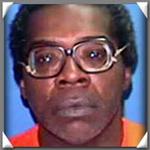
Frank Lee Smith, who had been convicted of a 1985 rape and murder of an 8‑year-old girl, and who died of cancer in January 2000 while still on death row, was cleared of these charges by DNA testing, according to an aide to Florida Gov. Jeb Bush. After the trial, the chief eyewitness recanted her testimony. Nevertheless, Smith was scheduled for execution in 1990, but received a stay. Prosecutor Carolyn McCann was told by the FBI lab which conducted the DNA tests that: “He has been excluded. He didn’t do it.” Another man, who is currently in a psychiatric facility, is now the main suspect. (Washington Post, 12/15/00 (AP) and St. Petersburg Times (Florida) 12/15/00).
Read “Requiem for Frank Lee Smith,” by Frontline
Michael Graham
Louisiana — Conviction: 1987 , Charges Dismissed: 2000

After spending 13 years on death row, Michael Graham was released from the Louisiana State Penitentiary at Angola on December 28, 2000 after the Louisiana Attorney General dismissed charges against him and his co-defendant Albert Burrell. Burrell was released on January 3, 2001. Graham and Burrell were sentenced to death in 1987 for the murder of an elderly couple. Earlier this year, a judge threw out their convictions because of a lack of physical evidence and suspect witness testimony used at trial. Prosecutor Dan Grady acknowledged that the case was weak and “should never have been brought to [the] grand jury.” During the trial, prosecutors withheld key information from the defense, failed to produce any physical evidence, and relied only on witness testimony, which has since been discredited. Dismissing the charges, the Attorney General’s office cited a “total lack of credible evidence” and stated “prosecutors would deem it a breach of ethics to proceed to trial.” Recent DNA tests proved that blood found at the victims’ home did not belong to Burrell or Graham. The trial attorneys appointed to defend Burrell were later disbarred for other reasons. (Associated Press 12/28/00 and The Advocate Online, 3/19/01).
Read “A Broken System: Michael Graham,” by The Justice Project
Albert Burrell
Louisiana — Conviction: 1987 , Charges Dismissed: 2000
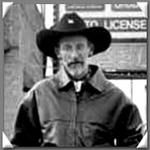
After spending 13 years on death row, Michael Graham was released from the Louisiana State Penitentiary at Angola on December 28, 2000 after the Louisiana Attorney General dismissed charges against him and his co-defendant Albert Burrell. Burrell was released on January 3, 2001. Graham and Burrell were sentenced to death in 1987 for the murder of an elderly couple. Earlier this year, a judge threw out their convictions because of a lack of physical evidence and suspect witness testimony used at trial. Prosecutor Dan Grady acknowledged that the case was weak and “should never have been brought to [the] grand jury.” During the trial, prosecutors withheld key information from the defense, failed to produce any physical evidence, and relied only on witness testimony, which has since been discredited. Dismissing the charges, the Attorney General’s office cited a “total lack of credible evidence” and stated “prosecutors would deem it a breach of ethics to proceed to trial.” Recent DNA tests proved that blood found at the victims’ home did not belong to Burrell or Graham. The trial attorneys appointed to defend Burrell were later disbarred for other reasons. (Associated Press 12/28/00 and The Advocate Online, 3/19/01).
Read “A Broken System: Michael Graham,” by The Justice Project
Oscar Lee Morris
California — Conviction: 1983 , Charges Dismissed: 2000
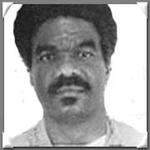
Morris was convicted in 1983 and sentenced to death. His death sentence was vacated by the California Supreme Court in 1988. Although the court did not overturn his conviction, it later ordered an evidentiary hearing when the state’s chief witness against Morris issued a deathbed recantation. After the evidentiary hearing, the Los Angeles County Superior Court granted Morris a new trial. Prosecutors decided not to retry the case and Morris was freed in 2000. (L.A. Daily Journal, October 29, 2002). At his initial trial, Morris was represented by Ronald Slick, who was criticized in 2001 for giving prosecutors confidential documents to help them keep a former client on death row. (Id.). Morris’s chief accuser was Joe West. West implicated Morris after being arrested while on parole. “Joe West testified on direct examination by the prosecutor that his motive for cooperating with the prosecution was a quarrel with defendant which resulted in his attempt on defendant’s life…” (People v. Morris, 756 P.2d 843, 857 (CA 1988)). According to the California Supreme Court, “no motive or explanation for the murder was disclosed at trial other than the statement attributed to defendant by Joe West” that Morris wanted to kill someone. (Id. at 854). The prosecutor in the case, Arthur Jean, Jr., now a L.A. Country Superior Court Judge, withheld from the defense that West was given special treatment in light of his testimony. The California Supreme Court noted that Jean had written two pretrial letters on West’s behalf, asking a fellow prosecutor and the parole board to grant West leniency for other crimes to reward his testimony against Morris. The California Supreme Court held that the prosecutor’s failure to disclose these actions violated Morris’s due process rights. The court added, “The nondisclosure was compounded, moreover, by the district attorney’s affirmative representation to the jury that West had not received any benefits in return for his testimony.Ó (Id. at 863). Jean told jurors in the case that “[There] is no evidence, not a shred, and you would have it if it existed, if Mr. West got any benefit from this, that is, in the handling of his criminal case.” (Id.). West later confessed that he fabricated the entire case against Morris. “The testimony I gave against Oscar Morris…in 1978 was a lie,” said West in a 1997 sworn declaration a few weeks before his death. (L.A. Daily Journal, October 29, 2002). (Note: Morris was originally charged with robbery and murder. The robbery charge was reversed by the California Supreme Court in its 1988 ruling when the court overturned his sentence.)
Year of Release: 1999 ⌃
Shareef Cousin
Louisiana — Conviction: 1996 , Charges Dismissed: 1999

Shareef Cousin was convicted and sentenced to death for the murder of Alred Michael Gerardi in a holdup outside a French Quarter restaurant. Cousin was 16 at the time of the crime and 17 when he was sentenced to death, making him the youngest person ever sent to death row in Louisiana.
The Louisiana Supreme Court overturned his conviction because of improperly withheld evidence (Louisiana v. Cousin, 710 So. 2d 1065 (1998)). District Attorney Harry Cornick Sr. decided on January 8, 1999 not to pursue the case further. Cornick Sr. said prosecutors did not have enough evidence to pursue the case. (Associated Press, January 8, 1999). Cousin had maintained that he was at a city recreation department basketball game at the time of the crime and his coach testified that he dropped him off at home just 20 minutes after the slaying. (New York Times, January 10, 1999)
Anthony Porter
Illinois — Conviction: 1983 , Charges Dismissed: 1999
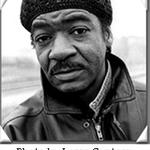
Porter was released in February, 1999 on the motion of the State’s Attorney after another man confessed on videotape to the double 1982 murder that sent Porter to death row. Charges were filed against the other man, who claimed he killed in self-defense. The case was broken by investigator Paul Ciolino working with Prof. David Protess and journalism students from Northwestern University. Their investigation also found that another witness had been pressured by police to testify against Porter. Porter came within 2 days of execution in 1998 and was only spared because the Court wanted to look into his mental competency. Porter has an IQ of 51. His conviction was officially reversed on March 11, 1999. (New York Times, 2/6/99 and 3/12/99).
UPDATE: The man who confessed to the murders, Alstory Simon, eventually pled guilty and was serving a 37-year sentence. However, in 2014 Illinois moved to dismiss charges against him, and he was ordered to be released. (Chicago Sun-Times, Oct. 30, 2014).
Steven Smith
Illinois — Conviction: 1985 , Acquitted: 1999
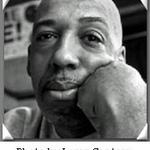
Steven Smith was convicted of the murder of Virdeen Willis Jr., an off-duty assistant warden at the Illinois penitentiary in Pontiac, in 1985. In 1990, the state Supreme Court reversed Smith’s first conviction and cast doubt on the prosecution’s theory. Smith was retired again in 1996, mainly due to the testimony of Debrah Caraway, who claimed to have witnessed the murder. Caraway proved to be an unreliable witness and she provided the prosecution with contradicting accounts of the crime.
The Illinois Supreme Court overturned Smith’s conviction in 1999 because of this unreliable evidence. As a result, Smith was immediately released and is not subject to re-trial. Justice James Heiple, writing for the court said, “When the state cannot meet its burden of proof, the defendant must go free.” (Illinois v. Smith, 708 N.E.2d 365 (1999)). On August 1, 2002, Illinois Governor George Ryan issued a pardon to Smith based on innocence. Smith is the 11th death row inmate to be freed in Illinois since the death penalty was reinstated and the 9th since 1994. (Chicago Sun-Times, February 20, 1999 and August 2, 2002).
Read “The Snitch System,” by Northwestern University School of Law Center on Wrongful Conviction
Ronald Keith Williamson
Oklahoma — Conviction: 1988 , Charges Dismissed: 1999
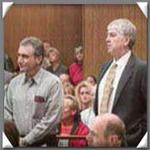
Ronald Williamson and Dennis Fritz were charged with the murder and rape of Deborah Sue Carter, which occurred in Ada, Oklahoma in 1982. They were arrested four years after the crime. Both were convicted and Williamson received the death penalty. In 1997, a federal appeals court overturned Williamson’s conviction on the basis of ineffectiveness of counsel (Williamson v. Ward, 110 F.3d 1508 (10th Cir. 1997) aff’g 904 F. Supp. 1529 (E. D. OK 1995)). The Court noted that the lawyer had failed to investigate and present to the jury the fact that another man had confessed to the crime. The lawyer had been paid a total of $3,200 for the defense. Recently, DNA tests from the crime scene did not match either Williamson or Fritz, but did implicate Glen Gore, a former suspect in the case. All charges against the two defendants were dismissed on April 15, 1999 and they were released. Williamson suffers from bipolar depression and has been hospitalized for treatment. (Daily Oklahoman, 3/18/99 and New York Times 4/16/99).
Read “Life After Death Row,” by Sara Rimer in The New York Times Magazine
Read “The Innocent Man: Murder and Injustice in a Small Town,” by John Grisham (Doubleday, 2006)
See Frontline: Burden of Innocence, by PBS
Watch an interview with Ronald Williamson.
Ronald Jones
Illinois — Conviction: 1989 , Charges Dismissed: 1999
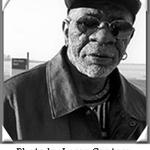
Ronald Jones, 49, was freed after more than eight years on Illinois’ death row after prosecutors dropped all charges against him. Jones was charged with the 1985 rape and murder of Debra Smith on Chicago’s South Side (Chicago Tribune, May 18, 1999). Jones, who was convicted partially on the basis of his confession, testified at trial that the police had beaten the confession out of him. Jones was a homeless man with an IQ around 80 when he was convicted of the rape and murder. Prosecutors at his conviction described him as a “cold brutal rapist” who “should never see the light of day.” (NY Times, May 19, 1999).
Recent DNA testing revealed that Jones was not the rapist and there was no evidence of any accomplice to the murder. The Cook County state’s attorney filed a motion asking the Illinois Supreme Court to vacate Jones’s conviction in 1997. In May 1999, the state dropped all charges against Jones. He is being temporarily detained pending another matter in a different state (Associated Press, May 18, 1999).
Clarence Richard Dexter
Missouri — Conviction: 1991 , Charges Dismissed: 1999
Dexter was accused in 1990 of murdering his wife of 22 years. Police overlooked significant evidence that the murder occurred in the course of a botched robbery and quickly decided that Dexter must have committed the crime. Dexter’s trial lawyer was in poor health and under federal investigation for tax fraud and failed to challenge blood evidence presented at trial. The conviction was overturned in 1997 because of prosecutorial misconduct. (Missouri v. Dexter, 954 S.W.2d 332 (1997)) The defense then had the blood evidence carefully examined and showed that the conclusions presented at trial were completely wrong. The state’s blood expert admitted that his previous findings overstated the case against Dexter. On the eve of Dexter’s retrial in June, 1999, the prosecution dismissed the charges and Dexter was freed. (Missouri State Public Defender System Memo, 6/7/99 and Kansas City Star, 6/9/99)
Warren Douglas Manning
South Carolina — Conviction: 1989 , Acquitted: 1999
Manning was convicted in 1989 for the slaying of a South Carolina police officer in 1988. The conviction was overturned in 1991 (State v. Manning, 409 S.E.2d 372 (SC 1991)). Manning was retried in 1993, but the case ended in a mistrial. Manning’s third trial in 1995 resulted in another conviction, but it was overturned on December 29, 1997, when the South Carolina Supreme Court held that the trial court abused its discretion by granting the State’s motion to change venue for the selection of the jury. The Court ordered a new trial. (State v. Manning, 495 S.E.2d 191 (SC 1997)). The subsequent trial was declared a mistrial, and prosecutors pursued the case a fifth time. In 1999, at his last trial, Manning was represented by expert death penalty attorney, David Bruck. Manning maintained that although he had been arrested by the officer for driving under license suspension, Manning escaped when the officer stopped another car. The state’s case was entirely circumstantial, and the jury acquitted Manning after less than 3 hours of deliberation. (Morning News (South Carolina), 10/1/00).
Alfred Rivera
North Carolina — Conviction: 1997 , Charges Dismissed: 1999
Alfred Rivera, 28, was sentenced to death in the shooting deaths of Michael A. Nicholson and James E. Smith. Nicholson and Smith were shot in the head at close range inside Nicholson’s apartment in 1996. After two years on death row, the North Carolina Supreme Court ordered a new trial for Rivera ruling that the trial judge should have allowed jurors to hear testimony that Rivera may have been framed. (North Carolina v. Rivera, 514 S.E.2d 720 (1999)).
Rivera’s defense was bolstered when a witness came forward to testify that he had heard Antonio T. Bryant claim that he planned to blame the shootings on Rivera. Bryant was one of three men with Rivera at Nicholson’s apartment, according to some testimony. Conflicting eyewitness testimony as to whether Rivera was actually at the scene of the crime, or whether he was visiting his girlfriend, was sufficient to cast doubts in the minds of the jurors, who acquitted Rivera of two counts of first-degree murder. (Winston-Salem Journal, November 23, 1999).
Following the verdict, three jurors identified that they voted for acquittal because the prosecution was unable to prove that Rivera was at the scene of the shootings. Leaving the courthouse, Rivera hugged his three-year-old son, stating that he was “elated” and “felt vindicated.” (Winston-Salem Journal, November 23, 1999).
Year of Release: 1998 ⌃
Robert Lee Miller, Jr.
Oklahoma — Conviction: 1988 , Charges Dismissed: 1998
Robert Lee Miller was convicted of the rape and murder of two elderly women in 1988 and subsequently sentenced to death. In 1995, Oklahoma County prosecutors agreed to a new trial for Miller after DNA testing proved it was not Miller’s semen found on bedclothes at both crime scenes. During the original trials, prosecutors argued that this semen was Miller’s because it matched his blood type. Despite the DNA results, prosecutors still claimed Miller was involved in the crimes.
In February 1997, Oklahoma County Special Judge Larry Jones dismissed the charges against Miller, saying that there was not enough evidence to justify his continued imprisonment. One month later, Oklahoma County District Judge Karl Gray reinstated the charges in response to an appeal by the District Attorney’s office; however, the prosecution ultimately decided to drop all charges and Miller was released.
Read “When the Evidence Lies,” by Belinda Luscombe in Time Magazine
Curtis Kyles
Louisiana — Conviction: 1984 , Charges Dismissed: 1998
Kyles was first tried in November 1984, but the ended with a hung jury and a mistrial. In his second trial, in December 1984, Kyles was convicted and sentenced to death. On April 19, 1995, the U.S. Supreme Court reversed Kyles’ conviction citing prosecutorial misconduct in suppressing exculpatory evidence: The state had withheld considerable information about a paid informant who may have been the actual murderer. (Kyles v. Whitley, 514 U.S. 419 (1995)). Kyles’s successful appeal was in the form of a federal habeas corpus petition, since he had lost all of his appeals in state court. Kyles’s third trial ended in October 1996 when the jury deadlocked. In two additional trials, one in September 1997 and another in February 1998, each ended with a jury deadlock. After the fifth mistrial, prosecutors decided to drop charges and Kyles was released. (The Times-Picayune, 2/18/98).
Year of Release: 1997 ⌃
Ricardo Aldape Guerra
Texas — Conviction: 1982 , Charges Dismissed: 1997
Guerra was sentenced to death for the murder of a police officer in Houston. Federal District Judge Kenneth Hoyt ruled on Nov. 15, 1994 that Guerra should either be retried in 30 days or released, stating that the actions of the police and prosecutors in this case were “outrageous,” “intentional” and “done in bad faith.” He further said that their misconduct “was designed and calculated to obtain … another ‘notch in their guns.’” (Guerra v. Collins, 916 F. Supp. 620 (S.D. Texas, 1995)). Judge Hoyt’s ruling was unanimously upheld by the U.S. Court of Appeals. (Guerra v. Johnson, 90 F.3d 1075 (5th Cir. Tex. 1996)). Although Guerra was granted a new trial, Houston District Attorney Johnny Holmes dropped charges on April 16, 1997 instead. Guerra returned to his native Mexico. (New York Times, 4/17/97).
Read “Mexican Long Held…,” in The New York Times
Benjamin Harris
Washington — Conviction: 1985 , Charges Dismissed: 1997
On March 2, 1994, U.S. District Judge Robert Bryan overturned Harris’ conviction and vacated his sentence of death for the 1984 murder of Jimmy Turner on the basis that his original trial lawyer had been incompetent. Harris’s attorney interviewed only 3 of the 32 witnesses listed in police reports and spent less than 2 hours consulting with Harris before trial. Harris’s co-defendant was acquitted. Bryan ordered Harris released from custody if not brought to a speedy retrial. (Harris by & Through Ramseyer v. Blodgett, 853 F. Supp. 1239 (W.D. Wash. 1994)). The decision was upheld by the 9th Circuit Court of Appeals on September 12, 1995. (Harris by & Through Ramseyer v. Wood, 64 F.3d 1432 (9th Cir. Wash. 1995)). The prosecution decided not to retry Harris but tried to have him confined as insane. (They had previously argued that he was competent to stand trial.) On July 16, 1997, a jury decided that Harris should not be imprisoned at Western State Hospital. Harris maintains his innocence and says he was framed. (The Seattle Times, 8/19/97).
Read “Exonerated but Never Set Free,” by Maureen O’Hagan in The Seattle Times
Robert Hayes
Florida — Conviction: 1991 , Acquitted: 1997
Hayes was convicted of the rape and murder of a co-worker based partly on faulty DNA evidence. The Florida Supreme Court threw out Hayes’s conviction and the DNA evidence in 1995 (Hayes v. Florida, 660 So. 2d 257 (1995)). The victim had been found clutching hairs probably from her assailant. The hairs were from a white man, whereas Hayes is black. Hayes was acquitted at a retrial in July, 1997. (Ft. Lauderdale Sun Sentinel, 7/17/97).
Read “The Other 13 Survivors…,” by Sydney Freedberg in The St. Petersburg Times
Christopher McCrimmon
Arizona — Conviction: 1993 , Acquitted: 1997
Christopher McCrimmon was convicted and sentenced to death for a triple murder that occurred in Tucson’s El Grande Market in 1992. Two other co-defendants, Andre Minnitt and Martin Soto-Fong, were also sentenced to death for the same crime. At McCrimmon’s trial, one juror hesitated about his vote for conviction. The trial judge met with the jury, which then shortly returned a unanimous guilty verdict. The Arizona Supreme Court overturned McCrimmon’s conviction in 1996 because of the judge’s undue pressure on the jury. (Arizona v. McCrimmon/Minnitt, 927 P.2d 1298 (1996)). Subsequently, it was discovered that the lead prosecutor against all 3 co-defendants, Kenneth Peasley, presented false evidence in the original case. With this knowledge, McCrimmon was quickly acquitted at his re-trial in 1997. (See Arizona v. Minnitt, 55 P.3d 774, 779 (2002) (vacating co-defendant Minnitt’s conviction and sentence and barring re-trial because of deliberate prosecutorial misconduct)). In commenting on the prosecutor’s deceit, the Arizona Supreme Court wrote: “The record is replete with evidence of Peasley’s full awareness that [evidence he presented] was utterly false. Peasley’s misdeeds were not isolated events but became a consistent pattern of prosecutorial misconduct that began in 1993 and continued through re-trial in 1997.” (See J. Toobin, “Killer Instincts,” The New Yorker, Jan. 17, 2005). In 2004, the Court unanimously voted to disbar Peasley, stating that his behavior “could not have been more harmful to the justice system.” (Ibid.). Peasley had twice been selected as the state prosecutor of the year.
Both McCrimmon and Minnitt remained incarcerated on other unrelated charges. Soto-Fong, whose conviction has not been overturned, was removed from death row because he was a juvenile at the time of the crime. (See also, J. Barrios, “Case Discarded: Tucson Convict Off Death Row,” Arizona Daily Star, Oct. 12, 2002).
Randall Padgett
Alabama — Conviction: 1992 , Acquitted: 1997

Padgett was convicted of murdering his estranged wife in 1990 and was sentenced to death. The conviction was overturned by the Alabama Court of Criminal Appeals in 1995 (Padgett v. Alabama, 668 So. 2d 78 (1995)). In October, 1997, Padgett was acquitted of all charges at a retrial. There was some evidence presented that another woman had committed the crime. Padgett’s brothers, children and other relatives burst into tears when the foreman read the not guilty verdict. (The Gadsden Times, 10/3/97).
Year of Release: 1996 ⌃
Joseph Burrows
Illinois — Conviction: 1989 , Charges Dismissed: 1996
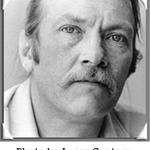
Joseph Burrows was sentenced to death in 1989 for the 1988 murder of an 88-year-old man, William Dulin. Burrows spent five years on death row before a judge in Kankakee, Illinois, ordered a new trial for Burrows after key witnesses recanted their testimony. Considering that no physical evidence linked Burrows to the crime, the testimony of the eyewitnesses was crucial. He was convicted largely on the testimony of Gayle Potter and Ralph Frye, who received lighter sentences in exchange for testifying. Ms. Potter confessed in July of 1994 that she alone had committed the murder. Mr. Frye recanted his testimony as well, claiming that prosecutors and police officers had coerced him into providing testimony (New York Times, September 11, 1994).
Judge John F. Michela released Burrows in September of 1994, while Burrows was awaiting his new trial. The Prosecutor in the case, Charles Zalar, acknowledged that the only evidence against Mr. Burrows was the eyewitness accounts, “we don’t have much without them.” (New York Times, September 25, 1994). The Illinois Supreme Court upheld the overturning of his conviction on April 11, 1996. (People v. Burrows, 665 N.E.2d 1319 (Ill. 1996)).
Read “Back to Family from Life on Death Row,” by Dirk Johnson in The New York Times
Read “The Snitch System,” by Northwestern University School of Law Center on Wrongful Conviction
Verneal Jimerson
Illinois — Conviction: 1985 , Charges Dismissed: 1996
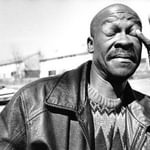
Jimerson was sentenced to death in 1985 for a murder which occurred in 1978. The chief witness against him was Paula Gray, who has an IQ of 57. In her original story to the police, she did not mention Jimerson. Then she added his name to her account, along with three other names, including Dennis Williams (see #67). She later recanted her entire testimony, saying the police had forced her to lie. The original charges against Jimerson were dismissed, but they were resurrected seven years later when the police offered to drop some charges against Gray if she would implicate Jimerson. Gray’s 50 year sentence was converted to 2 years probation. In 1995, the Illinois Supreme Court unanimously reversed Jimerson’s conviction, because Gray had been allowed to testify falsely about her bargain. (People v. Jimerson, 652 N.E.2d 278 (Ill. 1995)). Jimerson was released on bond in early 1996, and charges against him were subsequently dropped. (New York Times, 7/3/96)
Read “DNA Tests and a Confession Set Three on the Path to Freedom in 1978 Murders,” by Don Terry in The New York Times
Read “The Snitch System,” by Northwestern University School of Law Center on Wrongful Conviction
Dennis Williams
Illinois — Conviction: 1979 , Charges Dismissed: 1996

Williams was convicted, along with three others (including Verneal Jimerson, above), for the murder of a young couple in 1978. After spending 18 years in prison, Williams was released on June 14, 1996 because new evidence pointed to the fact that all four men were wrongly convicted. Much of the investigative work which led to the defendants’ release was done by three journalism students. Recent DNA tests indicate that none of the four men were involved in the crime, and another man has confessed to the murder. Charges against Williams, and two others who received lesser sentences in the same case, were dropped on July 2, 1996. Cook County State’s Attorney Jack O’Malley apologized to the four wrongly convicted defendants, including Verneal Jimerson, who had also been on death row. (David Protess and Rob Warden, A Promise of Justice (Hyperion 1998) and New York Times, 7/3/96).
Read “DNA Tests and a Confession Set Three on the Path to Freedom in 1978 Murders,” by Don Terry in The New York Times
Roberto Miranda
Nevada — Conviction: 1982 , Charges Dismissed: 1996

Miranda was released in September 1996 after the prosecution declined to retry him following the reversal of his conviction. Miranda had maintained his innocence through his 14 years on death row. He originally came to the U.S. from Cuba during the Mariel boatlift. Prosecutors originally offered him a plea bargain whereby he would serve as little as 10 years in prison, but he refused because he was innocent. One day after being released from death row with only the clothes on his back and a few belongings, he was incarcerated by the Immigration Service. He was subsequently released pending a deportation hearing. At trial, Miranda had been represented by an attorney with one year’s experience who had inherited the case when his colleague died. In overturning his conviction, Clark County Senior District Judge Norman Robison wrote: “The lack of pretrial preparation by trial counsel … cannot be justified.” (Las Vegas Review-Journal, 9/6/01 and Dallas Morning News 4/23/97)
Read “Free at Last,” by People Magazine
Read “Former Inmate’s Lawsuit…,” by Jace Radke in The Las Vegas Sun
Gary Gauger
Illinois — Conviction: 1993 , Charges Dismissed: 1996
Gauger was convicted of killing his parents in April, 1993. In September 1994, the trial court judge reduced Gauger’s sentence to life imprisonment. In March, 1996, the U.S. District Court overturned his conviction, ruling that authorities never had probable cause to even arrest Gauger or to subject him to 21 hours of intensive questioning. He was released in October, 1996 by the same judge that had sentenced him to die by lethal injection. The prosecution did not challenge his release. (US News and World Report, 11/9/98).
Read “Free at Last,” by People Magazine
Read “The Snitch System,” by Northwestern University School of Law Center on Wrongful Conviction
Read “A Broken System: Gary Gauger,” by The Justice Project
See “Gary Gauger,” by Journey of Hope
Troy Lee Jones
California — Conviction: 1982 , Charges Dismissed: 1996

The California Supreme Court ruled in June, 1996 that Jones should have a new trial because he was not adequately defended at his original trial for the murder of Carolyn Grayson in 1981 (In re Troy Lee Jones on Habeas Corpus, 917 P.2d 1175 (1996)). The Court found that the defense attorney failed to conduct an adequate pretrial investigation, speak with possible witnesses, obtain a relevant police report, or seek pretrial investigative funds. Moreover, the attorney elicited damaging testimony against his own client during cross examination of a witness. The prosecution announced that it was dropping all charges against Jones in November, 1996, after he had been on death row for 14 years. (Associated Press, 11/19/96).
Read “California Death Sentence…,” by Dan Goodin in The Recorder
Carl Lawson
Illinois — Conviction: 1990 , Acquitted: 1996
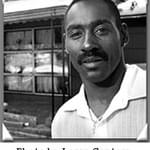
Lawson was convicted of killing Terrence Jones in a family dispute. He was tried three times. The first trial resulted in a conviction and death sentence, but that conviction was overturned in part because Lawson’s public defender had been an assistant State’s Attorney when Lawson was arrested. (Illinois v. Lawson, 644 N.E.2d 1172 (1994). The second trial resulted in a hung jury, reportedly 11 – 1 for acquittal. Nevertheless, the prosecutors tried Lawson again and again sought the death penalty. This last trial produced an acquittal and Lawson was freed on December 12, 1996. On August 1, 2002, Illinois Governor George Ryan issued a pardon to Lawson based on innocence. (St. Louis Dispatch, 4/12/98 and Chicago Tribune, 8/1/02).
David Wayne Grannis
Arizona — Conviction: 1991 , Charges Dismissed: 1996
On November 6, 1996, Pima County, Arizona, Superior Court Judge Bernardo Valesco dismissed the murder charges against David Wayne Grannis, and he was freed. (Arizona Daily Star, Nov. 7, 1996). Grannis was sentenced to death in 1991 for first degree murder, but his conviction was overturned and remanded for a new trial in July 1995 by the Supreme Court of Arizona. (State v. Grannis, 900 P.2d 1 (Az. 1995)). At trial, Grannis testified that he and his co-defendant, Daniel Webster were hitchhiking and were picked up by the victim, Richard Sutcliffe. Sutcliffe offered the men a place to stay. Although the state argued that Grannis and Webster killed Sutcliffe in the course of robbing him or burglarizing his home, Grannis testified that he did not know Sutcliffe was dead until he was arrested. Grannis testified that he was sexually propositioned by Sutcliffe, who became aggressive. Grannis stated that his screams awakened Webster, who killed Sutcliffe after Grannis ran out of the house. At trial, Webster’s friend, Eva Marie Lopez, stated that she “overheard Webster bragging to [her cousin] Baker about committing a murder. In addition, she testified that she heard Webster tell Baker that he (Webster) killed someone and that he liked the feeling it gave him.” (Id. at 4). At trial, the state offered into evidence photos depicting homosexual activity that were found in Grannis’ room at the time of his arrest. In overturning the conviction, the Arizona Supreme Court held that the photos were “marginally relevant” and that the trial court abused its discretion in admitting them. The Court stated that the probative value of the photos was substantially outweighed by the danger of unfair prejudice. “The jurors’ verdict may well have been improperly influenced by their revulsion and not entirely based on a belief that the state proved the elements of the crime.” (Id. at 6). Although Webster was again convicted for Sutcliffe’s murder, the charges against Grannis were dismissed at retrial because of insufficient evidence.
Year of Release: 1995 ⌃
Adolph Munson
Oklahoma — Conviction: 1985 , Acquitted: 1995
Adolph ‘Abe’ Munson, was convicted in 1985 for the murder of Alma Hall, who was abducted during her all-night shift at a local convenience store. Munson became a suspect once police realized that, at the time of the crime, he was on a work release program run by an Oklahoma prison where he was serving time for a barroom murder.
Oklahoma’s highest criminal appeals court unanimously upheld a lower court ruling granting Munson a new trial. The ruling by the Criminal Court of Appeals cited a “significant amount” of exculpatory evidence that was kept from Munson at the original trial. (Oklahoma v. Munson, 886 P.2d 999 (Okla. Crim. App. 1994)). The exculpatory evidence, according to Judge Charles S. Chapel, who wrote the court’s opinion, “revealed photographs of the crime scene at odds with the State’s theory of the case, reports on the other suspects and impeachment evidence.” (Oklahoma v. Munson, 886 P.2d 999 (Okla. Crim. App. 1994)). Furthermore, Dr. Ralph Erdmann, the paleontologist who presented the forensic evidence at trial, was convicted of seven felony counts including the misrepresentation of facts in other cases and stripped of his license.
Munson was acquitted at a re-trial in April 1995.
Sources
(ABA Journal December 1993 , ABA Journal February 1995, and The Oklahoma Observer April 25, 1995).
Robert Charles Cruz
Arizona — Conviction: 1981 , Acquitted: 1995
Robert Charles Cruz, a former Tempe businessman, won instant freedom after more than 14 years behind bars as jurors returned verdicts acquitting him of murder and other charges. This was the fifth trial for the former death-row inmate accused in the 1980 contract killing of a Phoenix print-shop owner and his mother-in-law. His previous five trials included two convictions and two mistrials, before his acquittal on June 1, 1995.
Prosecutors claimed that Cruz hired and paid three men to kill Patrick Redmond and Helen Phelps, co-owners of Graphic Dimensions, in a plot to take over the business. Jurors said the overriding reason for acquitting Cruz was the lack of credibility of some witnesses (The Arizona Republic, June 2, 1995). The chief prosecution witness, Arnie Merrill, was a convicted burglar and former drug dealer who was given immunity for his testimony. The absence of motive and the lack of a physical evidence connecting Cruz to the murders weighed heavily on jurors as they voted to acquit.
“This is justice,” said Kevin McNally, one of Cruz’s lawyers. “This is the right decision.”
Sources
(State v. Cruz, 857 P.2d 1249 (Ariz. 1993), and The Arizona Republic, June 2, 1995).
Rolando Cruz
Illinois — Conviction: 1985 , Acquitted: 1995
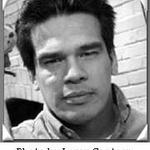
Cruz was sentenced to death for the murder of 10-year-old Jeanine Nicarico. Another man, Brian Dugan, who had already pled guilty to two rapes and murders, including that of an 8‑year-old girl, authorized his lawyer to tell the prosecutors that he killed Nicarico. Cruz was convicted at a second trial in 1990, at which Dugan did not testify. In July, 1994, the state Supreme Court overturned Cruz’s second conviction. (People v. Cruz, 643 N.E.2d 636 (1994). An assistant state attorney general resigned because she thought the evidence showed Cruz was innocent and thought it wrong to pursue the prosecution. Other law enforcement officials also protested the continued efforts to prosecute Cruz. Cruz was finally acquitted at his retrial in November, 1995. The judge did not even wait for the defense to put on its case before entering a directed verdict of not guilty. (People v. Cruz, 88 CF 2230). Three prosecutors and four law enforcement officers involved with the prosecution of Cruz and his co-defendant (see below) have been indicted for obstruction of justice in this case. (The American Lawyer, 3/98 and National Law Journal 11/20/95).
Read “Life After Death Row,” by Sara Rimer in The New York Times Magazine
Read “The Snitch System,” by Northwestern University School of Law Center on Wrongful Conviction
Read “A Broken System: Rolando Cruz and Alejandro Hernandez” by The Justice Project
Alejandro Hernandez
Illinois — Conviction: 1985 , Charges Dismissed: 1995
Hernandez was sentenced to death along with Rolando Cruz for the murder of Jeanine Nicarico in 1983. Hernandez was re-tried in 1990, but the trial ended in a hung jury. A third trial in 1991 resulted in a conviction and an 80 year prison sentence. The conviction was overturned by the Illinois Supreme Court in January, 1995. Only his own indirect statements, not any direct physical evidence, linked Hernandez, who is borderline retarded, to the killing. He was released on bond, and charges were subsequently dropped on Dec. 8, 1995. The man who has confessed to the murder of Jeanine Nicarico, and whose DNA has been linked to the crime, has not been charged in the case. The U.S. Dept. of Justice is considering an investigation into civil rights violations in this case. (People v. Hernandez, 521 N.E.2d 25 (Ill. 1988), Associated Press, 12/8/95, and The National Law Journal, 1/1/96).
Read “A Broken System: Rolando Cruz and Alejandro Hernandez” by The Justice Project
Sabrina Butler
Mississippi — Conviction: 1990 , Acquitted: 1995

Sabrina Butler was 17 years old when her 9‑month old son, who had a heart murmur, stopped breathing. After attempts to resuscitate her son, Butler rushed to the hospital, where the young child was pronounced dead. The following day Butler was arrested for child abuse due to the bruises left by her resuscitation attempts. She was interrogated by the police and then prosecuted. Then, in 1990, she was convicted of capital murder and sentenced to death.
Her conviction was overturned by the Mississippi Supreme Court in 1992. (Butler v. State, 608 So.2d 314 (Miss. 1992)). The court said that the prosecution had failed to prove that the incident was anything more than an accident. At re-trial, she was acquitted on Dec. 17, 1995 after a very brief jury deliberation. It is now believed that the baby may have died either of cystic kidney disease or from sudden infant death syndrome (SIDS).
Year of Release: 1994 ⌃
Andrew Golden
Florida — Conviction: 1991 , Charges Dismissed: 1994
Andrew Golden spent 26 months on Florida’s death row, convicted in 1991 for the murder of his wife in 1989. According to Golden, his wife, Ardelle, died after accidentally driving down an unmarked, unlit boat ramp into the water. Prosecutors argued that Golden, heavily in debt, had killed Ardelle to collect on the life insurance. Police investigators and the medical examiner testified at the trial that the evidence did not suggest foul play (Life Magazine, October 1994). Nonetheless, the jury opted for the prosecutor’s version of the story and sentenced Golden to die in the electric chair.
Golden, a high school teacher in Florida before the death of his wife, had his conviction was overturned by the Florida Supreme Court in 1993. The Court held that the state had failed to prove that the victim’s death was anything but an accident. Golden was released into the waiting arms of his sons on January 6, 1994. (Golden v. State, 629 So.2d 109 (Fla. 1993)).
Read “The Other 13 Survivors…,” by Sydney Freedberg in The St. Petersburg Times
UPDATE: Andrew Golden died in Texas from a heart attack in May 2015.
Year of Release: 1993 ⌃
Kirk Bloodsworth
Maryland — Conviction: 1984 , Charges Dismissed: 1993

Bloodsworth was convicted and sentenced to death for the rape and murder of a young girl. Despite alibi witnesses, he was convicted primarily on the basis of faulty eyewitness identification. When it was discovered that the state failed to disclose exculpatory evidence, Bloodsworth received a new trial, at which he was convicted and given a life sentence. He was released after subsequent DNA testing confirmed his innocence. (The Washington Post, 6/29/93).
Read “Bloodsworth: The True Story of the First Death Row Inmate Exonerated by DNA,” by Tim Junkin
Read “Life After Death Row,” by Sara Rimer in The New York Times Magazine
Federico M. Macias
Texas — Conviction: 1984 , Charges Dismissed: 1993
Macias was convicted and sentenced to death for the murder of a man during a burglary. Macias was implicated by a co-worker, who in exchange for his testimony was not prosecuted for the murders, and from jail-house informants. Post-conviction investigation by pro bono attorneys discovered substantial evidence of inadequate counsel. A federal district court ordered a new hearing finding that “[t]he errors that occurred in this case are inherent in a system which pays attorneys such a meager amount.” Macias’s conviction was overturned and a grand jury refused to reindict because of lack of evidence. (Marinez-Macias v. Collins, 810 F Supp. 782 (W.D. Tex. 1991), National Law Journal, 5/20/96, and University of Massachusetts Alumni Magazine, Spring 1994).
Read “The Difference a Million Makes,” by Adam Cohen in Time Magazine
Walter (Johnny D) McMillian
Alabama — Conviction: 1988 , Charges Dismissed: 1993

McMillian, a black man, was convicted for the murder of a white female after a trial that lasted only a day and a half. At trial, three witnesses testified against McMillian and the jury ignored multiple alibi witnesses that testified McMillian was at a picnic. Although the jury recommended a life sentence, the judge imposed a sentence of death. Post-conviction investigation by the television show 60 Minutes revealed prosecutorial suppression of exculpatory information and perjury by the state’s three witnesses. McMillian’s conviction was overturned by the Alabama Court of Criminal Appeals and prosecutors agreed case had been mishandled. (McMillian v. State, 616 So.2d 933 (Ala. Crim. App. 1993), New York Times, 3/3/93, and ABA Journal 6/93).
Read “Life After Death Row” by Sara Rimer in The New York Times Magazine
Gregory R. Wilhoit
Oklahoma — Conviction: 1987 , Acquitted: 1993
Convicted of killing his estranged wife while she slept. His conviction was overturned and he was released in 1991 when 11 forensic experts testified that a bite mark found on his dead wife did not belong to him. The appeals court also found ineffective assistance of counsel. He was acquitted at a retrial in April, 1993. (Wilhoit v. State, 816 P.2d 545 (Okla. Crim. App. 1991) and The Daily Oklahoman, 4/1/93).
UPDATE: Greg Wilhoit died in February 2014.
Read “My Nightmare: An Interview with Greg Wilhoit” by Ira Saletan
James Robison
Arizona — Conviction: 1977 , Acquitted: 1993
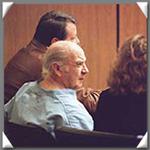
Robison was convicted of murder and conspiracy in 1977 in the death of a reporter, Don Bolles. His conviction was overturned in 1980, but he was recharged with the offense in 1990. He was acquitted at retrial in December, 1993. (State v. Robison, 608 P.2d 44 (Ariz. 1980) and The Dallas Morning News, 12/18/93).
Muneer Deeb
Texas — Conviction: 1985 , Acquitted: 1993
Deeb was originally sentenced to death for allegedly contracting with three hitmen to kill his ex-girlfriend. The hitmen were also convicted and one was sentenced to death. Deeb consistently claimed no involvement in the crime. Deeb’s conviction was overturned by the Texas Court of Criminal Appeals in 1991 because improper evidence had been admitted at his first trial. With an experienced defense attorney, Deeb was retried and acquitted in 1993. (Deeb v. State, 815 S.W.2d 692 (Tex. Crim. App. 1991) and The Dallas Morning News, 11/4/93).
Larry Hudson
Louisiana — Conviction: 1967 , Acquitted: 1993
Larry Hudson was tried and sentenced to death for a robbery-homicide in New Orleans, Louisiana, in 1967. An eyewitness, Frank Wilson, testified that he had picked Hudson out of a line-up prior to trial, but a police officer who had been present testified that Wilson had failed to identify Hudson. Hudson’s sentence was eventually commuted to life in prison, but his conviction was upheld. In 1988, with the help of a jailhouse lawyer, he was able to obtain copies of police reports that had never been disclosed to his defense. These records showed that not only had Wilson failed to identify Hudson, but also, he had identified another man in a photo line-up. The day before the trial, the prosecutor showed Wilson a photo of Hudson and his codefendant, and Wilson then affirmed that Hudson was the shooter. Based on the unreliability of Wilson’s testimony and the prosecutorial misconduct involved in concealing the photo line-up, a federal district court vacated Hudson’s conviction in 1993 and the prosecutor chose not to retry the case.
Year of Release: 1992 ⌃
Jay C. Smith
Pennsylvania — Conviction: 1986 , Acquitted: 1992
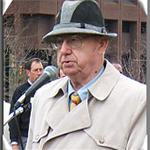
Smith, a former high school principal, was convicted of the 1979 murder of 3 people, though his death sentence was later reduced to life. He was freed on Sept. 18, 1992 after the Pennsylvania Supreme Court unanimously ruled that the prosecution had withheld crucial evidence, calling the state’s action “egregious” misconduct. (Commonwealth v. Smith, 615 A.2d 321 (Pa. 1992) and Pittsburgh Post-Gazette 9/17/93).
Read “Court Frees Jay Smith,” by Pete Shellem and Laird Leask in The Patriot News
Read “Author Paid Trooper Probing Reinert Case,” by Pete Shellem and Laird Leask in The Patriot News
Read “Evidence Surfaces in Reinert Case,” by Pete Shellem and Laird Leask in The Patriot News
Year of Release: 1991 ⌃
Gary Nelson
Georgia — Conviction: 1980 , Charges Dismissed: 1991
Nelson was released after a review of the prosecutor’s files revealed that material information had been improperly withheld from the defense. The county district attorney acknowledged: “There is no material element of the state’s case in the original trial which has not subsequently been determined to be impeached or contradicted.” (Nelson v. Zant, 405 S.E.2d 250 (Ga. 1991) and The Atlanta Journal, 11/7/91).
Bradley P. Scott
Florida — Conviction: 1988 , Acquitted: 1991

Scott was convicted of murder and sentenced to death. His arrest came ten years after the crime, when the evidence corroborating his alibi had been lost. Scott was convicted on the testimony of witnesses whose identifications had been plagued with inconsistencies. On appeal, he was released by the Florida Supreme Court, which found that the evidence used to convict Scott was not sufficient to support a finding of guilt. (Scott v. State, 581 So.2d 887 (Fla. 1991)).
Read Court TV’s Interview with Bradley Scott
Read “We Don’t Look Back,” by Sydney Freedberg in The St. Petersburg Times
Charles Smith
Indiana — Conviction: 1983 , Acquitted: 1991
Smith was sentenced to death for a street robbery and murder of a woman. The man who claimed to be the getaway driver had his charges dropped in exchange for testifying against Smith. The Indiana Supreme Court overturned his conviction in 1989 because of ineffective assistance of counsel. (Smith v. State, 547 N.E.2d 817 (Ind. 1989). He was acquitted at his re-trial and released in 1991 after presenting evidence that witnesses against him had lied under oath. (information not available at time of DPIC’s innocence report) (The Journal-Gazette (Indiana), 5/10/91 and Capitol Report, May/June 1991).
Year of Release: 1990 ⌃
Clarence Brandley
Texas — Conviction: 1981 , Charges Dismissed: 1990
Brandley was awarded a new trial when evidence showed prosecutorial suppression of exculpatory evidence and perjury by prosecution witnesses. An investigation by the Department of Justice and the FBI uncovered more misconduct, and in 1989 a new trial was granted. Prior to the new trial, all of the charges against Brandley were dropped. Brandley is the subject of the book White Lies by Nick Davies. (Ex Parte Brandley, 781 S.W.2d 886 (Tex. Crim App. 1989),The Dallas Times Herald, 10/2/90, and Washington Post, 2/1/95).
John C. Skelton
Texas — Conviction: 1983 , Acquitted: 1990
Despite several witnesses who testified that he was 800 miles from the scene of the murder, Skelton was convicted and sentenced to death for killing a man by exploding dynamite in his pickup truck. The evidence against him was purely circumstantial and the Texas Court of Criminal Appeals found that it was insufficient to support a guilty verdict. The Court reversed the conviction and entered a directed verdict of acquittal. (Skelton v. State, 795 S.W.2d 162 (Tex. Crim. App. 1989) and The Dallas Morning News, 10/25/90).
Dale Johnston
Ohio — Conviction: 1984 , Charges Dismissed: 1990
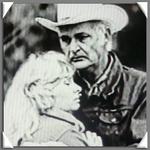
Johnston was sentenced to death in 1984 by a 3‑judge panel for the murder of his stepdaughter and her fiancee. His conviction was overturned in 1988 by the Ohio Supreme Court because the prosecution withheld exculpatory evidence from the defense, and because one witness, who had been hypnotized, was deemed unreliable. The state later dropped charges against Johnston in 1990 and he was freed. (State v. Johnson, 529 N.E.2d 898 (Ohio 1988)). Chester McKnight later pleaded guilty to the crime in 2008 and received 2 life terms. A second man, Kenny Linscott, who had been seen near the scene of the crime the day the bodies of the victims were discovered, pleaded guilty to abuse of a corpse connected to the crime. As of 2011, Johnston was seeking remuneration from the state. (Additional research from Maurice Possley.)
Jimmy Lee Mathers
Arizona — Conviction: 1987 , Acquitted: 1990
Jimmy Lee Mathers was convicted of first degree murder in 1987 and sentenced to death along with two co-defendants. At trial, Mathers moved for a judgment of acquittal at the close of the prosecution’s case, maintaining that the state had not presented evidence sufficient to support a conviction. The motion was denied, and all three men were found guilty and sentenced to death. Mathers’ case was reviewed by the Arizona Supreme Court in 1990, and viewing the evidence in the light most favorable to the prosecution, the Court found that there was a complete absence of probative facts to support Mathers’ conviction. The Court stated that most of the evidence presented at trial had “nothing to do with Mathers” and noted that even the trial judge expressed doubt as to whether Mathers was involved in the crime. The Court set aside Mathers’ conviction and sentence and entered a judgment of acquittal. (State v. Mathers, 796 P.2d 866 (Ariz. 1990)) One of Mathers’ co-defendants, Theodore Washington, has raised a similar claim about the insufficiency of the evidence against him, but remains on death row.
Year of Release: 1989 ⌃
Randall Dale Adams
Texas — Conviction: 1977 , Charges Dismissed: 1989

Adams was convicted of killing a Dallas Police officer and sentenced to death. After the murder David Harris was arrested for the murder when it was learned that he was bragging about it. Harris, however, claimed that Adams was the killer. Adams trial lawyer was a real estate attorney and the key government witnesses against Adams were Harris and other witnesses who were never subject to cross examination because they disappeared the next day. On appeal, Adams was ordered to be released pending a new trial by the Texas Court of Appeals. The prosecutors did not seek a new trial due to substantial evidence of Adam’s innocence. Adams case is the subject of the movie, The Thin Blue Line. (Ex Parte Adams, 768 S.W.2d 281 (Tex. Crim App. 1989), Time, 4/3/89, and ABA Journal, 7/89).
See “Randall Dale Adams,” by Journey of Hope
Robert Cox
Florida — Conviction: 1988 , Charges Dismissed: 1989
Cox was convicted and sentenced to death, despite evidence that Cox did not know the victim and no one testified that they had been seen together. In 1989, Cox was released by a unanimous decision of the Florida Supreme Court that the evidence was insufficient to support his conviction. (Cox v. State, 555 So.2d 352 (Fla. 1989)).
Read “The Other 13 Survivors…,” by Sydney Freedberg in The St. Petersburg Times
James Richardson
Florida — Conviction: 1968 , Charges Dismissed: 1989
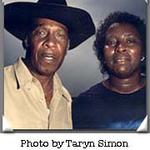
Richardson was convicted and sentenced to death for the poisoning of one of his children. The prosecution argued that Richardson committed the crime to obtain insurance money, despite the fact that no such policy existed. The primary witnesses against Richardson were two jail-house snitches whom Richardson was said to have confessed to. Post-conviction investigation found that the neighbor who was caring for Richardson’s children had a prior homicide conviction, and the defense provided affidavits from people to whom he had confessed. Richardson’s conviction was thrown into further doubt when the governor appointed then-Dade County District Attorney Janet Reno to conduct a special investigation. She concluded Richardson’s conviction should be vacated. At a subsequent court hearing, the court overturned his conviction, and no further charges were raised in the case. See Richardson v. State, 546 So.2d 1037 (1989).
Read “Life After Death Row,” by Sara Rimer in The New York Times Magazine
Read “The Other 13 Survivors…,” by Sydney Freedberg in The St. Petersburg Times
Bonnie Erwin
Texas — Conviction: 1985 , Charges Dismissed: 1989
Bonnie Erwin was sentenced to death in Smith County, Texas in 1985. During Erwin’s trial, the court failed to compel the testimony of a witness who was subpoenaed for trial but did not appear in court. The witness would have cast doubt upon Erwin’s involvement and instead implicated a co-defendant who had blamed Erwin for the crime. In 1987, this conviction was vacated because of the trial court’s refusal to issue a writ of attachment to secure the witness’s testimony. State prosecutors declined to retry Erwin and dismissed all charges. Erwin remains in federal prison for drug trafficking crimes.
Erwin is one of 12 additional exonerations discovered by DPIC in 2021 and 2022 during its research of all modern-era death sentences. See a list of all of the additional exonerations here.
Sources
Sources: Erwin v. State, 729 S.W.2d 709 (Tex. Crim. App. 1987); Erwin v. Henman, No. 90-3117-RDR, 1992 WL 331307 (D. Kan. Oct. 21, 1992).
David Roeder
Texas — Conviction: 1978 , Charges Dismissed: 1989
David Roeder was convicted and sentenced to death for his role in the robbery and murder of three Houston professionals. He was resentenced to life in prison before a Texas appeals court vacated his conviction entirely in 1988, finding that police illegally searched his apartment and illegally arrested him. Prosecutors dismissed all charges against Roeder in 1989. Roeder’s co-defendant Claude Wilkerson, who also had charges dismissed based on official misconduct, appears on DPIC’s Innocence List. A third co-defendant, Mark Cass, who also had his sentence vacated due to official misconduct, does not meet DPIC’s exoneration criteria but was released and never retried.
Sources
Roeder v. State, 768 S.W.2d 745 (Tex. Ct. App. 1988); Former Shiner Man Formally Released, Victoria Advocate, December 17, 1989.
Year of Release: 1988 ⌃
Richard Neal Jones
Oklahoma — Conviction: 1983 , Acquitted: 1988
Jones was sentenced to death in Oklahoma in 1983. Jones maintains that he was passed out while his three co-defendants murdered Charles Keene. On appeal, the Court of Criminal Appeals of Oklahoma remanded the case for retrial. The Court held the jury was prejudiced by the improper admission of hearsay testimony and inflammatory photographs. The Court also agreed with Jones’ assertion that the case should be remanded on the basis of prosecutorial misconduct. Moreover, the Court held, the case was not one in which Jones’ guilt was “overwhelming” and that Jones’ involvement was disputed by the evidence. (Jones v. State, 738 P.2d 525 (Okla. crim. app. 1987) and Oklahoma Publishing Co., 1/18/88).
Willie Brown
Florida — Conviction: 1983 , Charges Dismissed: 1988
Brown and Troy were sentenced to death after being accused of fatally stabbing a fellow prisoner. The main witness against them was Frank Wise, whose original statements exonerated the men. Pending retrial, the charges against the men were dropped when Wise admitted that he had perjured himself. (Brown v. State, 515 So.2d 211 (Fla. 1987).
Read “The Other 13 Survivors…,” by Sydney Freedberg in The St. Petersburg Times
Larry Troy
Florida — Conviction: 1983 , Charges Dismissed: 1988
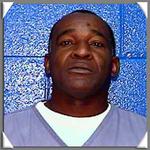
Brown and Troy were sentenced to death after being accused of fatally stabbing a fellow prisoner. The main witness against them was Frank Wise, whose original statements exonerated the men. Pending retrial, the charges against the men were dropped when Wise admitted that he had perjured himself. (Brown v. State, 515 So.2d 211 (Fla. 1987).
Read “The Other 13 Survivors…,” by Sydney Freedberg in The St. Petersburg Times
Charles Tolliver
Ohio — Conviction: 1986 , Acquitted: 1988
In 1986, Charles Tolliver was convicted and sentenced to death by an all-white jury for killing two men. After conducting a post-trial hearing on Tolliver’s motion for a new trial, the trial court ruled that Cuyahoga County prosecutors had unconstitutionally exercised their peremptory challenges to remove jurors on the basis of race. Tolliver was acquitted of the aggravated murder charges on retrial.
Tolliver is one of 12 additional exonerations discovered by DPIC in 2021 and 2022 during its research of all modern-era death sentences. See a list of all of the additional exonerations here.
Sources
Sources: Man set free, The Marion Star, November 18, 1988.
Year of Release: 1987 ⌃
Joseph Green Brown
Florida — Conviction: 1974 , Charges Dismissed: 1987
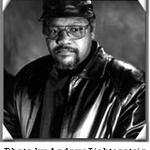
Charges were dropped after the 11th Circuit Court of Appeals ruled that the prosecution had knowingly allowed false testimony to be introduced at trial. Brown was convicted of first-degree murder and sentenced to death on the testimony of Ronald Floyd, a co-conspirator who claimed he heard Brown confess to the murder. Floyd later retracted and admitted his testimony was lie. Brown came within 13 hours of execution when a new trial was ordered. Brown was released a year later when the state decided not to retry the case. (Brown v. Wainwright, 785 F.2d 1457 (11th Cir. 1986); Los Angeles Times, 5/10/87; and Charlotte Observer, 3/8/87).
Read “Yes, I’m Angry…,” by Sydney Freedberg in The St. Petersburg Times
Read “Fourteen Years…,” by George Anderson in America Magazine
Perry Cobb
Illinois — Conviction: 1979 , Acquitted: 1987
After two mistrials because of hung juries, Cobb and Williams were convicted and sentenced to death for the first degree robbery and murder of two white men in 1977. In 1983, the State Supreme Court reversed the convictions, and after several retrials where an assistant state attorney testified that the government’s key witness, Phyllis Santini, had told him that her boyfriend actually committed the murders, Cobb and Williams were acquitted and released. (People v. Cobb, 455 N.E.2d 31 (Ill. 1983) and Chicago Tribune, 1/21/87).
Read “The Snitch System,” by Northwestern University School of Law Center on Wrongful Conviction
Read “A Broken System: Darby Tillis and Perry Cobb” by The Justice Project
Darby (Jesse) Tillis
Illinois — Conviction: 1979 , Acquitted: 1987
After two mistrials because of hung juries, Cobb and Williams were convicted and sentenced to death for the first degree robbery and murder of two white men in 1977. In 1983, the State Supreme Court reversed the convictions, and after several retrials where an assistant state attorney testified that the government’s key witness, Phyllis Santini, had told him that her boyfriend actually committed the murders, Cobb and Williams were acquitted and released. (People v. Cobb, 455 N.E.2d 31 (Ill. 1983) and Chicago Tribune, 1/21/87).
Read “The Snitch System,” by Northwestern University School of Law Center on Wrongful Conviction
Read “A Broken System: Darby Tillis and Perry Cobb” by The Justice Project
UPDATE: Tillis died on Nov. 9, 2014.
Vernon McManus
Texas — Conviction: 1977 , Charges Dismissed: 1987
After a new trial was ordered, the prosecution dropped the charges when a key prosecution witness refused to testify.
Anthony Ray Peek
Florida — Conviction: 1978 , Acquitted: 1987
Peek was convicted of murder and sentenced to death, despite witnesses who supported his alibi. His conviction was overturned when expert testimony concerning hair identification evidence was shown to be false. He was acquitted at his third retrial. (Peek v. State, 488 So.2d 52 (Fla. 1986)).
Read “The Other 13 Survivors…,” by Sydney Freedberg in The St. Petersburg Times
Juan Ramos
Florida — Conviction: 1983 , Acquitted: 1987

Despite a jury recommendation of life in prison, Juan Ramos was sentenced to death for rape and murder. No physical evidence linked Ramos to the victim or the scene of the crime. The Florida Supreme Court granted Ramos a new trial because of the prosecution’s improper use of evidence. At retrial, Ramos was acquitted. (Ramos v. State, 496 So.2d 121 (Fla. 1986) and St. Petersburg Times, 7/9/99).
Read “Freed From Death Row,” by Sydney Freedberg in The St. Petersburg Times
Robert Wallace
Georgia — Conviction: 1980 , Acquitted: 1987
Wallace was convicted and sentenced to death for the slaying of a police officer, despite his claim that the shooting was accidental and that he was acting in self-defense because he was beaten by the officers. The 11th Circuit ordered a retrial because Wallace had not been competent to stand trial. He was acquitted at the retrial because it was found that the shooting was accidental. (Wallace v. Kemp, 757 F.2d 1102 (1985) and Associated Press, 6/18/87).
Claude Wilkerson
Texas — Conviction: 1979 , Charges Dismissed: 1987
Claude Wilkerson was convicted in 1979 for a robbery and murder that occurred at a Houston jewelry store. Wilkerson’s conviction was vacated in 1983 by the Texas Court of Criminal Appeals when it ruled that the trial court erred in admitting statements taken from Wilkerson illegally by the police without an attorney present. Prosecutors dismissed all charges against Wilkerson in 1987.
Wilkerson is one of 12 additional exonerations discovered by DPIC in 2021 and 2022 during its research of all modern-era death sentences. See a list of all of the additional exonerations here.
Sources
Sources: Wilkerson v. State, 657 S.W.2d 784 (Tex. Crim. App. 1983); Prosecutors Drop Wilkerson Case, Victoria Advocate, Oct 16, 1987.
Year of Release: 1986 ⌃
Anthony Brown
Florida — Conviction: 1983 , Acquitted: 1986
Brown was convicted of first degree murder and sentenced to death despite a jury recommendation of life imprisonment. At trial, the only evidence against Brown was a co-defendant who was sentenced to life for his part in the crime. At retrial, the co-defendant admitted that his testimony at the first trial had been perjured, and Brown was acquitted. (Brown v. State, 471 So.2d 6 (Fla. 1985)).
Read “The Other 13 Survivors…,” by Sydney Freedberg in The St. Petersburg Times
Neil Ferber
Pennsylvania — Conviction: 1982 , Charges Dismissed: 1986
Ferber was convicted of first degree murder and sentenced to death. Upon urging by the district attorney, the trial judge ordered a new trial. The charges against Ferber were dropped prior to the retrial when evidence surfaced that the conviction was based on the perjured testimony of a jail-house informant, exculpatory evidence was not disclosed to the defense, and an eyewitness to the crime was positive that Ferber was not the man she saw. Several other prosecutors and a homicide detective were convinced of Ferber’s innocence. (Pittsburgh Post-Gazette, 8/18/96).
Clifford Henry Bowen
Oklahoma — Conviction: 1981 , Charges Dismissed: 1986
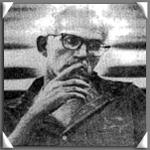
Bowen was incarcerated in the Oklahoma State Penitentiary under three death sentences for over five years when the U.S. Court of Appeals for the Tenth Circuit finally overturned his conviction in 1986. The Court held that prosecutors in the case failed to disclose information about another suspect, Lee Crowe, and that had the defense known of the Crowe materials, the result of the trial would probably have been different. Crowe resembled Bowen, had greater motive, no alibi, and habitually carried the same gun and unusual ammunition as the murder weapon. Bowen, on the other hand, maintained his innocence, provided twelve alibi witnesses to confirm that he was 300 miles from the crime scene just one hour prior to the crime, and could not be linked by any physical evidence to the crime. (Bowen v. Maynard, 799 F.2d 593 (10th Cir. 1986) and Oklahoma Publishing Co., 7/31/87).
Read “Cowboy Bob…” by Ken Armstrong in The Chicago Tribune
Year of Release: 1985 ⌃
Larry Fisher
Mississippi — Conviction: 1984 , Acquitted: 1985
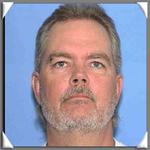
Larry Fisher was charged with the rape and murder of an 18-year-old high school student in Meridian Mississippi in 1983. A series of similar crimes had occurred in the same area and the pre-trial media coverage of the case was extensive. Fisher asked for a change of venue but was denied. He was convicted and sentenced to death in 1984. The Mississippi Supreme Court reversed his conviction and sentence because the saturation media coverage required a change of venue: “In a very real sense Fisher’s guilt was announced by the news media of Meridian, Mississippi, loudly and long before a Lauderdale County jury was ever impaneled to hear the case. By this he was denied his right to a fair trial before the trial began.” (Fisher v. Mississippi, 481 So.2d 203, 206 (1985)). Fisher was re-tried two months later in a different county and was acquitted of all charges. (See Fisher v. Mississippi, 532 So.2d 992, 994 (1988) (upholding his conviction in a different case)). Fisher remained incarcerated because of a separate rape conviction.
Justin Cruz
Texas — Conviction: 1984 , Appellate Acquittal: 1985
Justin Cruz was convicted and sentenced to death in 1984. His conviction was based heavily on the testimony of an alleged accomplice without physical evidence linking him to the crime. The Texas Court of Criminal Appeals ruled that the evidence was insufficient to convict because it was based on uncorroborated accomplice testimony and ordered Cruz to be acquitted.
Cruz is one of 12 additional exonerations discovered by DPIC in 2021 and 2022 during its research of all modern-era death sentences. See a list of all of the additional exonerations here.
Sources
Sources: Cruz v. State, 690 S.W.2d 246 (Tex. Crim. App. 1985).
Year of Release: 1982 ⌃
Anibal Jarramillo
Florida — Conviction: 1981 , Charges Dismissed: 1982
Jarramillo was sentenced to death for two counts of first degree murder, despite the jury’s unanimous recommendation of life imprisonment. On appeal, his conviction was reversed when the Florida Supreme Court ruled the evidence used against him was not legally sufficient to support the conviction. (Jarramillo v. State, 417 So.2d 257 (Fla. 1982)). Evidence suggests that the murderer may have been the victims’ roommate.
Read “The Other 13 Survivors…,” by Sydney Freedberg in The St. Petersburg Times
Lawyer Johnson
Massachusetts — Conviction: 1971 , Charges Dismissed: 1982
Johnson, a black man, was sentenced to death by an all-white jury for the murder of a white victim. In 1974, the Supreme Judicial Court of Massachusetts granted Johnson a new trial because the trial judge had improperly limited the defense’s opportunity to cross-examine Kenneth Myers, the state’s chief witness, about other persons who were present at the murder scene. The court noted that Myers had “chang[ed] his story in material respects at least three times” and that a newly discovered witness, who knew both Myers and Johnson, had seen three individuals — one of whom was Myers and none of whom was Johnson — fleeing the murder scene. Johnson was retried and, despite the testimony of this second witness, was convicted of second-degree murder. After the conviction, a previously silent eyewitness who had been 10 years old at the time of the murder, came forward and identified Myers as the actual killer. Based on this new evidence, the trial court, affirmed by the Massachusetts supreme court, overturned the second conviction. (Commonwealth v. Johnson, 429 N.E.2d 726 (1982)). The prosecution then dropped all charges against Johnson. In 1983, a bill was filed to obtain compensation for Johnson’s wrongful conviction.
Year of Release: 1981 ⌃
Charles Ray Giddens
Oklahoma — Conviction: 1978 , Charges Dismissed: 1981
Giddens, an 18-year-old black man, was convicted for the murder of a grocery store cashier primarily on the testimony of Johnnie Gray, who claimed he accompanied Giddens to the murder scene. Although Gray was never indicted, Giddens was sentenced to death after an all white jury deliberated for only 15 minutes. Giddens conviction and death sentence reversed by the Oklahoma Court of Criminal Appeals, which found Gray’s testimony was unreliable and the evidence against Giddens insufficient. (Giddens v. State, No. F‑78 – 164 (Ct. of Crim. App., 11/17/81)) The charges against Giddens were dropped.
Michael Linder
South Carolina — Conviction: 1979 , Acquitted: 1981
Linder was convicted and sentenced to death for the murder of a highway patrol officer. The prosecution maintained that Linder shot the officer without provocation but Linder insisted that he shot the officer in self-defense after the officer fired six shots at him. At re-trial, previously undisclosed ballistics evidence from a state crime lab confirmed Linder’s self-defense theory and Linder was acquitted. (State v. Linder, 278 S.E.2d 335 (S.C. 1981)).
Johnny Ross
Louisiana — Conviction: 1975 , Charges Dismissed: 1981
Ross, a black 16-year old, was convicted and sentenced to death for the rape of a white woman. Ross confessed after being beaten by the police, and his trial lasted only a few hours. Investigations by the Southern Poverty Law Center sought a new trial for Ross and presented evidence that the Ross’ blood type was not the same as the type in the semen found in the victim. When presented with this evidence the New Orleans District Attorney’s office released Ross. (State v. Ross, 343 So.2d 722 (La. 1977)).
Ernest (Shujaa) Graham
California — Conviction: 1976 , Acquitted: 1981
In November 1973, while incarcerated in a state prison facility, Ernest Graham and co-defendant Eugene Allen were charged with killing a state correctional officer. Their first trial resulted in a mistrial when the jury could not agree on a verdict. They were sentenced to death in 1976 after their second trial. The Supreme Court of California reversed their convictions because the prosecution discriminatorily exercised its peremptory challenges to exclude Black prospective jurors. The court found Graham and Allen, both of whom are Black, “belonged to the group whose members the district attorney had excluded whereas the alleged victim was a member of the group to which [all] of the remaining jurors belong.” People v. Allen, 590 P.2d 30, 34 (Cal. 1979) (internal citations omitted). Their third trial ended in another hung jury, and both were acquitted by the jury in their fourth trial.
Allen is one of 12 additional exonerations discovered by DPIC in 2021 and 2022 during its research of all modern-era death sentences. See a list of all of the additional exonerations here.
Sources
Sources: Phil Bronstein, Two found not guilty in 4th trial on guard killing, San Francisco Examiner, March 20, 1981.
Visit Shujaa Graham’s Homepage
See “Shujaa Graham” by Journey of Hope; Phillip Morris, Sentenced to death, but innocent: These are stories of justice gone wrong, National Geographic, March 2021
Eugene Allen
California — Conviction: 1976 , Acquitted: 1981
In November 1973, while incarcerated in a state prison facility, Ernest Graham and co-defendant Eugene Allen were charged with killing a state correctional officer. Their first trial resulted in a mistrial when the jury could not agree on a verdict. They were sentenced to death in 1976 after their second trial. The Supreme Court of California reversed their convictions because the prosecution discriminatorily exercised its peremptory challenges to exclude Black prospective jurors. The court found Graham and Allen, both of whom are Black, “belonged to the group whose members the district attorney had excluded whereas the alleged victim was a member of the group to which [all] of the remaining jurors belong.” People v. Allen, 590 P.2d 30, 34 (Cal. 1979) (internal citations omitted). Their third trial ended in another hung jury, and both were acquitted by the jury in their fourth trial.
Allen is one of 12 additional exonerations discovered by DPIC in 2021 and 2022 during its research of all modern-era death sentences. See a list of all of the additional exonerations here.
Sources
Sources: Phil Bronstein, Two found not guilty in 4th trial on guard killing, San Francisco Examiner, March 20, 1981.
Visit Shujaa Graham’s Homepage
See “Shujaa Graham” by Journey of Hope; Phillip Morris, Sentenced to death, but innocent: These are stories of justice gone wrong, National Geographic, March 2021
Joe Cota Morales
Arizona — Conviction: 1976 , Acquitted: 1981
Joe Cota Morales was convicted and sentenced to death in 1976 for the murder of Tony Calistro in Glendale, Arizona. His co-defendant, Ruben Melendez, was also convicted and sentenced to death. A third co-defendant, who was 15 years old at the time of the crime, was tried in juvenile court. The Arizona Supreme Court overturned the convictions of Morales and Melendez in 1978 because the judge did not allow the defense to cross-examine the juvenile co-defendant about his agreement to plead guilty and testify against the other two in exchange for being tried as a juvenile, rather than being capitally tried as an adult. After their convictions were overturned, Melendez pled guilty in exchange for a life sentence.
Morales was retried in 1979. He was convicted and sentenced to life in prison. In 1981, the Arizona Supreme Court reversed that conviction because prosecutors refused to turn over documents showing inconsistencies in the testimony of Morales’ juvenile co-defendant that raised questions as to Morales’ guilt. Morales was tried for the third time in 1981, and was acquitted.
Sources
Sources: Arizona Republic, October 17, 1981.
Charles Lee Bufford
Alabama — Conviction: 1978 , Acquitted: 1981
Charles Lee Bufford was convicted for the April 1977 murder of a prominent local politician. Bufford’s conviction was overturned on appeal as a result of the trial court’s consideration of improper aggravating factors. On retrial, the defense raised questions about the accuracy of Bufford’s statement to police and the investigation of the case. Bufford was acquitted of all charges.
Bufford is one of 12 additional exonerations discovered by DPIC in 2021 and 2022 during its research of all modern-era death sentences. See a list of all of the additional exonerations here.
Sources
Sources: Bufford v. State, 382 So.2d 1162 (Ala. 1980); Jackie Walburn, Bufford jurors had ‘reasonable doubt’, The Selma Times-Journal, November 13, 1981.
Year of Release: 1980 ⌃
Jerry Banks
Georgia — Conviction: 1975 , Charges Dismissed: 1980

Sentenced to death for two counts of murder. Banks’ conviction was overturned on the basis of newly discovered evidence which was allegedly known to the state. (Banks v. State, 218 S.E.2d 851 (Ga. 1975)). Banks committed suicide after his wife divorced him. His estate won a settlement from the county for the benefit of his children.
Larry Hicks
Indiana — Conviction: 1978 , Acquitted: 1980
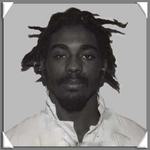
Hicks was convicted on two counts of murder and was sentenced to death. Two weeks prior to his scheduled execution, with the help of a volunteer attorney, Hicks received a stay. The Playboy Foundation became interested in this claim of innocence and supplied funds for a reinvestigation after he passed lie detector tests. At retrial, Hicks was acquitted and released after evidence established Hicks’s alibi and showed that eyewitness testimony against him at his original trial was perjured
Read “The Ordeal of Larry Hicks,” by Nile Stanton, a defense attorney for Larry Hicks
Thomas Pearson
Ohio — Conviction: 1976 , Appellate Acquittal: 1980
In September 1976, Avila Chambliss implicated himself, Thomas Pearson, and Samuel Taylor in the murder and robbery of Joseph Witcraft. Pearson was tried individually before a jury that convicted him of aggravated murder, aggravated robbery and kidnapping. As a result, the trial court sentenced him to death. Pearson’s conviction was vacated on appeal because the only evidence connecting the defendants with the crime was the uncorroborated testimony of an accomplice. Because Pearson’s conviction was vacated for insufficient evidence, the case was ineligible for retrial.
Pearson is one of 12 additional exonerations discovered by DPIC in 2021 and 2022 during its research of all modern-era death sentences. See a list of all of the additional exonerations here.
Sources
Sources: State v. Pearson, 405 N.E.2d 296 (Ohio 1980).
Year of Release: 1979 ⌃
Gary Beeman
Ohio — Conviction: 1976 , Acquitted: 1979

Beeman was convicted of aggravated murder and sentenced to death. He maintained that he was innocent and that Claire Liuzzo, an escaped prisoner who testified as the main prosecution witness at Beeman’s first trial, was the actual killer. In 1978 the District Court of Appeals granted Beeman a new trial, finding that Beeman’s right to cross-examine Liuzzo had been unfairly restricted at his first trial. On retrial five witnesses testified that they heard Liuzzo confess to the murder and Beeman was acquitted. (Ashtabula Star Beacon, Oct. 5, 1979, p.1; Sept. 29, 1979, p.14).
Year of Release: 1978 ⌃
Earl Charles
Georgia — Conviction: 1975 , Charges Dismissed: 1978
Charles was convicted on two counts of murder and sentenced to death. He was released when evidence was found that substantiated his alibi. (State v. Charles, No. 23,392 (Ga. Super. Ct., 7/5/78)). After an investigation, the district attorney announced that he would not retry the case. Charles won a substantial settlement from city officials for misconduct in the original investigation.
Read “Capital Punishment’s Deathly Injustice,” by John Boger in The Los Angeles Times
Jonathan Treadaway
Arizona — Conviction: 1975 , Acquitted: 1978
Treadaway was convicted of sodomy and first degree murder of a six-year-old and sentenced to death. The conviction was overturned, and he was acquitted of all charges at retrial by the jury after 5 pathologists testified that the victim probably died of natural causes and that there was no evidence of sodomy. Members of the jury reported noted that prosecutors had failed to prove that Treadaway was even inside the victims’ home. (State v. Treadaway, 568 P.2d 1061 (1977))
Gary Radi
Montana — Conviction: 1975 , Acquitted: 1978
Gary Radi was convicted and sentenced to death in 1975 for the murder of a grocery store employee during the course of a robbery. Radi was tried together with three codefendants. Edwin Bushman received immunity from prosecution in exchange for testimony implicating the four defendants, and the defense presented no evidence at trial. The Montana Supreme Court reversed Radi’s and the other defendants’ convictions, ruling that the defendants should have been tried separately. In 1978, Radi was acquitted on retrial.
Radi is one of 12 additional exonerations discovered by DPIC in 2021 and 2022 during its research of all modern-era death sentences. See a list of all of the additional exonerations here.
Sources
Sources: Fitzpatrick v. McCormick, 869 F.2d 1247 (9th Cir. 1989).
Year of Release: 1977 ⌃
Delbert Tibbs
Florida — Conviction: 1974 , Charges Dismissed: 1977

Tibbs was sentenced to death for the rape of a sixteen-year-old white girl and the murder of her companion. Tibbs, a black theological student, was convicted by an all-white jury on the testimony of the female victim whose testimony was uncorroborated and inconsistent with her first description of her assailant. The conviction was overturned by the Florida Supreme Court because the verdict was not supported by the weight of the evidence, and the state decided not to retry the case. Tibbs’ former prosecutor said that the original investigation had been tainted from the beginning and that if there was a retrial, he would appear as a witness for Tibbs. (Tibbs v. State, 337 So.2d 788 (Fla. 1976)).
Watch “Barred From Life’s” interview with Delbert Tibbs
Read “The Other 13 Survivors…,” by Sydney Freedberg in The St. Petersburg Times
UPDATE: Delbert Tibbs died on Nov. 23, 2013.
Year of Release: 1976 ⌃
Thomas Gladish
New Mexico — Conviction: 1974 , Charges Dismissed: 1976
The four were convicted of murder, kidnapping, sodomy, and rape and were sentenced to death. A subsequent investigation by the Detroit News uncovered lies by the prosecution’s star witness, perjured identification given under police pressure, and the use of poorly administered lie detector tests. A state district judge dismissed the original indictments and the men were released after the murder weapon was traced to a drifter from South Carolina who admitted to the killing. (Detroit News Magazine, 1/11/76 and Detroit News, 12/16/75).
Richard Greer
New Mexico — Conviction: 1974 , Charges Dismissed: 1976
The four were convicted of murder, kidnapping, sodomy, and rape and were sentenced to death. A subsequent investigation by the Detroit News uncovered lies by the prosecution’s star witness, perjured identification given under police pressure, and the use of poorly administered lie detector tests. A state district judge dismissed the original indictments and the men were released after the murder weapon was traced to a drifter from South Carolina who admitted to the killing. (Detroit News Magazine, 1/11/76 and Detroit News, 12/16/75).
Ronald Keine
New Mexico — Conviction: 1974 , Charges Dismissed: 1976
The four were convicted of murder, kidnapping, sodomy, and rape and were sentenced to death. A subsequent investigation by the Detroit News uncovered lies by the prosecution’s star witness, perjured identification given under police pressure, and the use of poorly administered lie detector tests. A state district judge dismissed the original indictments and the men were released after the murder weapon was traced to a drifter from South Carolina who admitted to the killing. (Detroit News Magazine, 1/11/76 and Detroit News, 12/16/75).
Clarence Smith
New Mexico — Conviction: 1974 , Charges Dismissed: 1976
The four were convicted of murder, kidnapping, sodomy, and rape and were sentenced to death. A subsequent investigation by the Detroit News uncovered lies by the prosecution’s star witness, perjured identification given under police pressure, and the use of poorly administered lie detector tests. A state district judge dismissed the original indictments and the men were released after the murder weapon was traced to a drifter from South Carolina who admitted to the killing. (Detroit News Magazine, 1/11/76 and Detroit News, 12/16/75).
John Thomas Alford
North Carolina — Conviction: 1975 , Acquitted: 1976
John Thomas Alford was convicted and sentenced to death in 1975. Alford was tried with a codefendant who confessed to the murder. Alford presented evidence and witnesses that he was not at the scene of the crime, but he was not allowed to offer his codefendant’s confession as evidence of his innocence. The North Carolina Supreme Court reversed his conviction and sentence and ordered Alford be retried separately from his codefendant. At retrial, he was acquitted of all charges.
Alford is one of 12 additional exonerations discovered by DPIC in 2021 and 2022 during its research of all modern-era death sentences. See a list of all of the additional exonerations here.
Sources
Sources: State v. Alford, 222 S.E.2d 222 (N.C. 1976).
Year of Release: 1975 ⌃
Wilbert Lee
Florida — Conviction: 1963 , Pardoned: 1975
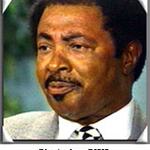
Although no physical evidence linked them to the deaths of two white men, Lee and Pitts’ guilty pleas, the testimony of an alleged eyewitness, and incompetent defense counsel led to their convictions. The men were sentenced to death but maintained their innocence. After their convictions, another man confessed to the crime, the eyewitness recanted her accusations, and the state Attorney General admitted that the state had unlawfully suppressed evidence. The men were granted a new trial (Pitts v. State 247 So.2d 53 (Fla. 1971)) but were again convicted and sentenced to death. They were released in 1975 when they received a full pardon from Governor Askew, who stated he was “sufficiently convinced that they were innocent.”
(Florida Times-Union, 4/23/98).
Read “The Other 13 Survivors…,” by Sydney Freedberg in The St. Petersburg Times
Freddie Pitts
Florida — Conviction: 1963 , Pardoned: 1975
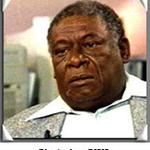
Although no physical evidence linked them to the deaths of two white men, Lee and Pitts’ guilty pleas, the testimony of an alleged eyewitness, and incompetent defense counsel led to their convictions. The men were sentenced to death but maintained their innocence. After their convictions, another man confessed to the crime, the eyewitness recanted her accusations, and the state Attorney General admitted that the state had unlawfully suppressed evidence. The men were granted a new trial (Pitts v. State 247 So.2d 53 (Fla. 1971)) but were again convicted and sentenced to death. They were released in 1975 when they received a full pardon from Governor Askew, who stated he was “sufficiently convinced that they were innocent.”
(Florida Times-Union, 4/23/98).
Read “The Other 13 Survivors…,” by Sydney Freedberg in The St. Petersburg Times
James Creamer
Georgia — Conviction: 1973 , Charges Dismissed: 1975
Creamer was sentenced to death for a murder allegedly committed with six other individuals who were sentenced to life. (Cobb Superior Court, Cobb County, Georgia, Certified record) After an investigation by the Atlanta Constitution, a federal judge declared that the prosecution had withheld and destroyed evidence, a witness admitted she had lied in court, and another man confessed to the crimes (Emmett v. Ricketts, 397 F. Supp 1025 (N.D. Ga. 1975)). The convictions against all seven men were overturned, and charges were later dropped. An appellate judge in a related case stated that all seven individuals in this case were sentenced to life. The Clerk of the Cobb Superior Court has certified that Creamer alone was originally sentenced to death. Creamer was resentenced to life in prison in September 1973.
Christopher Spicer
North Carolina — Conviction: 1973 , Acquitted: 1975
In 1975, a North Carolina jury acquitted Christopher Spicer of the murder of Donnie P. Christian. Spicer was convicted of the crime in September 1973, but the conviction was overturned the following year by the North Carolina Supreme Court. (State v. Spicer, 204 SE 2d 641 (1974)). At Spicer’s trial, the State offered the testimony of Charles Pennington, a jailhouse snitch. Although the defense introduced two witnesses who testified that Pennington and Spicer were never cell mates, Pennington testified that Spicer admitted to the crime while he and Spicer shared a cell. After sharing this “confession” with police, Pennington’s bond was reduced from $5,000 to $400 and he was released from jail. In overturning Spicer’s conviction, the North Carolina Supreme Court held that the trial judge committed reversible error by not allowing defense counsel to cross examine Pennington “to discover whom the witness was indebted for such favors and to ascertain to what extent the favors colored his testimony against Spicer.” Id. at 646. Defense counsel was unable to question Pennington as to who was paying the living expenses of Pennington and his wife, neither of whom was working at the time. The court also found that the trial court committed reversible error when it “succeeded in pressuring the defendant and his counsel into withdrawing the request for an appropriate instruction” with regard to how the jury should scrutinize the testimony of another witness for the State, Bertie Brailford. (Id. at 648). At Spicer’s retrial, the jury took only 15 minutes to unanimously acquit him. (Wilmington Morning Star, February 21, 1975).
Howard Jackson Stack
Georgia — Conviction: 1973 , Charges Dismissed: 1975
Howard Jackson Stack was sentenced to death in 1973 in Fulton County, Georgia. Stack’s codefendant pled guilty to voluntary manslaughter and received a sentence of 15 years in exchange for testifying against Stack. In 1975, the Georgia Supreme Court reversed Stack’s conviction and death sentence on the grounds that the trial court had improperly allowed the operator of a lie detector test to testify in court. Prosecutors declined to retry Stack.
Stack is one of 12 additional exonerations discovered by DPIC in 2021 and 2022 during its research of all modern-era death sentences. See a list of all of the additional exonerations here.
Sources
Sources: Stack v. State, 214 S.E.2d 514 (Ga. 1975).
Year of Release: 1974 ⌃
Samuel A. Poole
North Carolina — Conviction: 1973 , Charges Dismissed: 1974
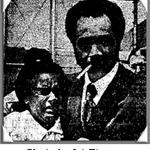
After being convicted of first degree burglary and given a mandatory death sentence, Poole had his conviction overturned by the N.C. Supreme Court because the case lacked substantial evidence that Poole was the person who broke into the home.
State v. Poole, 203 S.E.2d 786 (N.C. 1974).
Anthony Carey
North Carolina — Conviction: 1973 , Charges Dismissed: 1974
Anthony Carey was tried and sentenced to death along with his brother, Albert Carey, in 1973 in Mecklenburg County, North Carolina. Neither of the brothers were accused of committing the murder in question; however both were sentenced to death as accomplices. Anthony Carey was allegedly a passenger in a car parked multiple blocks away from where the crime was committed and did not handle the gun involved in the murder. Anthony Carey’s conviction relied primarily on the testimony of the shooter, James Mitchell, who had entered into a plea deal with prosecutors. Mitchell recanted his testimony after the Careys were convicted but before the trial of two other codefendants. Both brothers’ death sentences were reversed in 1974 by the North Carolina Supreme Court. Albert Carey was retried and sentenced to death again, but the prosecutor dropped charges against Anthony Carey because there was insufficient evidence to retry him without Mitchell’s testimony.
Carey is one of 12 additional exonerations discovered by DPIC in 2021 and 2022 during its research of all modern-era death sentences. See a list of all of the additional exonerations here.
Sources
Sources: State v. Carey, 206 S.E.2d 213 (N.C. 1974); Ed Martin, Death Row: Legal rulings sent some from brink of death to freedom, The Charlotte News, March 15, 1984.
Year of Release: 1973 ⌃
David Keaton
Florida — Conviction: 1971 , Charges Dismissed: 1973
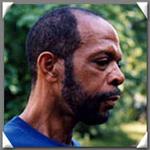
On the basis of mistaken identification and coerced confessions, Keaton was sentenced to death for murdering an off-duty deputy sheriff during a robbery. The State Supreme Court reversed the conviction and granted Keaton a new trial because of newly discovered evidence. Charges were dropped and he was released after the actual killer was identified and convicted. (Keaton v. State, 273 So.2d 385 (1973)).
Read “The Stigma is Always There,” by Sydney Freedberg in The St. Petersburg Times.
UPDATE: Mr. Keaton died in 2015 at age 63.
DPIC uses a number of resources when adding cases to the above list, including court opinions, media coverage, and conversations with those directly involved in the cases. The earlier cases in the list are based heavily on the research of Hugo Adam Bedau and Michael L. Radelet. (See, e.g., Hugo Bedau and Michael Radelet, “Miscarriages of justice in potentially capital cases,” 40 Stanford Law Review 21 (1987); M.Radelet, H. Bedau, and C. Putnam, In Spite of Innocence, Northeastern University Press (1992); see also M. Radelet et al., “Prisoners released from death rows since 1970 because of doubts about their guilt,” 13 Thomas M. Cooley Law Review 907 (1996)).